In the early 1970s, a feminist-environmentalist coalition consolidated a liberal, anti-growth majority on the San Jose City Council. Janet Gray Hayes was elected mayor in 1974 as a final blow to the growth machine. Since then, San Jose has been governed by a liberal-managerial regime focused on growth management, neighborhood services, and fiscal responsibility.
Subsequently, a general plan was adopted to create an urban service area (also known as an urban growth boundary) within existing city limits, restrict development in the eastern foothills, and defer growth in Coyote Valley. San Jose annexed communities like Campbell and Cupertino in the west, while in the north local governments could not expand due to San Francisco Bay. Additionally, the city adopted a “pay-as-you-grow” system for financing new infrastructure. However, San Jose’s new policies did not stop or significantly restrict growth but instead directed it toward incorporated areas and mitigated its costs. The city’s housing stock and population steadily increased during subsequent decades.
#1 San Jose Airport, passenger terminal, 1973
#2 San Jose Civic Auditorium, 1975
#3 Pellier Park near completion, San Jose, 1977
#4 The Fox Theater, San Jose, 1970s
#5 Hi-Life Restaurant, originally Torino Hotel and boarding house, 1970s
#6 Johnson Grocery Store, 1970s
#7 San Jose Public Library San Jose Public Library San Jose Public Library branch, 1102 East Santa Clara Street, 1975
#8 Cuban Restaurant at 625 North Sixth Street, 1975
#9 DeSaisset House on North San Pedro Street, 1970
#10 San Jose Center for the Performing Arts, 1979
#11 Roberto Adobe on Lincoln Avenue, San Jose, 1976
#12 San Jose Street featuring Bank of the West, Bank of America, Disco Inferno 200, Hotel De Anza, American Savings Bus and traffic, 1970
#13 Associated Oil Gas Station, San Jose, 1974
#14 San Jose State students marching on William Street, near Tenth Street, in San Jose, 1970
#15 Fire Station No. 18 located at 4430 South Monterey Road, San Jose, 1970s
#16 Hospital admitting room, 1972
#17 Cambrian School, San Jose, 1975
#18 Maynard House in Willow Glen. Photos probably taken for 1977 Historic Resources Inventory by Patty Loach and Bill Zavalaris, 1970
#19 The Liberty Theatre was located on South First Street near the corner of Post Street, 1975
#20 The Santa Clara County Courthouse and Hall of Records, located on North First Street between St. John Street and St. James Street, 1970s
#21 San Jose Museum of Art, 1975
#22 Tower at San Jose State University, 1975
#23 Ericson’s Blacksmith Shop (M. E. Carlson Blacksmithing), 1970
#24 Hester House, San Jose, 1970
#25 This little board and batten railroad station at Coyote is the only one of it kind remaining between San Jose and Watsonville, 1975
#26 Willow Glen School, June 1971
#27 Detail of exterior, Winchester Mystery House, 1970
#28 Series of five professional images of staircases and hallways inside the Winchester Mystery House, 1979
#29 Notre Dame College pergola (date?), Prevost Street, San Jose, 1970s
#30 Winchester Mystery House, San Jose, May 13, 1973
#31 Shiras House, Grant Street and Almaden Avenue, San Jose, 1970s
#32 Roberto Adobe (1839), 770 Lincoln Avenue, San Jose, CA, 1970s
#33 Happy Hollow Zoo Ramp, San Jose, 1974
#34 Dwyer’s Milk House, (brick, date uncertain) 82 South Ninth Street, San Jose, 1970s
#35 Thomas Kell house (1848), Curtner Avenue & Almaden Road, San Jose, 1970s.
#36 Winchester House Historic Site Dedication, 1974.
#37 Jay McCabe house, 120 Locust Street, San Jose, 1970s
#38 Winchester House, San Jose, 1973
#39 Arrival of the kiosks on flat bed truck for installation at Pellier Park, 1976
#40 Winchester Mystery House exterior, San Jose, 1979
#41 Erecting the wall around Pellier Park, 1976
#42 Students lining up to register for classes at San Jose State College in the early 1970s.
#43 Home of Thomas Fallon, 175 West Saint John Street, 1975
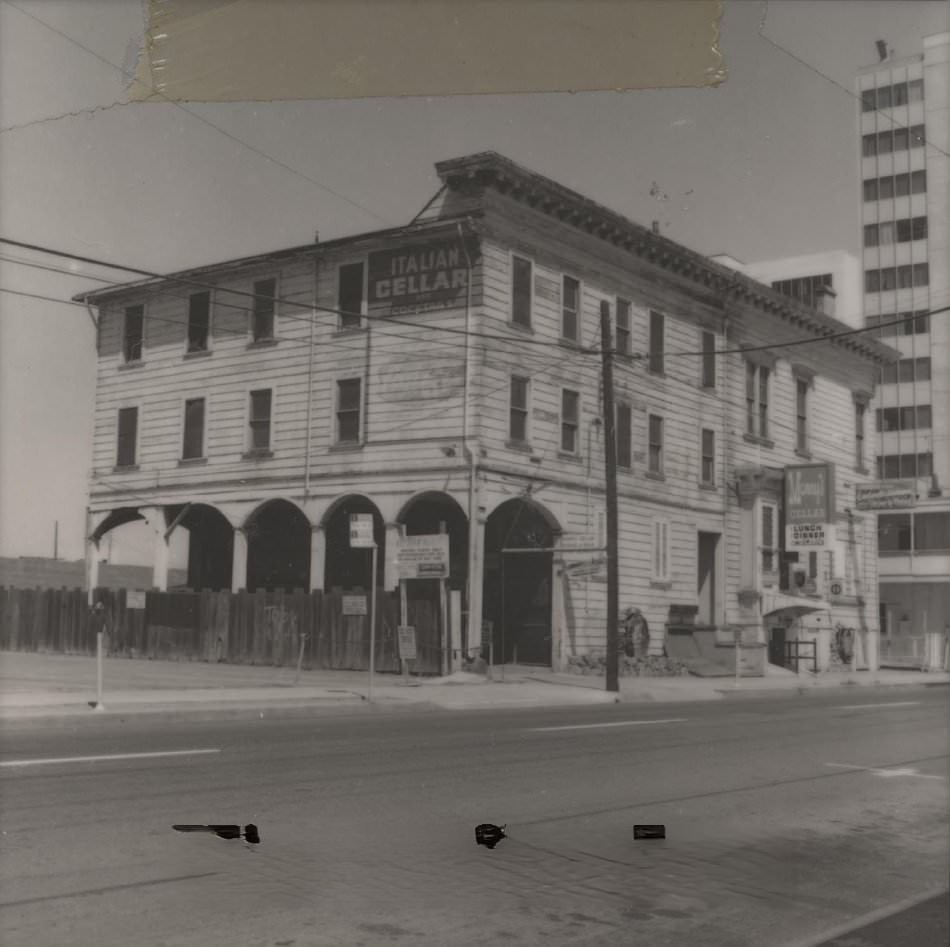
Thomas Fallon, who raised the American flag over San Jose in July, 1846, built this home in 1859 at 175 West Saint John Street (formerly San Augustine Street). Fallon later served as mayor of San Jose. The builing, added to in later years, has been a restaurant well known to several generations of San Joseans.
#44 San Jose’s Japanese Buddhist Temple, 1975
#45 The Charles M. Richards home at 1550 Hicks Avenue in the Willow glen area is a monument to one of the city’s great contributors to San Jose culture, 1975
#46 Telephone Building, 1972
#47 Dergans’ Saloon, 1970
#48 The Dairy, north of Metcalf Road – Horse Livery & Stable, 1978
#49 The Dairy, north of Metcalf Road – Wagon Barn, 1978
#50 Congress Junction, 1970s
#51 Carpenter’s Gothic residence, 1970s
#52 Two-story Victorian house in San Jose, 1970s
#53 Laguna School, 1970s
#54 The Dairy, north of Metcalf Road – Milk House, 1978
#55 The Dairy, north of Metcalf Road – General View, 1978
#56 Men and horses in field with hay loading equipment, 1975
#57 The Dairy, north of Metcalf Road – Feed Barn, 1978
#58 The Dairy, north of Metcalf Road – Feed Barn, 1978
#59 Site of Peralta Adobe dedication 1976
#60 Farrells Saloon corner of First and St John’s streets, 1972
#61 H. Ward Wright residence, multi-story Victorian, 1970s
#62 Airport School, 1970s
#63 Two-story Victorian house, 1970s
#64 H. Ward Wright residence, multi-story Victorian house, 1970s
#65 Two-story Victorian house, palm tree, 1970s
#66 The old Bayside Canning Company building, after it became boat storage, 1978
#67 Arrival of kiosks at Pellier Park, 1976
#68 Peralta Adobe restoration, 1976
#69 The Dairy, north of Metcalf Road – Milk House, 1978
#70 The Lick mansion, 1975
#71 Cars parked in a lot next to the side of the Peralta Adobe, with the Lusardi building behind it, 1976
#72 Rooftop view of Peralta Adobe before re-construction, 1970s
#73 Three-story Carpenter’s Gothic Victorian, with stained glass window, 1970s
#74 Murphy Building, 1975
#75 Peralta Adobe during restoration, 1976
#76 Fountain Oaks Drive, 1970s
#77 George Bowman Residence, three-story Victorian, 1970s
#78 Edwin Markham’s Residence, 432 S. 8th Street, 1975
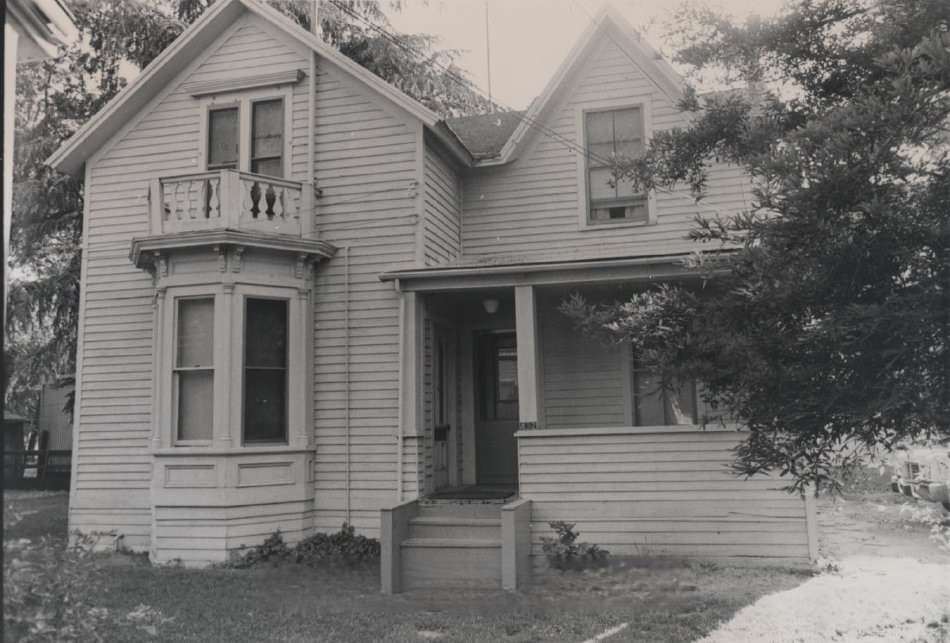
Edwin Markham's Residence, 432 S. 8th Street This is the home of Edwin Markham, San Jose's resident poet from 1869 to 1889, and it is now a California State Historical Landmark. Located at 432 South 8th Street, it is owned by San Jose State University and at one time was used as an infirmary. Markham wrote his famed "Man with the Hoe" in the room the Edwin Markham Poetry Society now uses for annual meetings.
#79 Reed residence, 136 South 13th Street, 1975
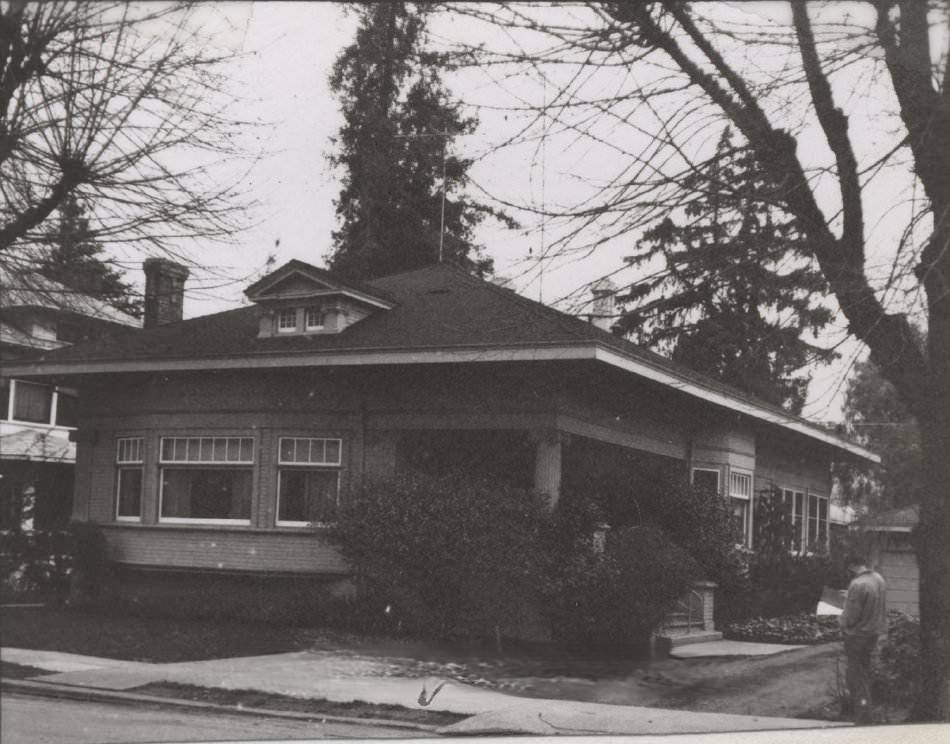
A bungalow style home built in the year of the earthquake (1906) is the residence at 136 South 13th Street, the home of Frazier O. Reed, grandson of James Frazier Reed, who was one of the leaders of the Reed-Donner party, and who later laid out the Reed Addition of downtown San jose.
#80 Orchard Supply Hardware warehouse, 1979
#81 Hayes-Chynoweth Mansion, 1979
#82 Charles Crothers Residence, 97 South 13th Street, 1975
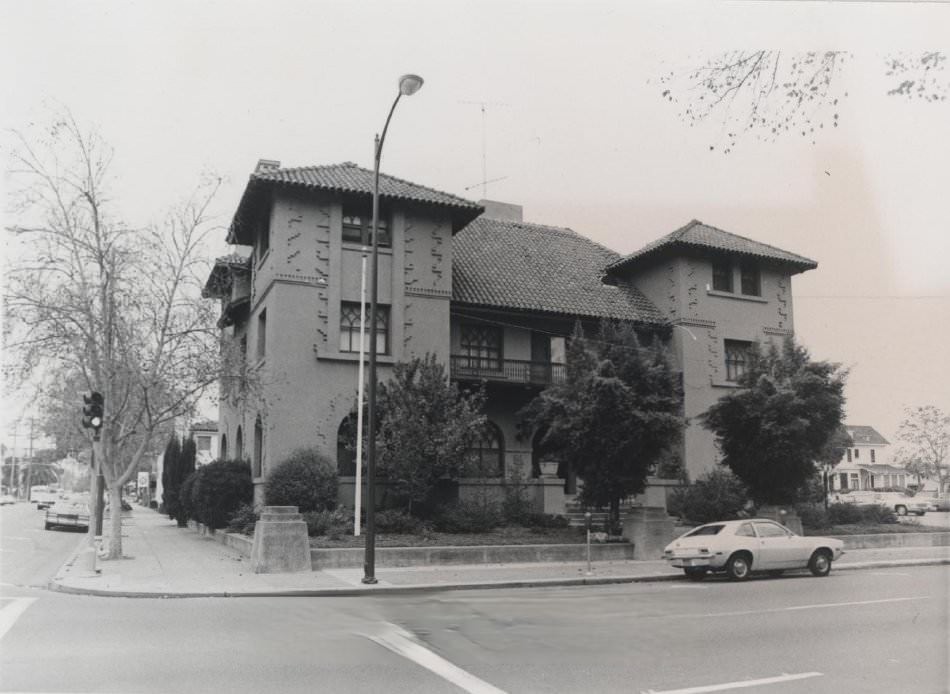
Greatly altered from its original appearance is the old Charles Crothers home at 97 South 13th Street, built by the realtor in 1910 and now used as a board and care home. Charles Crothers was chairman of the building comittee when the old quad at San Jose State University was being built. His brother was executor of the estate of Comstock King, James G. Fair, and of the last will of Mrs. Leland Stanford. Crothers Road is named for the family.
#83 A. D. M. Cooper residence, 1975
#84 I.O.O.F. building, 1975
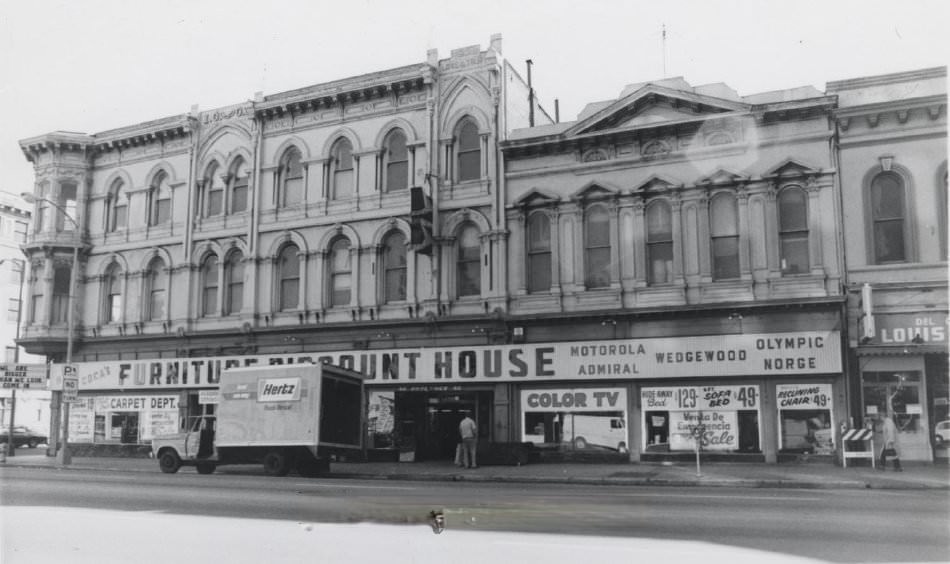
The three-story I.O.O.F. (Odd Fellows) building on the southwest corner of Third and Santa Clara Streets is one of the best preseved of the brick blocks built prior to 1900. The structure was built in 1885 by the Odd Fellows Hall Association. The third floor was used as a residence for members.
#85 Trinity Episcopal Church, 1975
#86 Christian Science Church, 1975
#87 First Universalist Unitarian Church, 160 North Third Street, 1975
#88 Mexican Independence Day Parade, 1974
#89 Montgomery Hotel, 1975
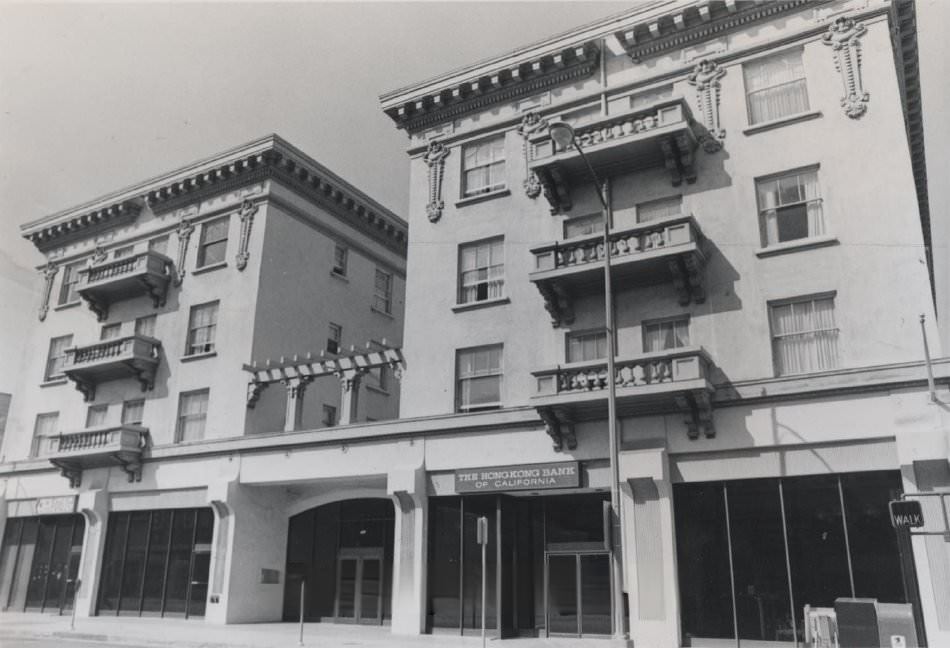
The Montgomery Hotel which opened in July, 1911 is now a hotel for senior citizens. Four stories and a full basement, the building at 211 South First Street has shops on the ground floor and rooms above. The hotel takes its name from T. S. Montgomery, major developer of downtown San Jose three-quarters of a century ago.
#90 Chiechi House – original location and at History Park, 1977
#91 Saint James Park, 1975
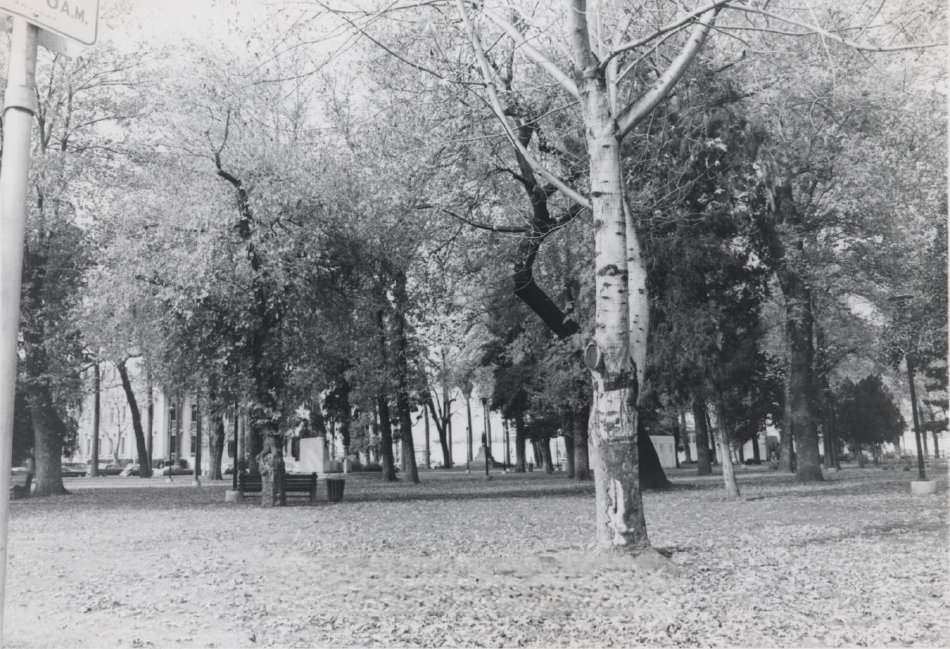
Saint James Park or Square, as it was called when it was surveyed by Chester Lyman neatly two years before California became a State and San Jose a city, has been the locale for many historic events. At one time it was offered as the site for the stste capitol building. Print used in, and above description taken from the book "San Jose
#92 408 S. 3rd Street, 1975
#93 Helen Guth Hall, College of the Pacific, 1975
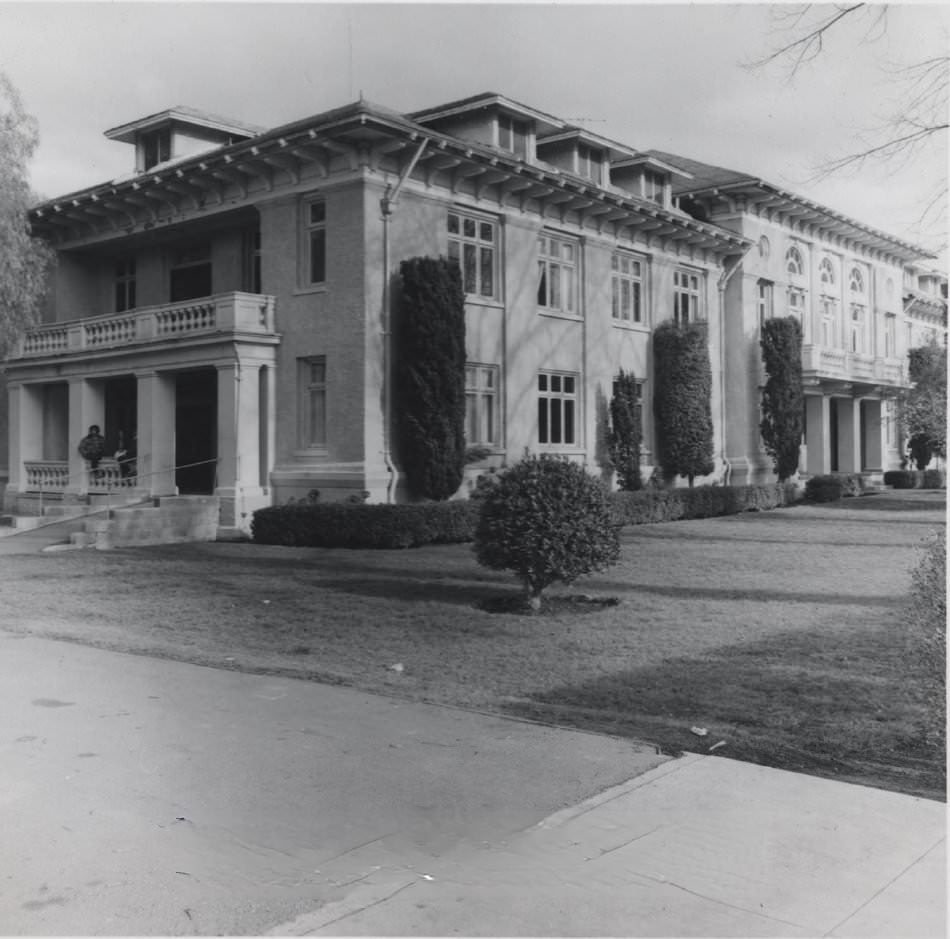
Helen Guth Hall, one of three original buildings of the College of the Pacific when it was housed in San Jose, is this 1909 structure on Elm Street around the corner from Emory Street. It is now in use by Bellarmine College Preparatory as an office building. This hall was originally a women’s dormitory, and the other two buildings of old College of the Pacific are the gymnasium and the one-story dining hall (now a chapel for Bellarmine boys).
#94 Hayes-Chynoweth Mansion, 1979
#95 1048 West San Fernando Street, 1975
#96 Saint Joseph’s Catholic Church, Market and San Fernando Streets, 1975
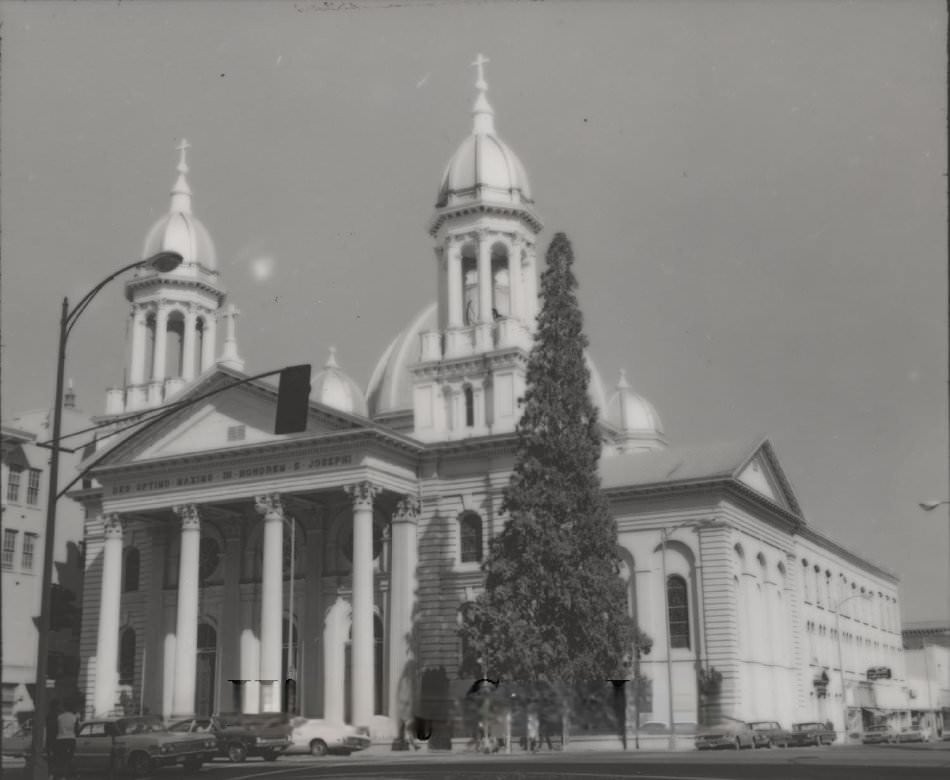
The present building replaced a wooden church which burned. Architect for Saint Joseph's was Brian J. Clinch, designer of more than 30 churches in California. Early pueblo residents, including Luis Maria Peralta, trudged through the mud of winter and the dust of summer, dodging squirrel holes in the plaza to attend mass on the site of the present impressive building.
#97 Alum Rock Canyon, 1975
#98 155 East Empire Street, 1975
#99 The Sainte Claire Club at St. James and 2nd Streets, 1975
#100 Letitia Building, 68 South 1st Street, 1975
#101 Saint Mary’s Catholic Church, 565 South Third Street, 1975
#102 Former home of Wehner family 2031 Story Road, 1975
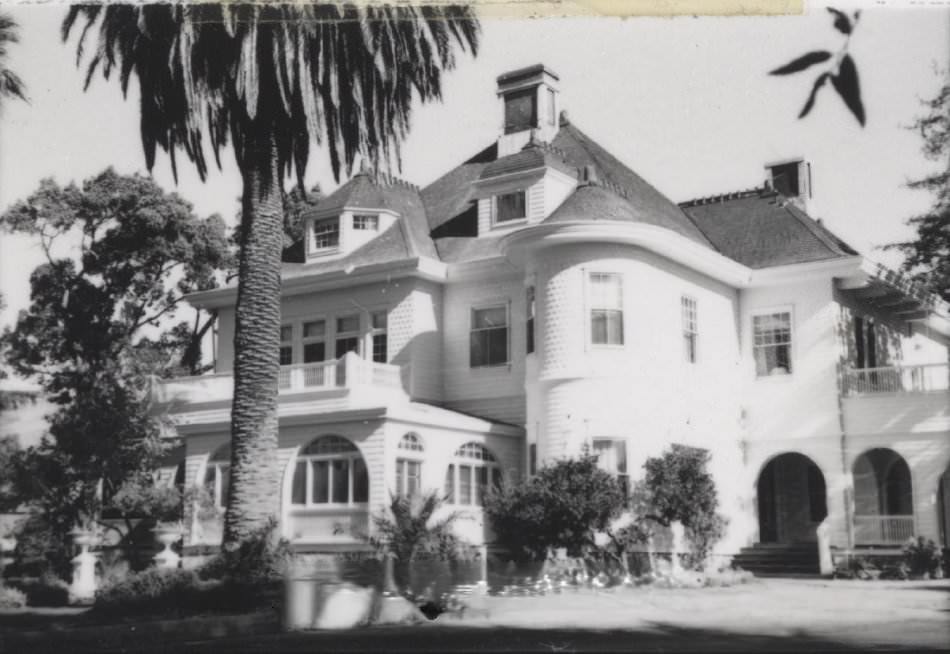
This old residnce was built in 1889 by the Wehner family, German imigrants who bought the Evergreen district ranch from John McCarthy the previous year. Ernest Wehner planted a vineyard which was sold to R. Cribari & Sons Company in 1943. The house is now part of the Villages, an adult community off San Filipe Road.
#103 The Ashworth-Remillard home, 755 Story Road, 1975
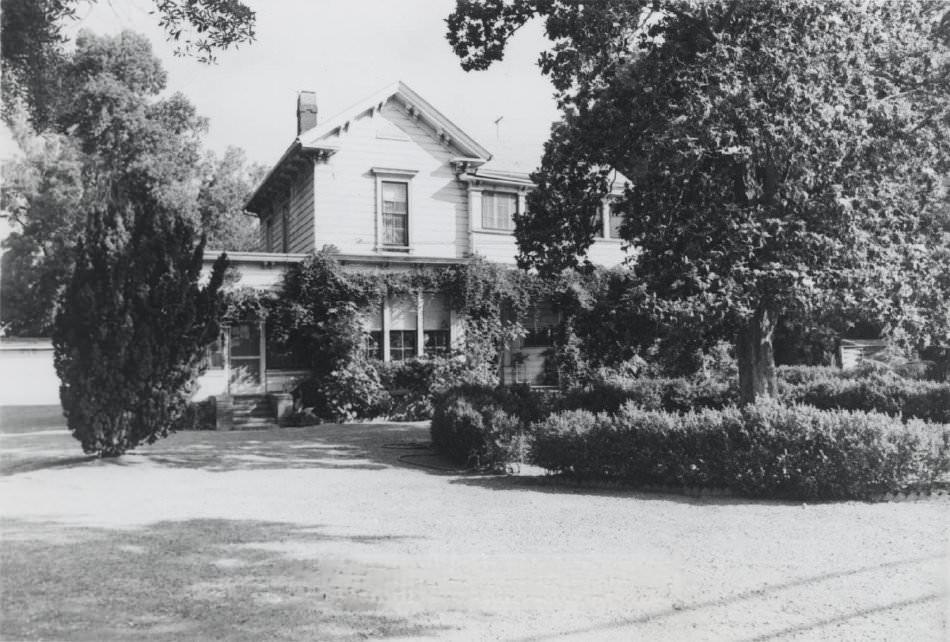
This old mansion hidden in the trees at 755 Story Road was built in the 1870s by James Ashworth and was sold to the Remillard brick works family in 1891. It became the summer home of Countess Lillian Remillard Dandini, and was been sold along with accompanying acreage for an industrial park.
#104 Knox-Goodrich building, 34 South First Street, 1975
#105 Home of pioneer rancher David Greenawalt, New Almaden Road, 1975
#106 Troy Steam Laundry, 722-724 Almaden Avenue, 1975
#107 Sand and gravel bunker, 790 Stockton Avenue, 1975
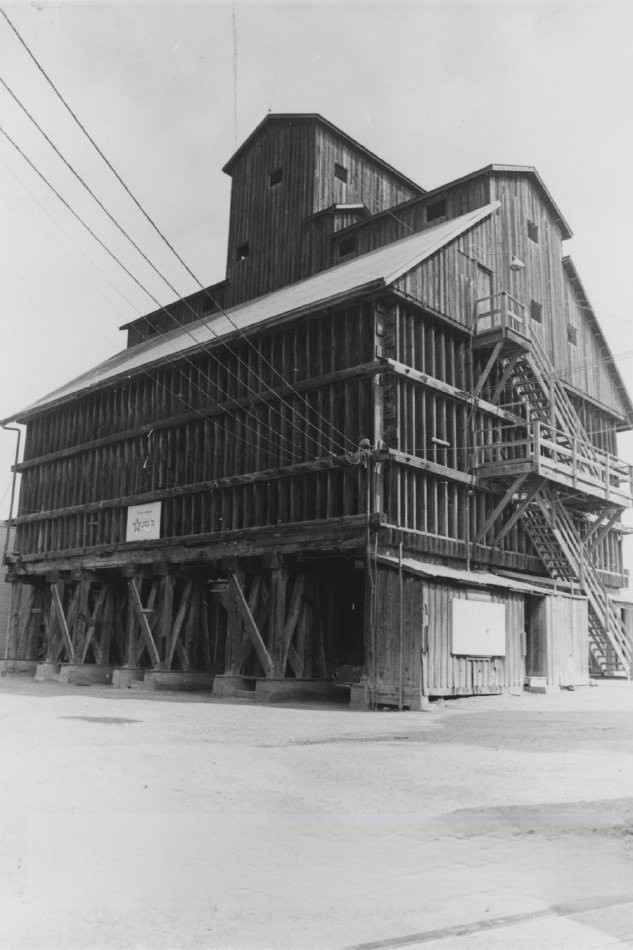
This multi-storied sand and gravel bunker at 790 Stockton Avenue is one of the few remaining and still in use. It was built of mammoth Douglas fir beams by the Central Supply Gravel Rock Company some 50 years or more ago and is architecturally and historically importantas an example of its type of structure.
#108 The Wardrobe Men’s Store in DeSassiet Building, San Jose, 1970s
#109 Home of Captain William Fisher, Monterey Road, 1975
#110 Home Union building, more recently Garden City Hofbrau, 1975
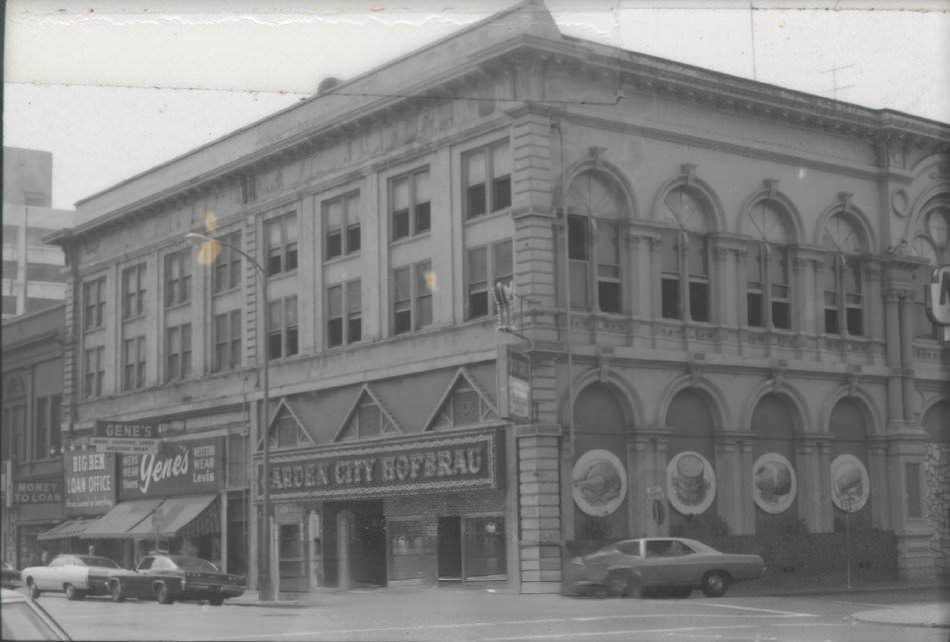
The old Home Union building, more recently Garden City Hofbrau, has beeen standing on the corner of Market and Post Streets since 1873. The second story once housed a gymnasium while the ground floor was the Home Union grocery. The facade on the Market side of the building was destroyed in the 1906 earthquake and present plans call for the removal of the structure.
#111 Layhodie, former home of Stephen Poole Sanders, 1975
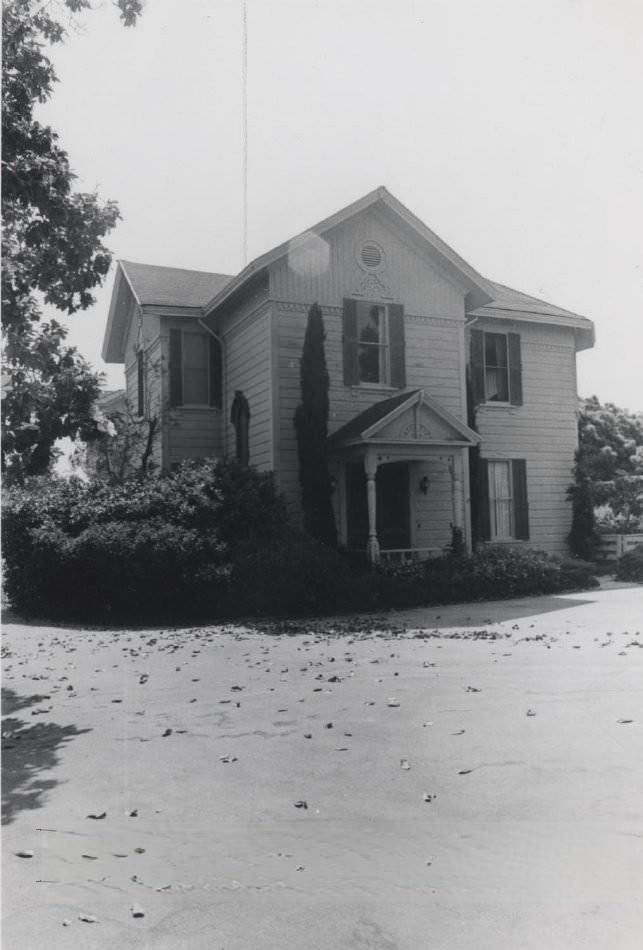
Layhodie, purchased in the 1880s by Stephen Poole Sanders, early-day photographer, is now the home of a greatnephew, Charles Pond. The Victorian mansion is located at 5051 Moorpark Avenue and contains hand-carved woodwork, Italian marble fireplace and original glass in the front door.
#112 G. W. Brewster home, 62 South 13th Street, 1975
#113 Quaker Meeting House, 1975
#114 First United Methodist Church, 1975
#115 Fourth Ward School, 408 Almaden, 1975
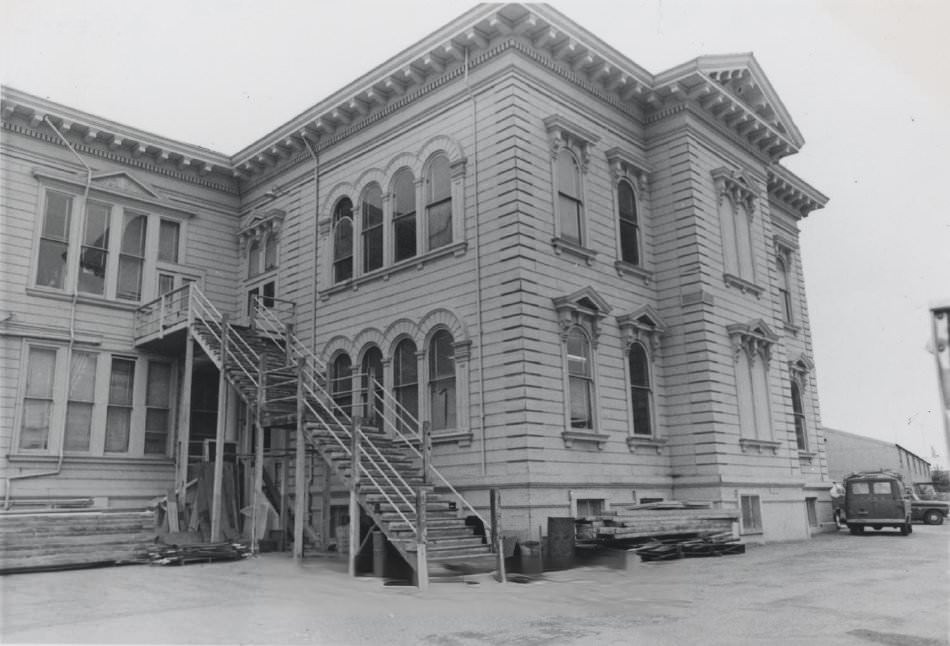
Fourth Ward School, 408 Almaden This is the old Fourth Ward School, later named the Lincoln School, built in 1874 at the cost of $17,000 and long condemned except for storage. The building, which came through the 1906 earthquake is at 406 Almaden Avenue and is an example of the Renaissance Revival style of architecture.
#116 Home of Theophilus Kirk, 1975
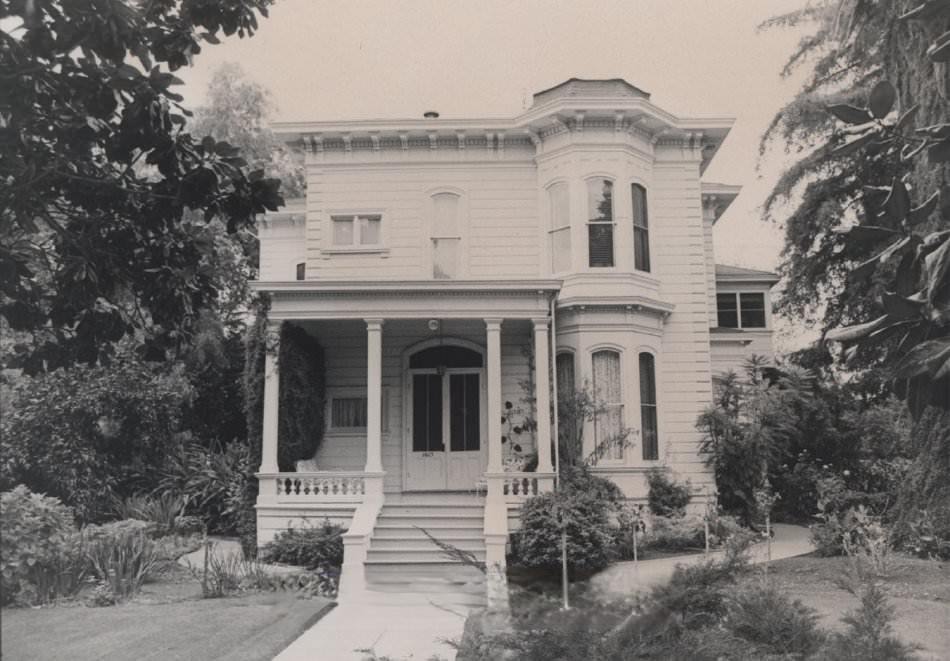
The Italianate mansion at 1615 Dry Creek Road is the house Theophilus Kirk built for his wife Lizzie in 1878, and is still owned by members of the family. Kirk and his brother Socrates built the Kirk Ditch Company, faint traces of which are still visible in the West Valley and which was an early irrigation experiment.
#117 156 East St. John Street, 1975
#118 Four Square Gospel Church, 1975
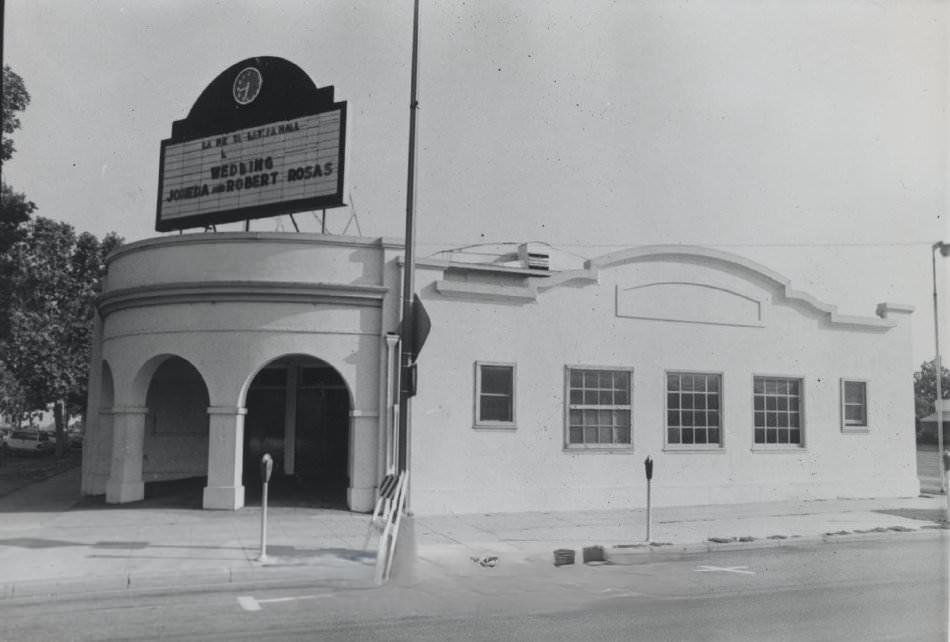
Four Square Gospel Church, 301 E. Santa Clara Street This familiar stucco building at 301 East Santa Clara Street, with its curved entrance and billboard perched on the roof, was remodeled as the Four-Square Gospel Church in 1943, and was dedicated by evangelist Aimee Semple McPerson. In recent years it has been used as a hall.
#119 Hotel St. James, 241 North 1st Street, 1975
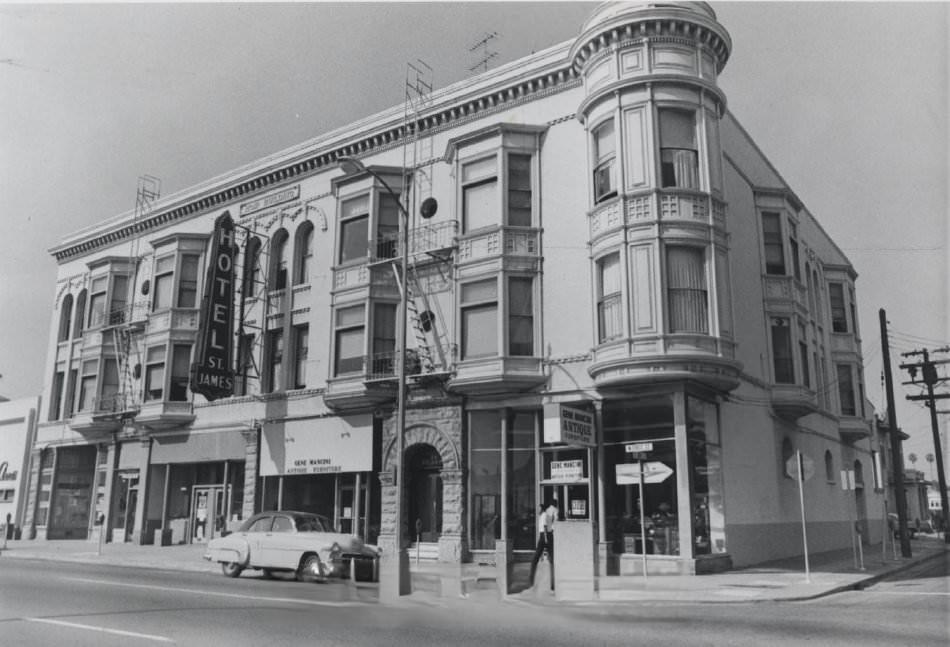
Hotel St. James, 241 North 1st Street The present Hotel St. James at 241 North 1st Street was originally named the Moir Building for the builder who constructed the three-story brick structure in the 1890s. It originally housed the Straford Hotel, but the name was changed when the original Hotel St. James was demolished in the 1930s. The Campen family has owned the building since 1927.
#120 Fredericksburg Brewery, 1975
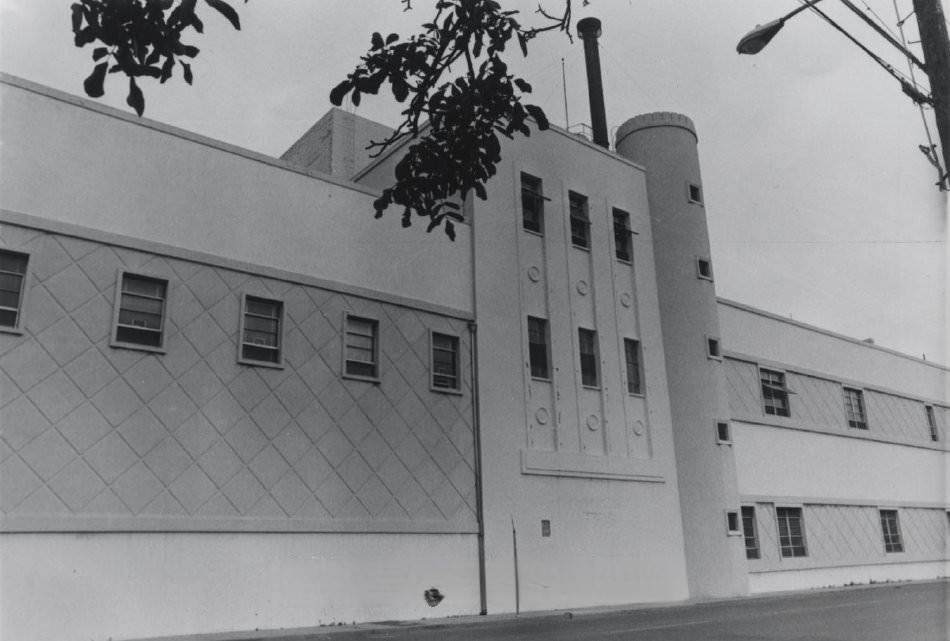
The old Fredericksburg Brewery has been a landmark on the Alameda for more than a century, and its buildings have been occupied by several different brewing companies over the years. Built in 1869, it was designed by Theodere Lenzen and has been remodeled over the years. The buildings were at the Alameda and Cinnabar Streets until they were demolished in the Winter of 1974.
#121 483 South 6th Street, 1975
#122 United Artist Theatre, 1975
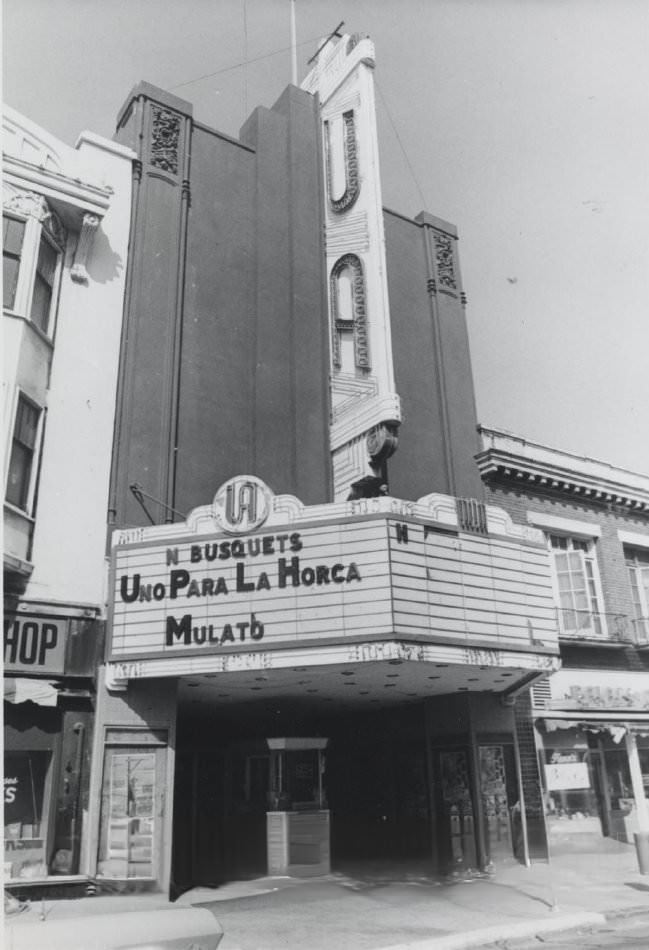
United Artist Theatre, 263 South 1st. Street The United Artist Theatre was built in 1918 and opened as the Hippodrome, a vaudeville stronghold for several years until it became the motion picture theatre called the American. In 1938 the building was remodeled and renamed the State.
#123 Ryland building, 1975
#124 County Courthouse, 191 North First Street, 1975
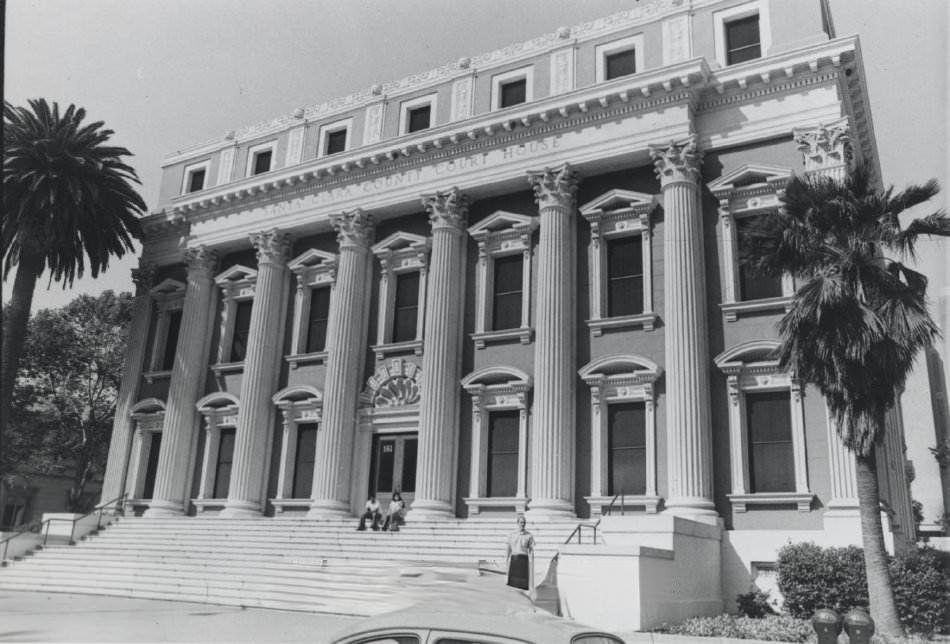
The County Courthouse at 191 North First Street, built in 1868, is one of the remaining architectural triumphs of Levi Goodrich, one of the city's pioneers. Sandstone for the building's construction came from Goodrich's quarry off the road to New Almaden. Originally three stories, earthquake and fire cut it down to two.
#125 Old Bank of America Building, 1975
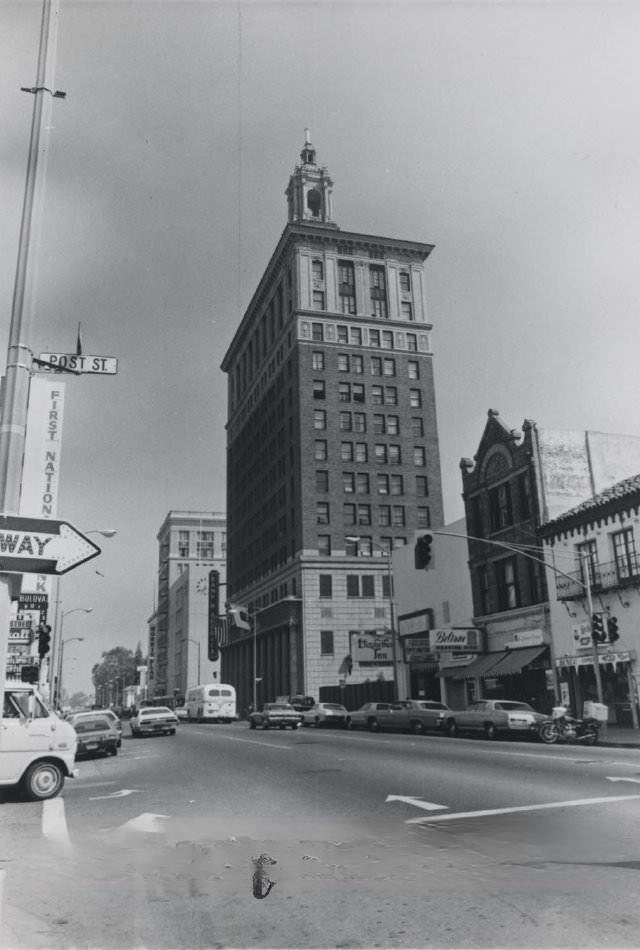
Built at Santa Clara and 1st Streets in 1927, during a skyscraper building boom, it's 13 plus stories still towers over more modern business buildings in the surrounding blocks. Until 1969 it was the headquarters for Bank of America in San Jose. A.P. Giannini, founder of the Bank of Italy, forerunner of the Bank of America, occupied the building at one time. There is still a branch of the bank in the building, plus offices.
#126 Lion’s Store, 2nd & San Jose Streets, 1975
#127 Hayes estate at 200 Edenvale Avenue, 1975
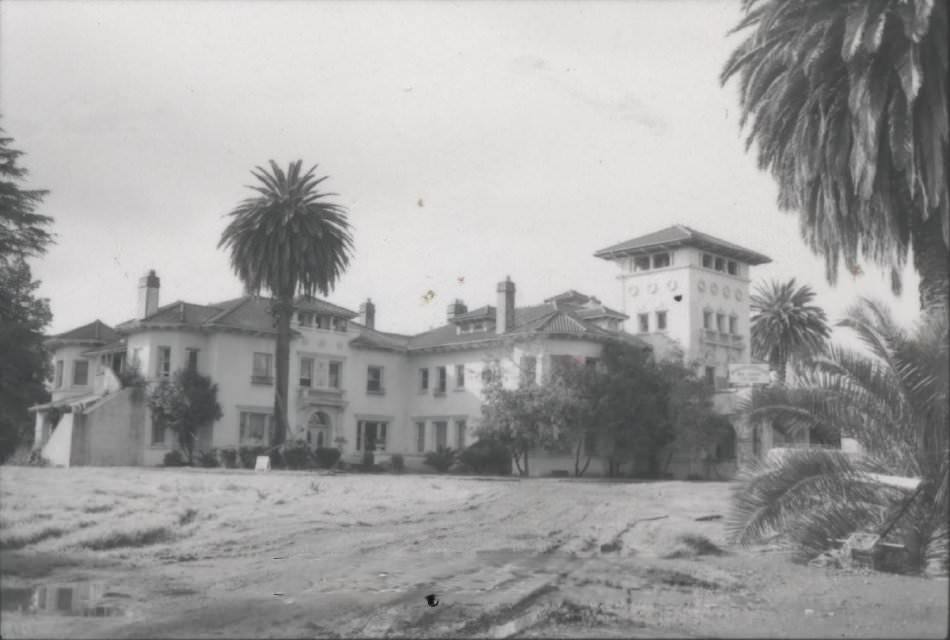
The fabulous Hayes estate at 200 Edenvale Avenue, built early in this century by European craftsmen, is now in use as a rehabilitation center. The Hayes family included owners of the San Jose Mercury who were prominant in San Jose's political life. The house has marble fireplaces and walnut and mahogany paneling.
#128 Plaza Park and downtown San Jose, 1975
#129 San Jose, Beech-Nut Life Savers Inc, 1970
#130 William Zanker family home, 1975
#131 The Naglee Mansion, 99 South 14th Street, 1975
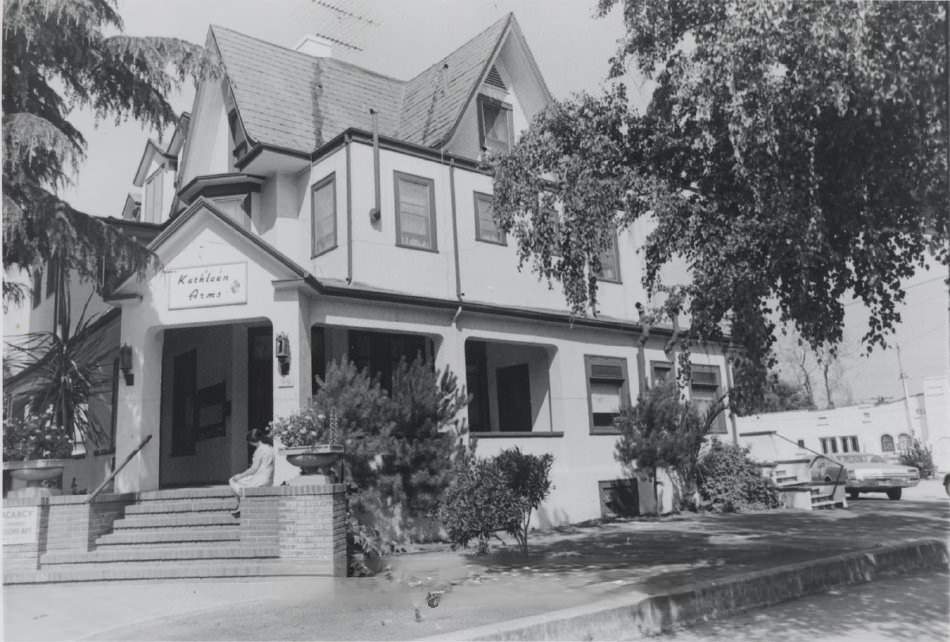
The Naglee Mansion, 99 South 14th Street The old Naglee mansion, once the center of a park-like, 140-acre tract, still stands on the northwest corner of San Fernando and 14th Street. It was the home of General Henry Morris Naglee, who came to California in 1847 as a captain in Colonel Jonathan D. Stevenson's First Regiment, New York Volunteers, and who later served as a brigadier general in the Civil War. He was instrumental in getting legislation passed in 1871-72 to have Alum Rock Canyon set aside as a park.
#132 Five Wounds Catholic Church, 1375 East Santa Clara Street, 1975
#133 bank at Old Bayside Canning Co., 1978
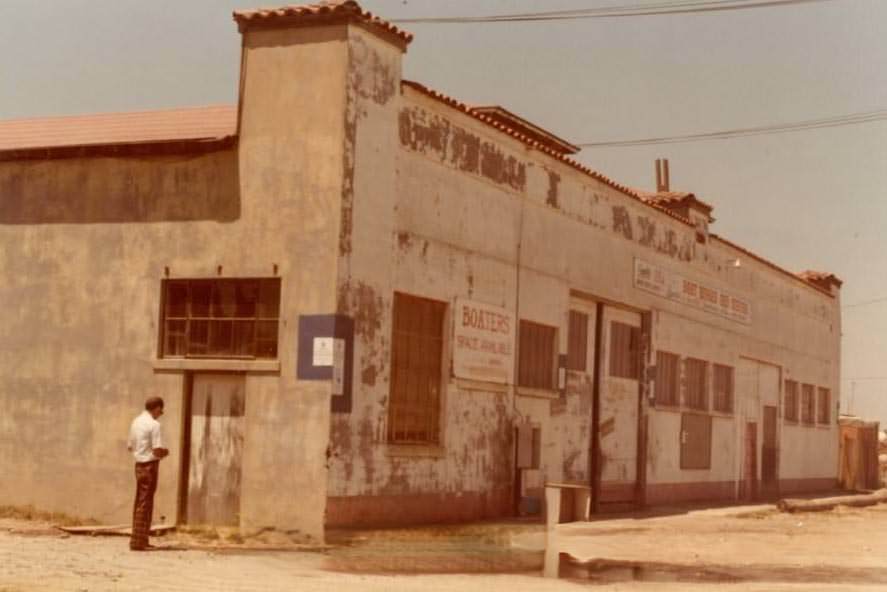
The old Bayside Canning building in Alviso; at one time the second largest cannery in the United States. It was owned by Chinese and managed by Thomas Foon Chew. Its main product was asparagus from the delta. When Tom Foon died, a funeral was held in San Francisco and thousands of people marched in his parade.


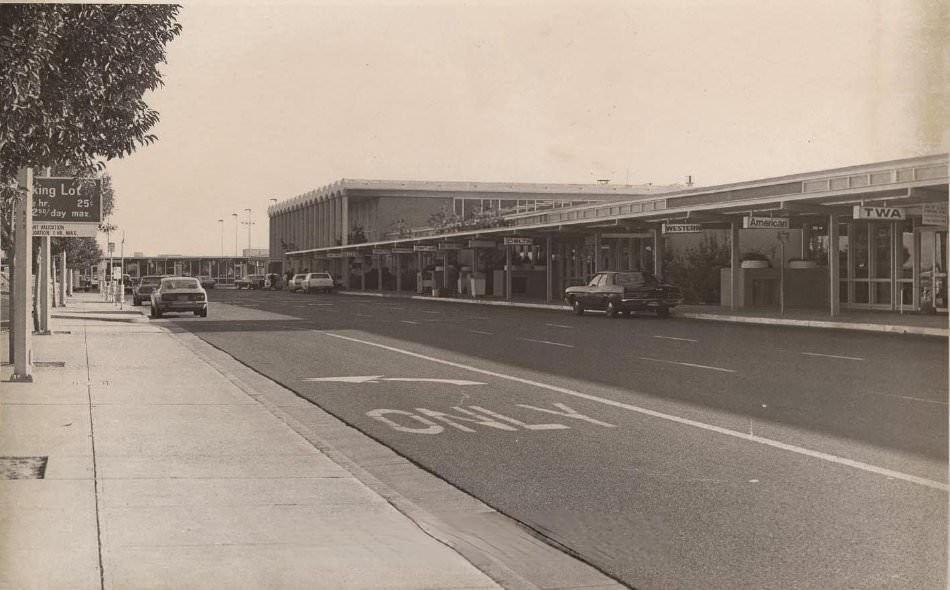
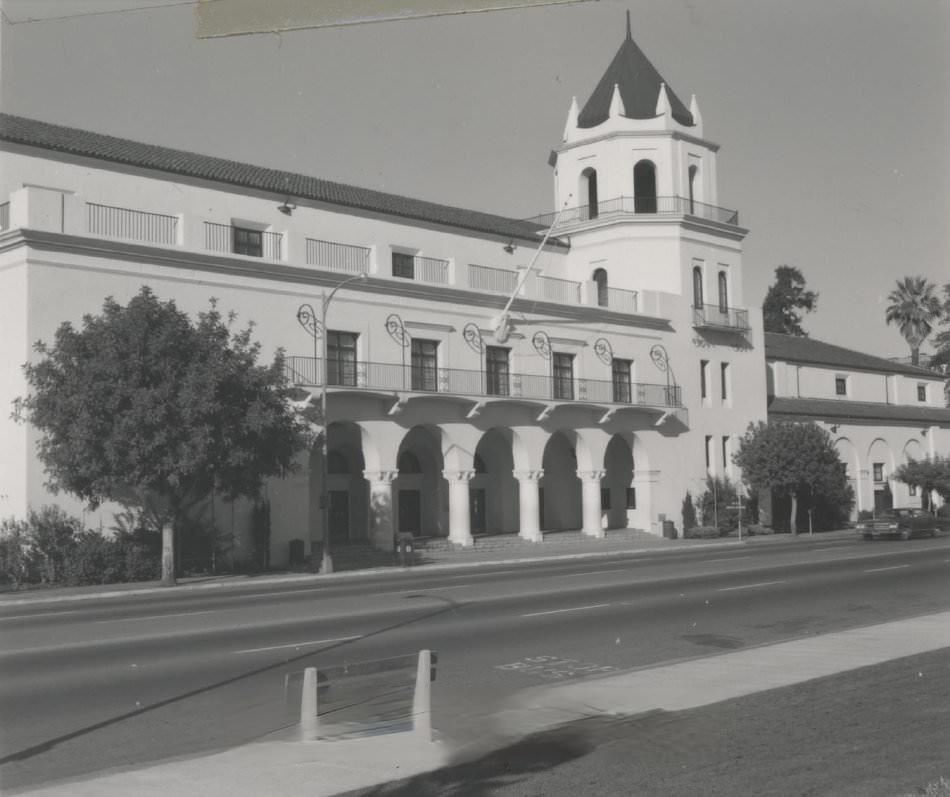
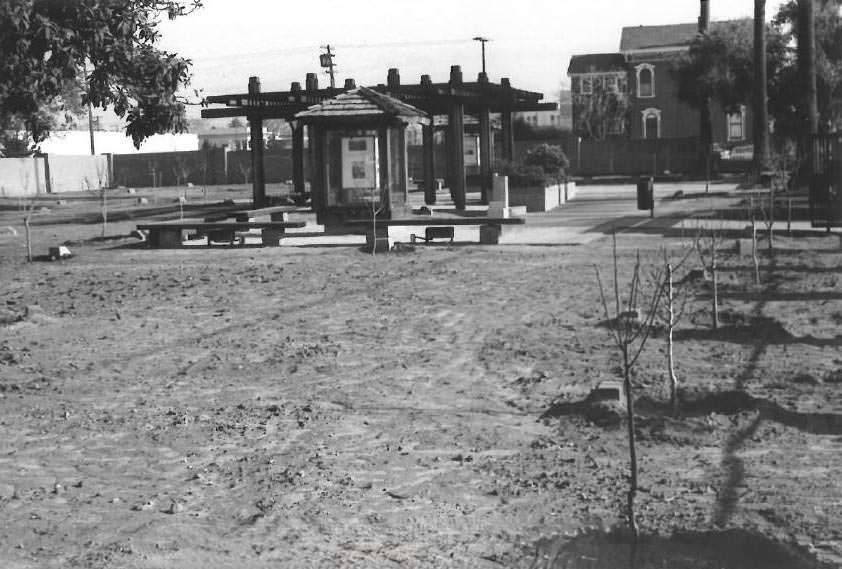
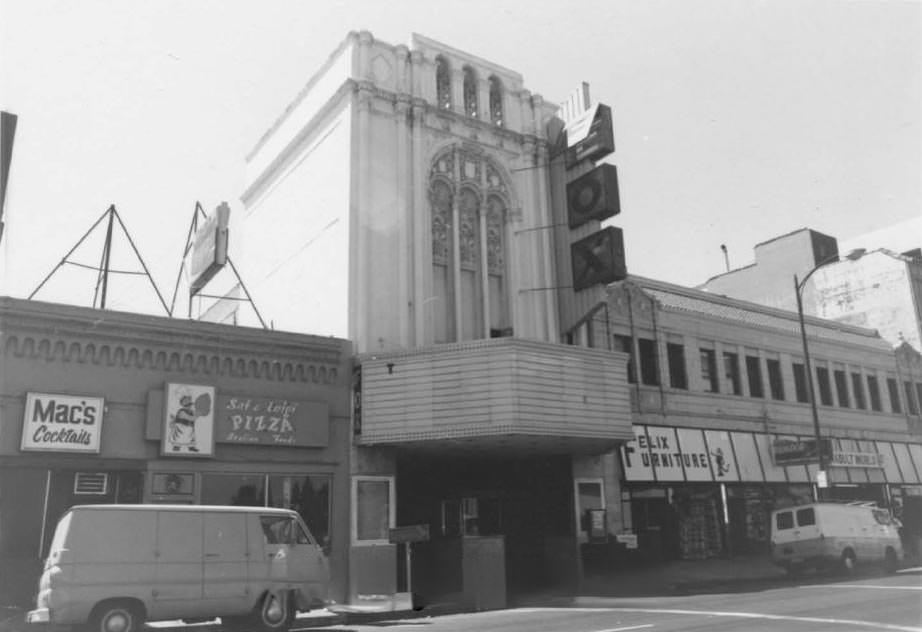
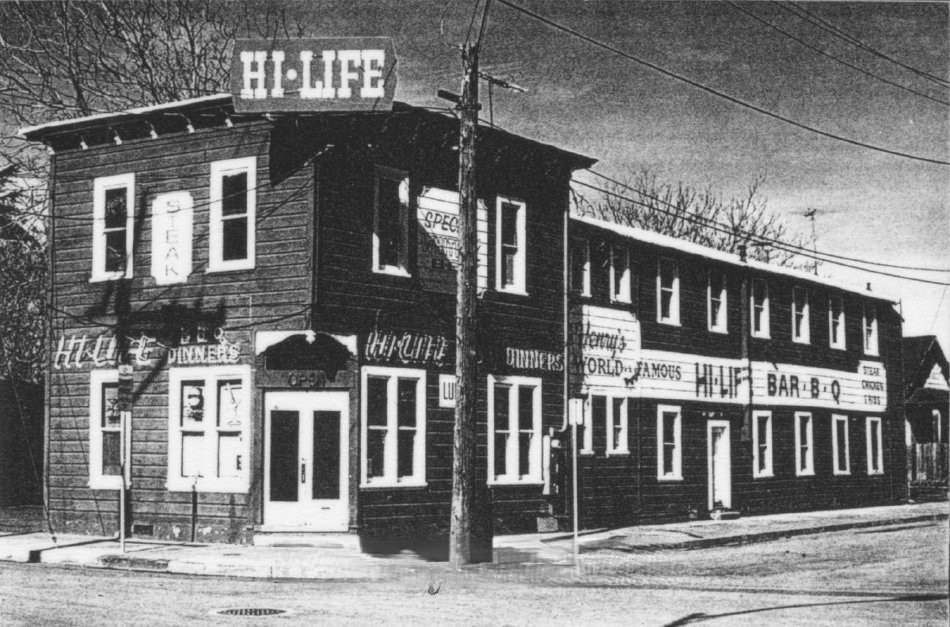
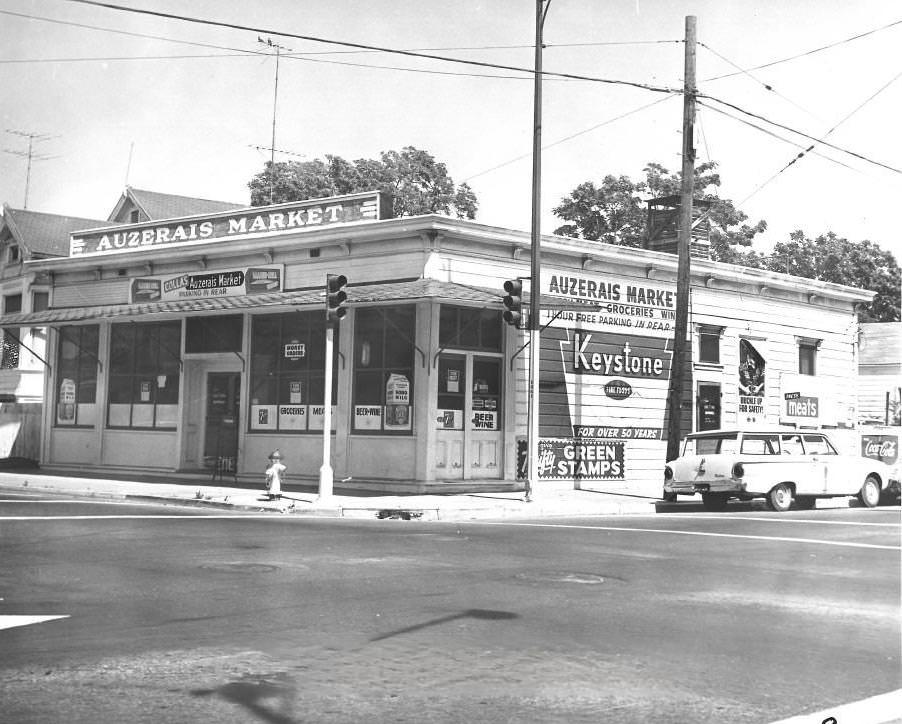
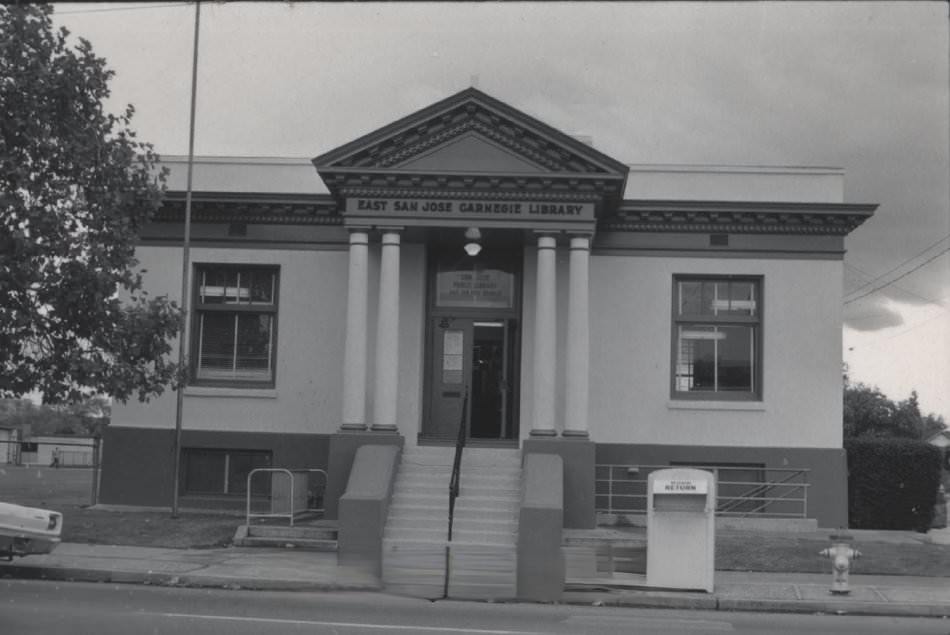
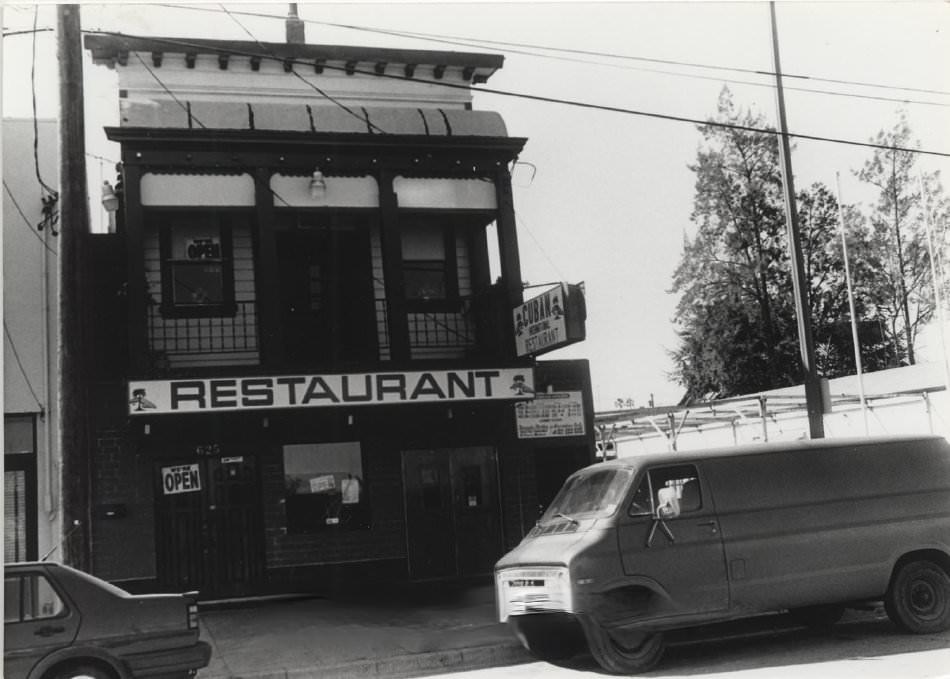
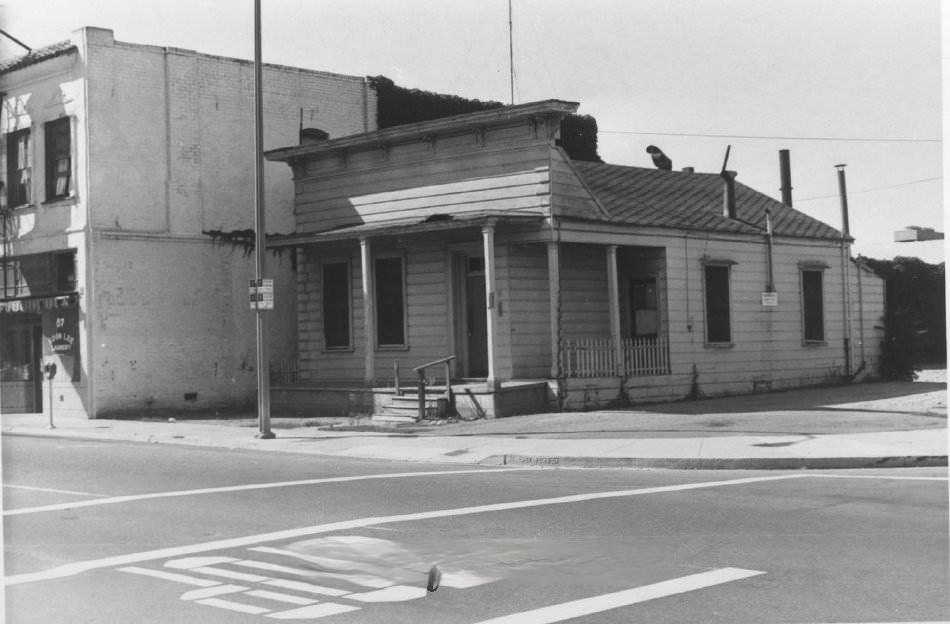
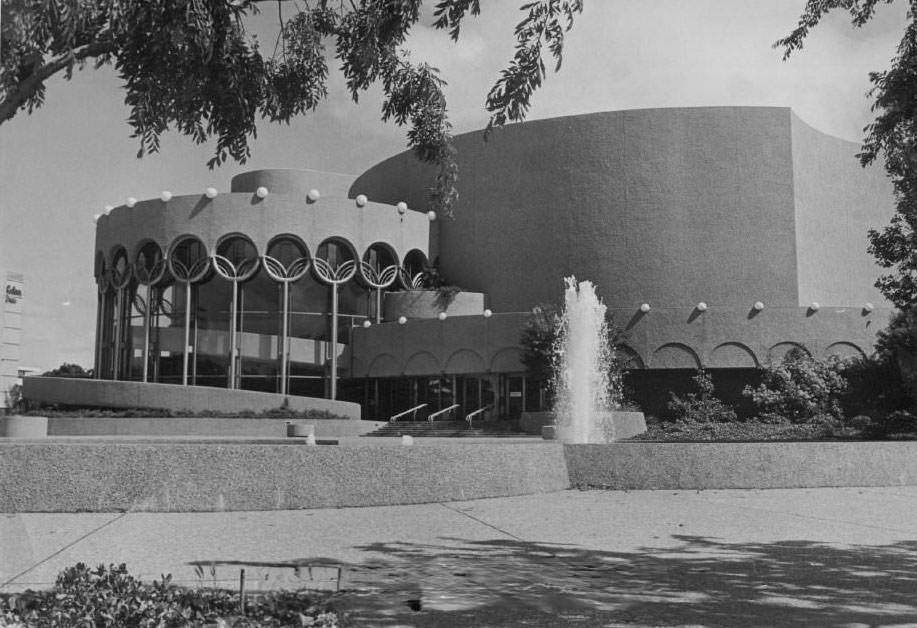
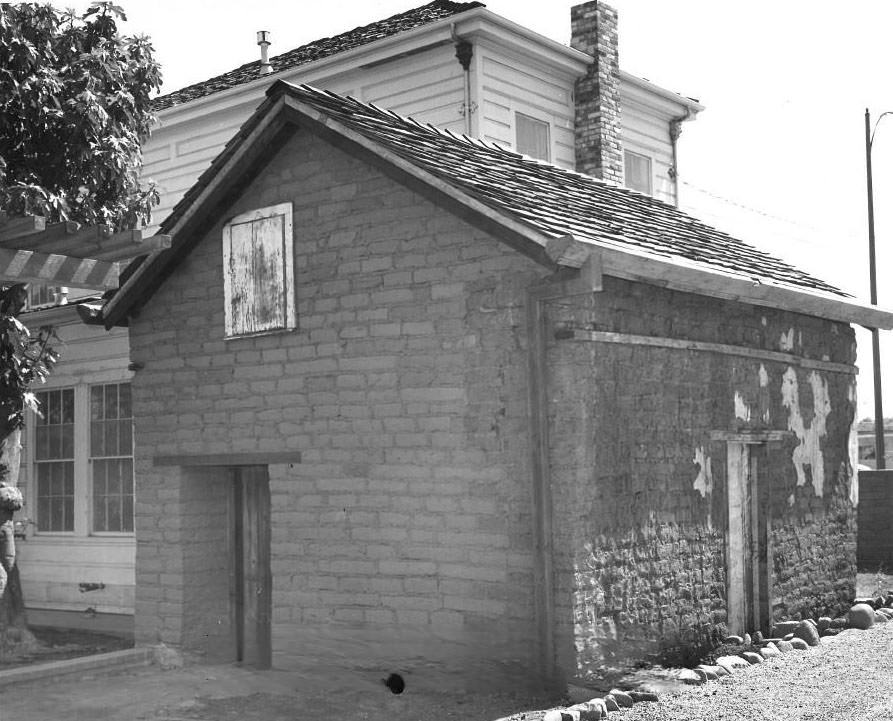
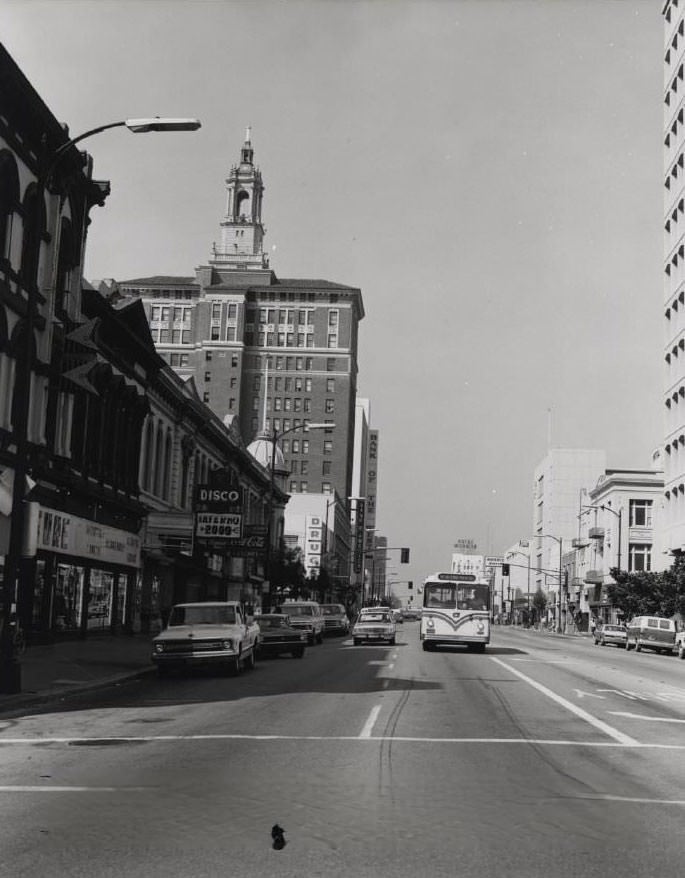
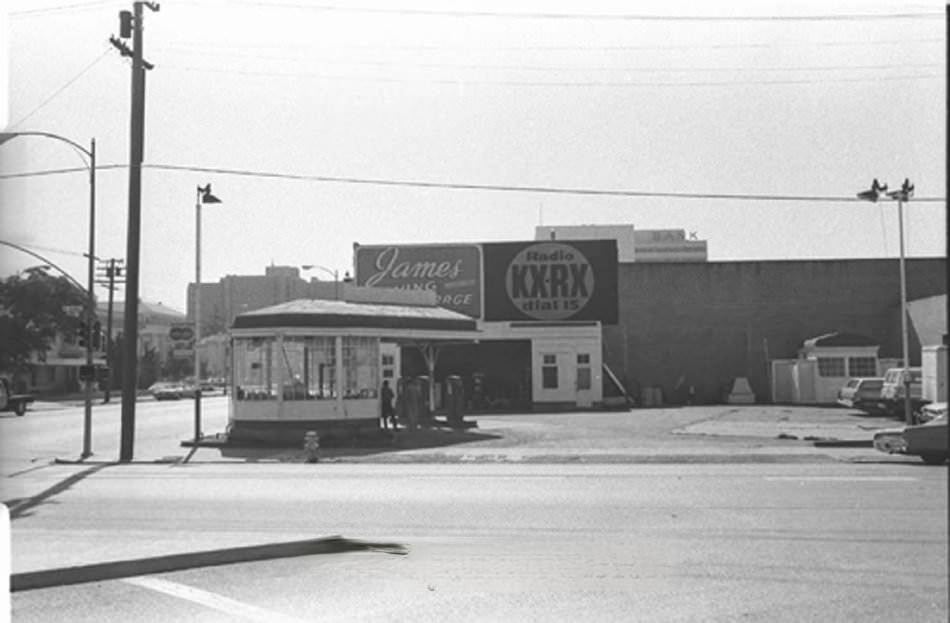
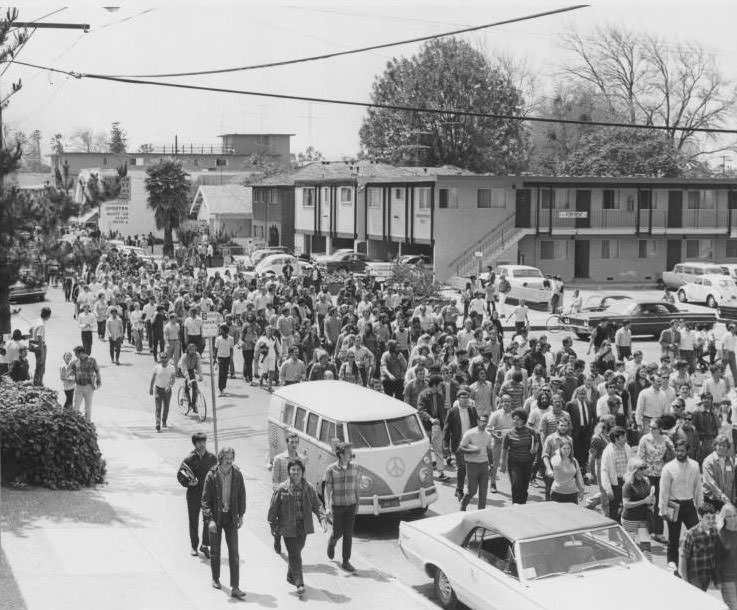
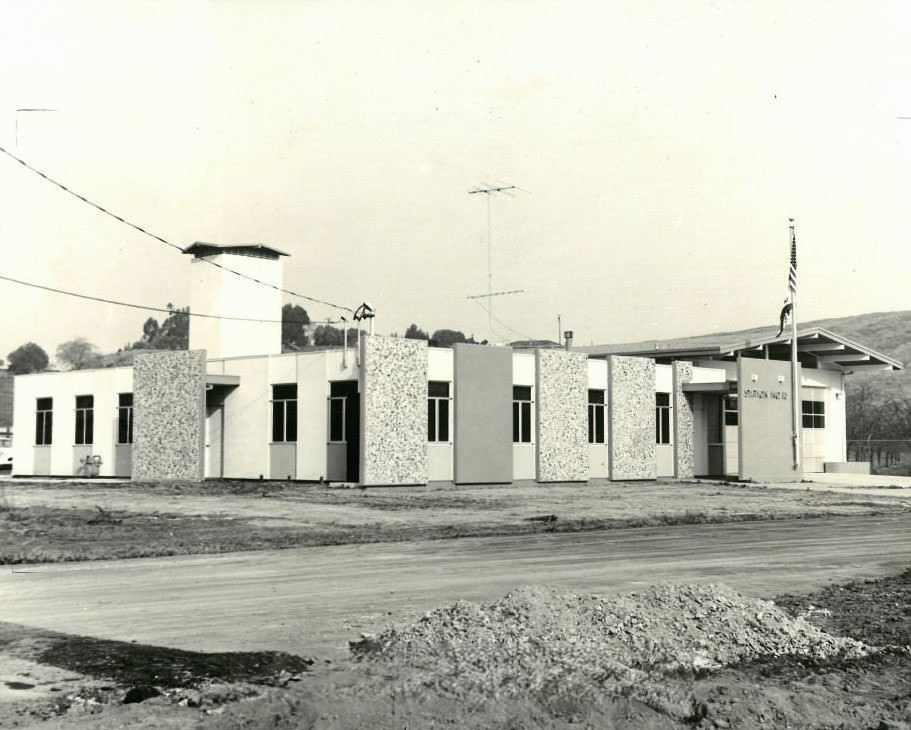
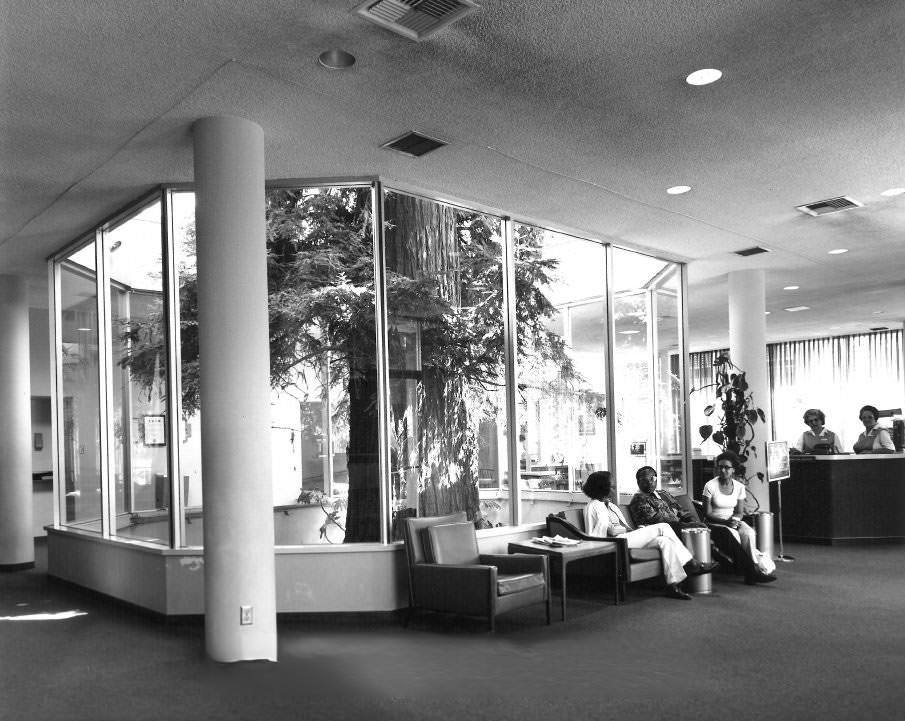
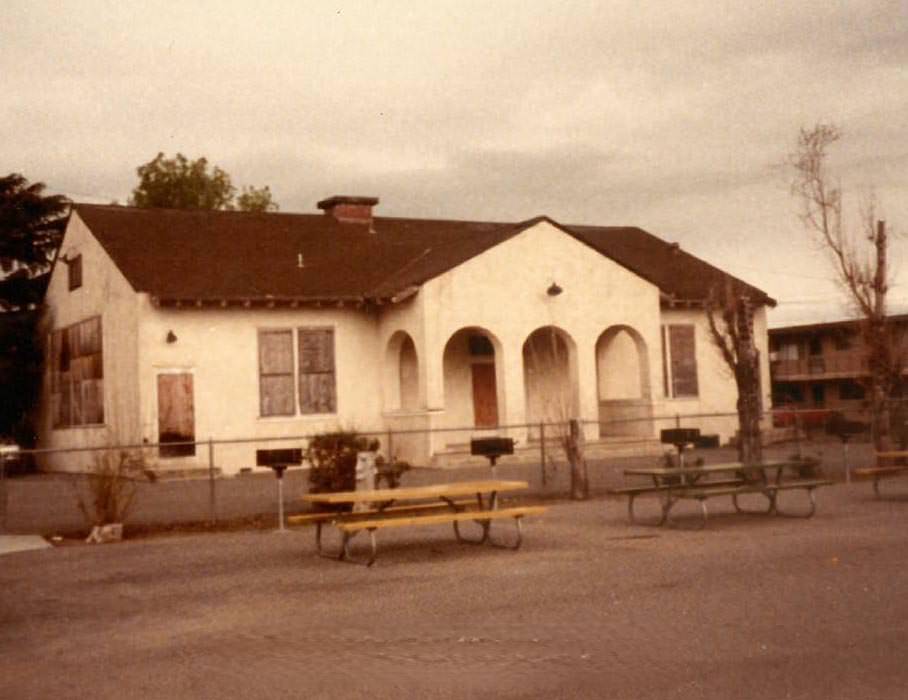
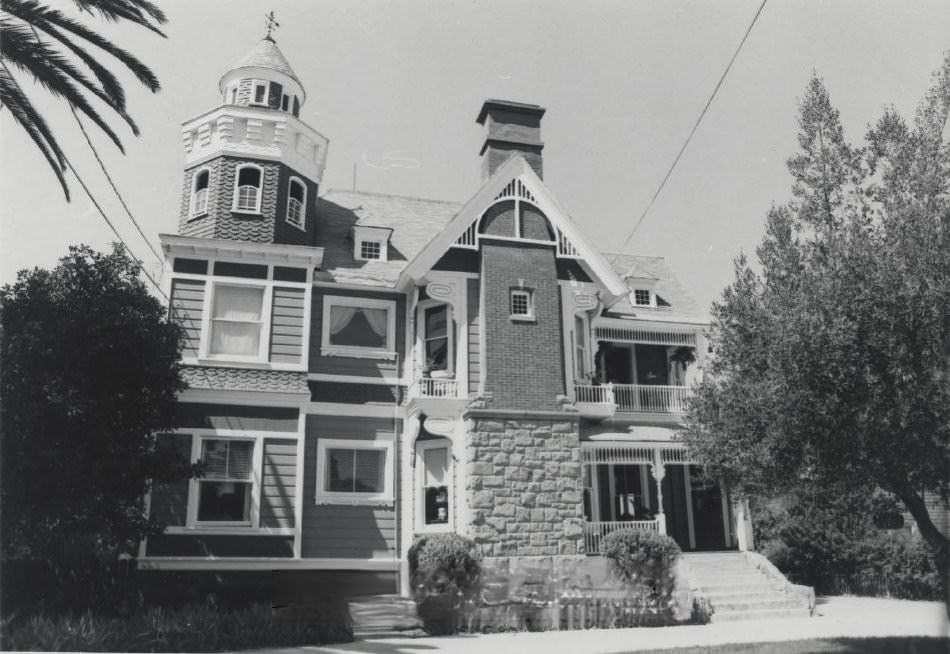
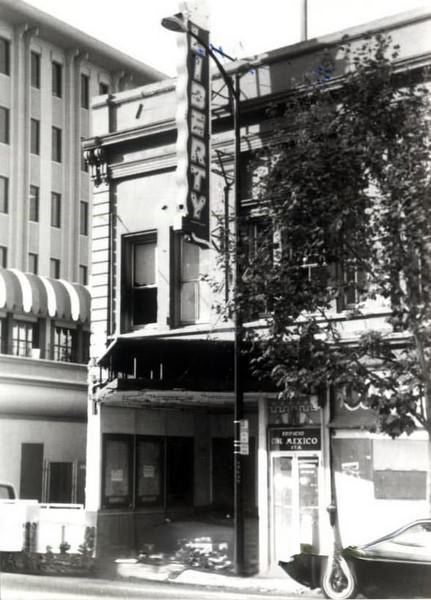
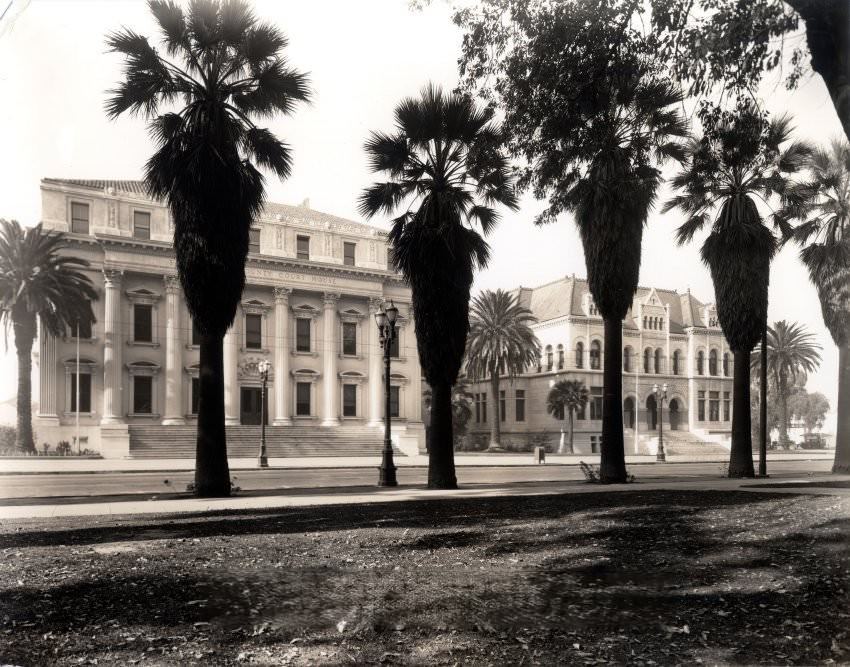
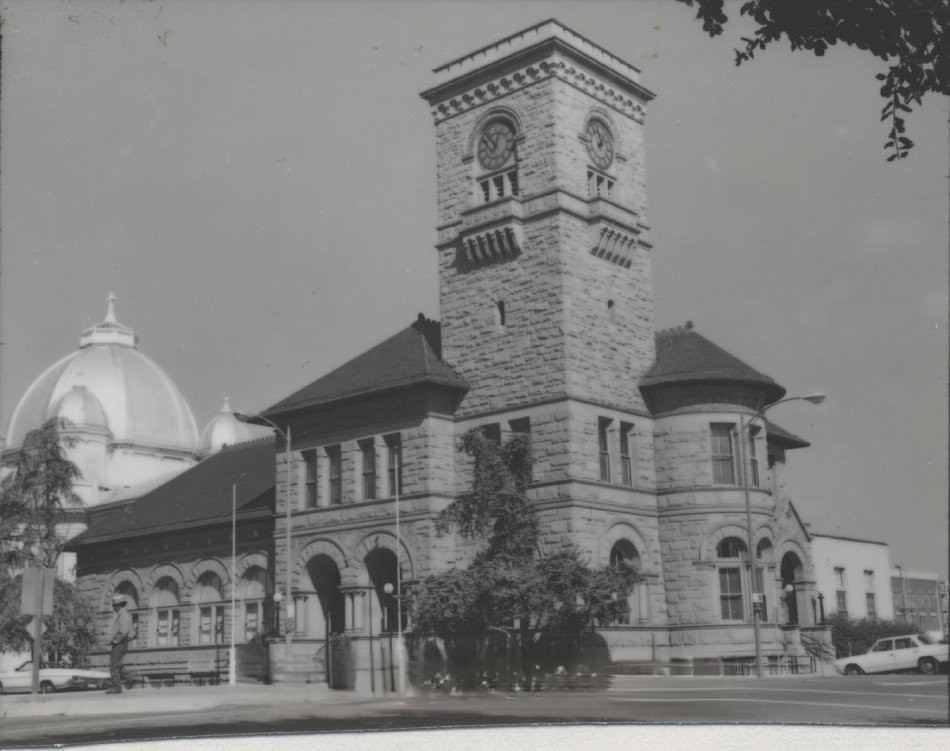
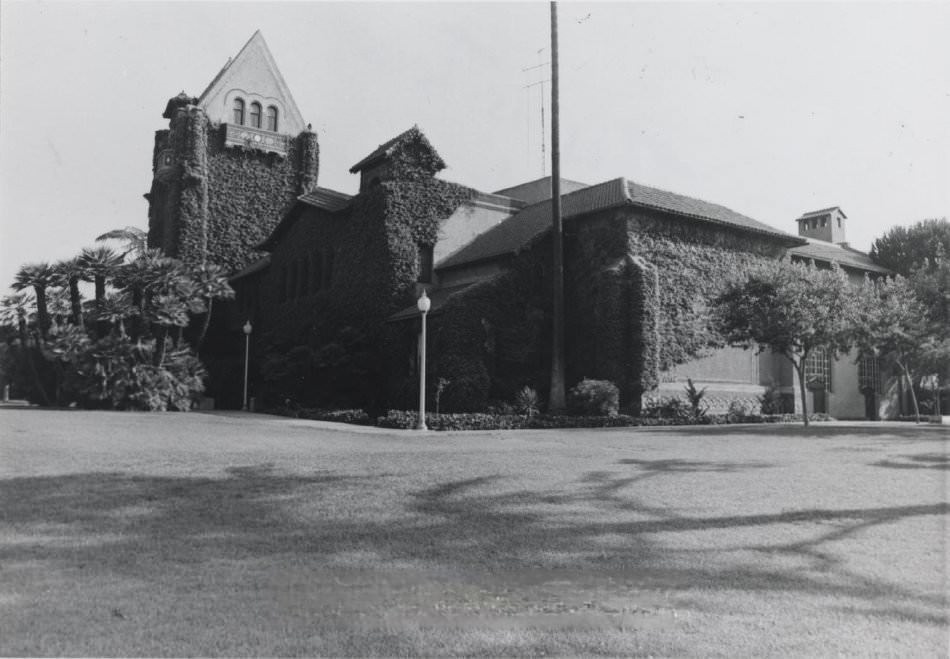
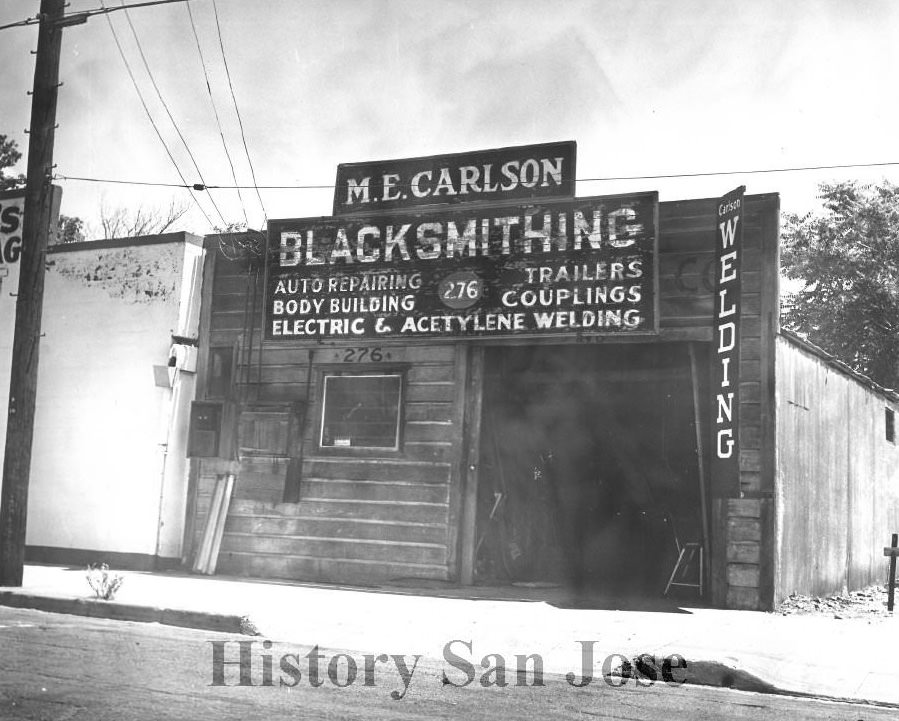
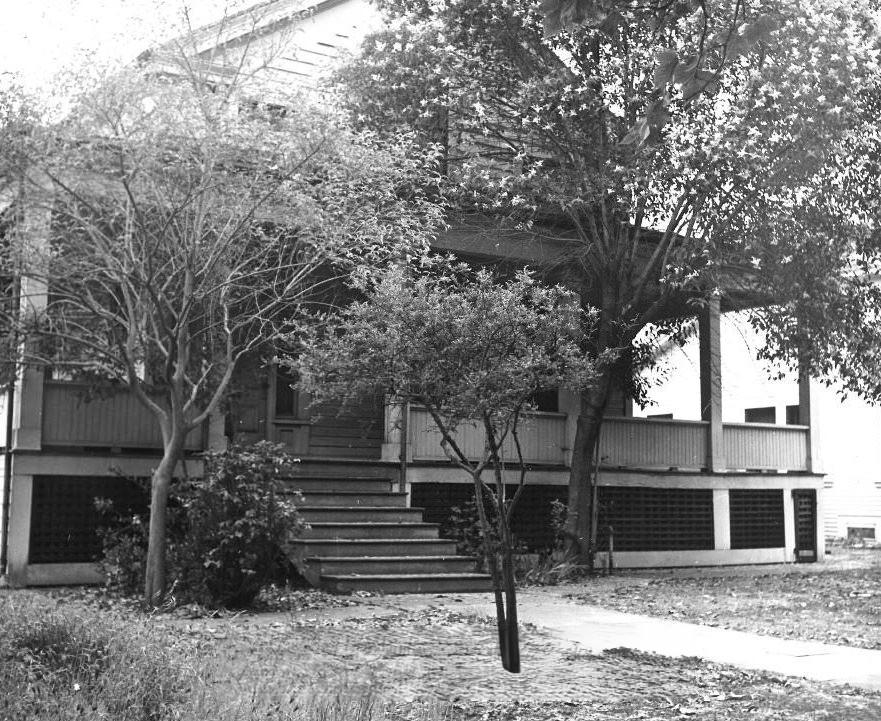
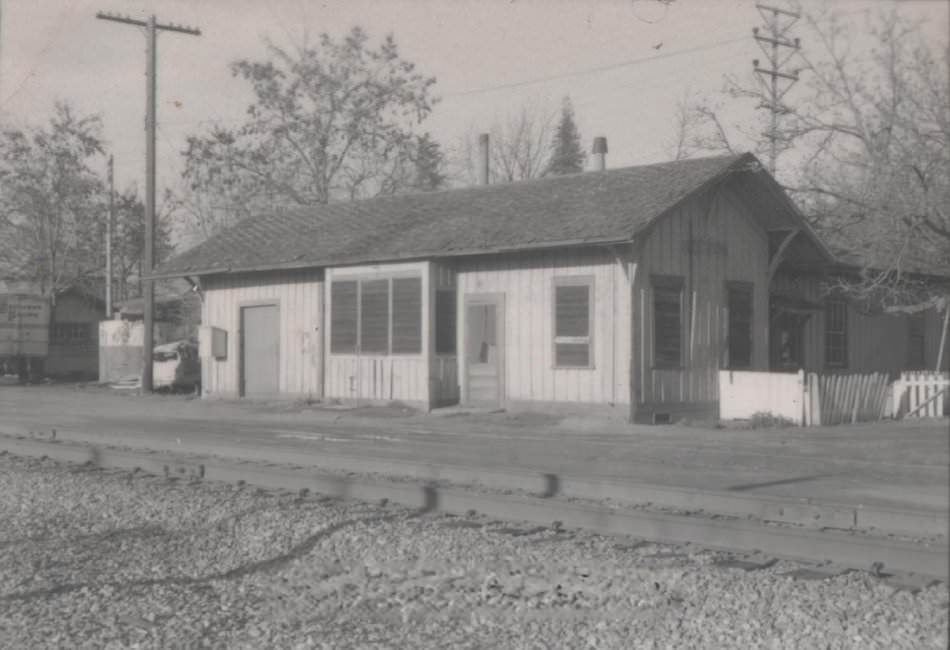
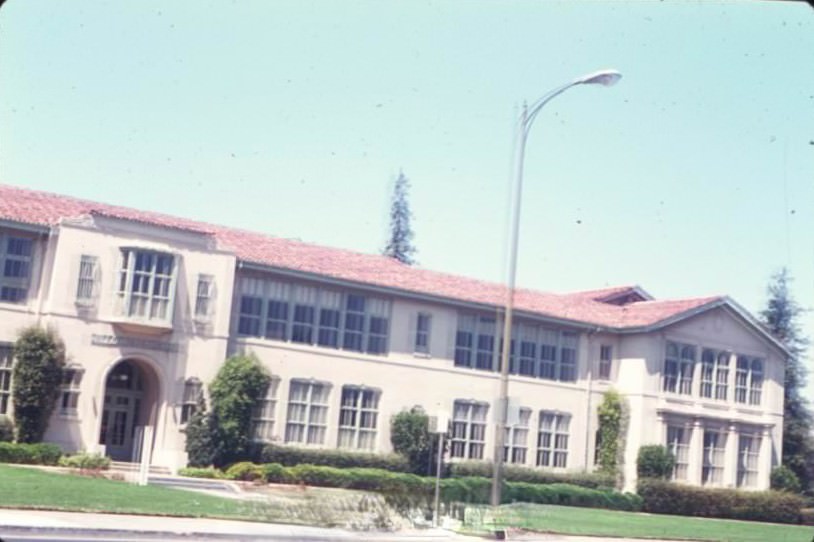
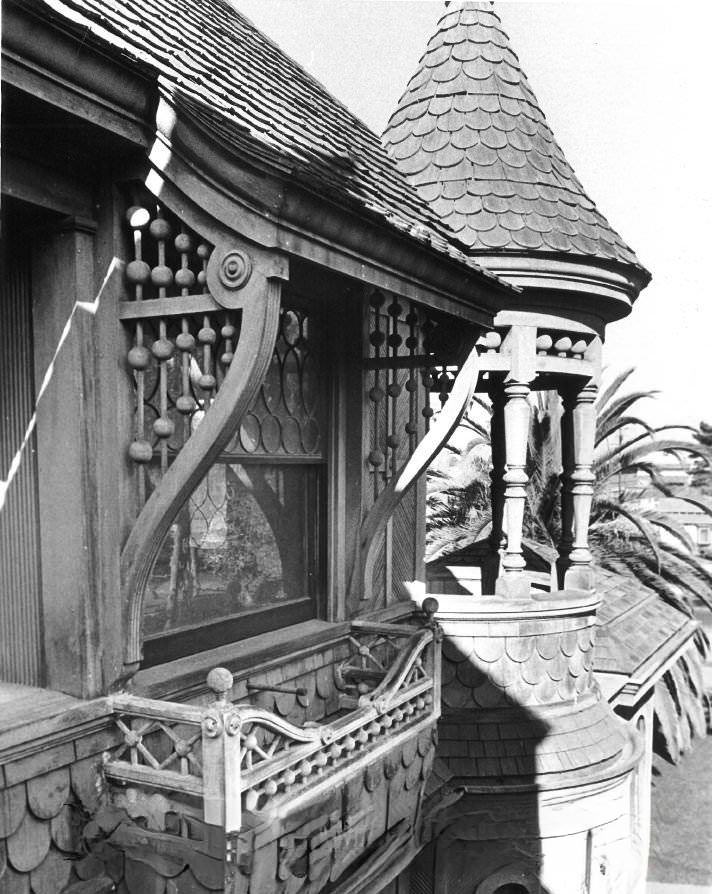
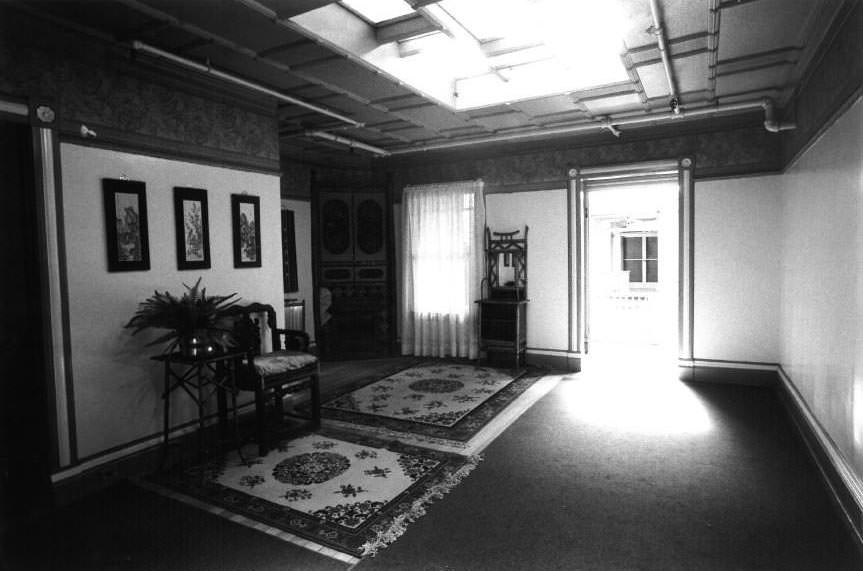
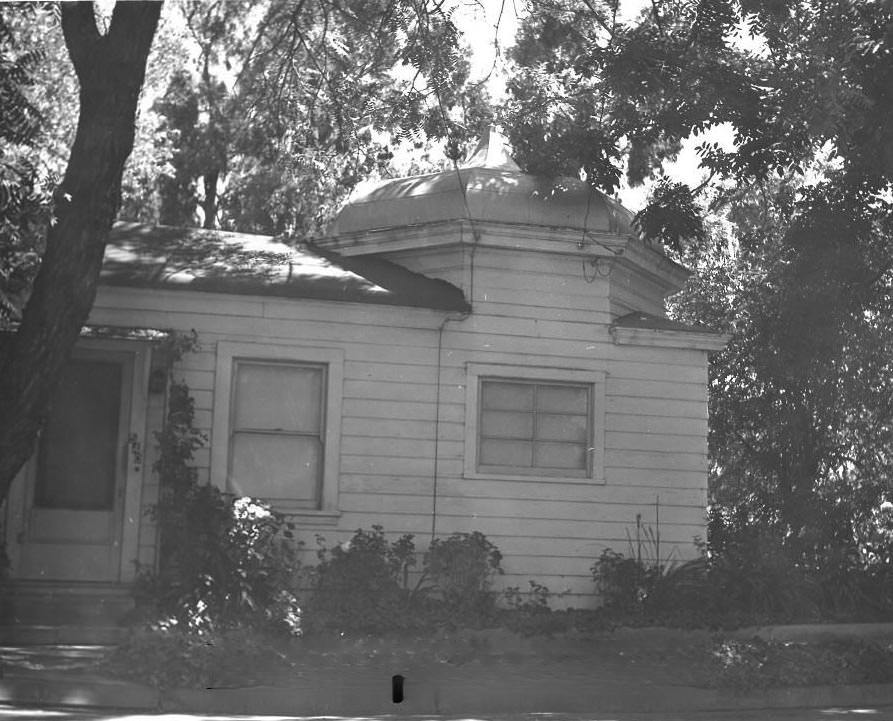
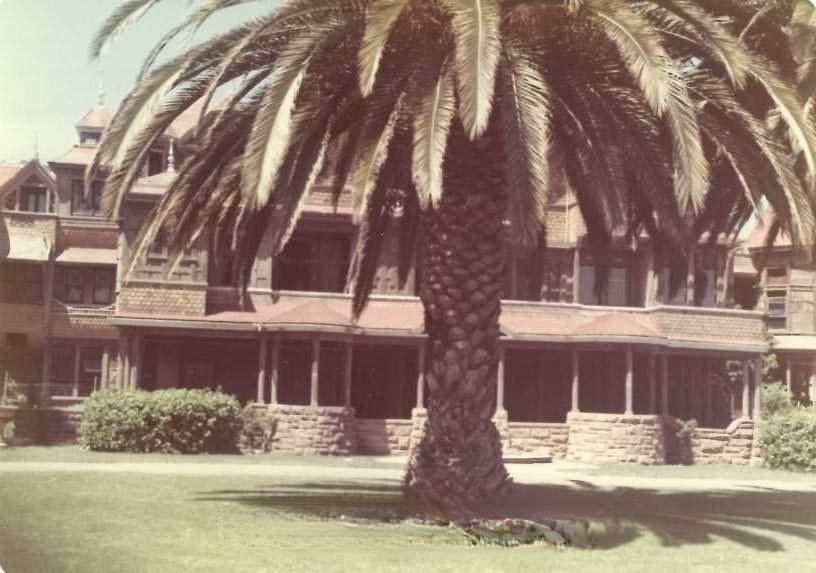
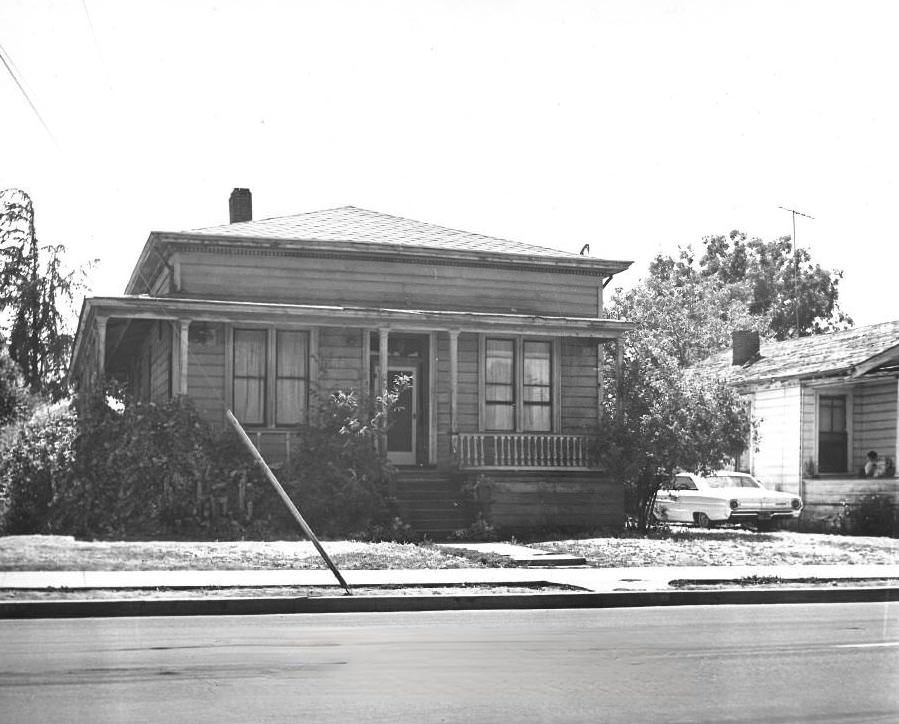
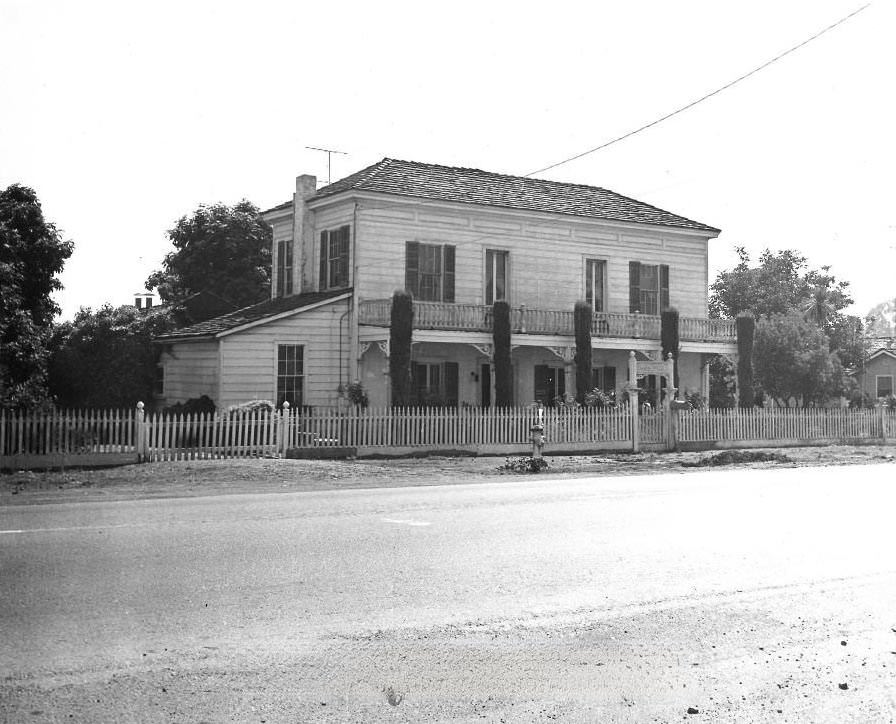
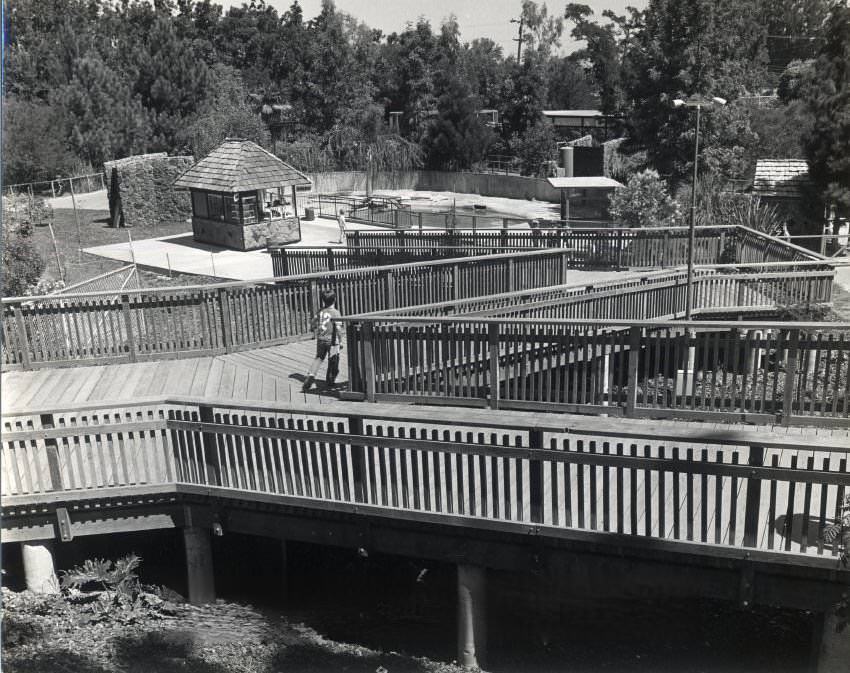
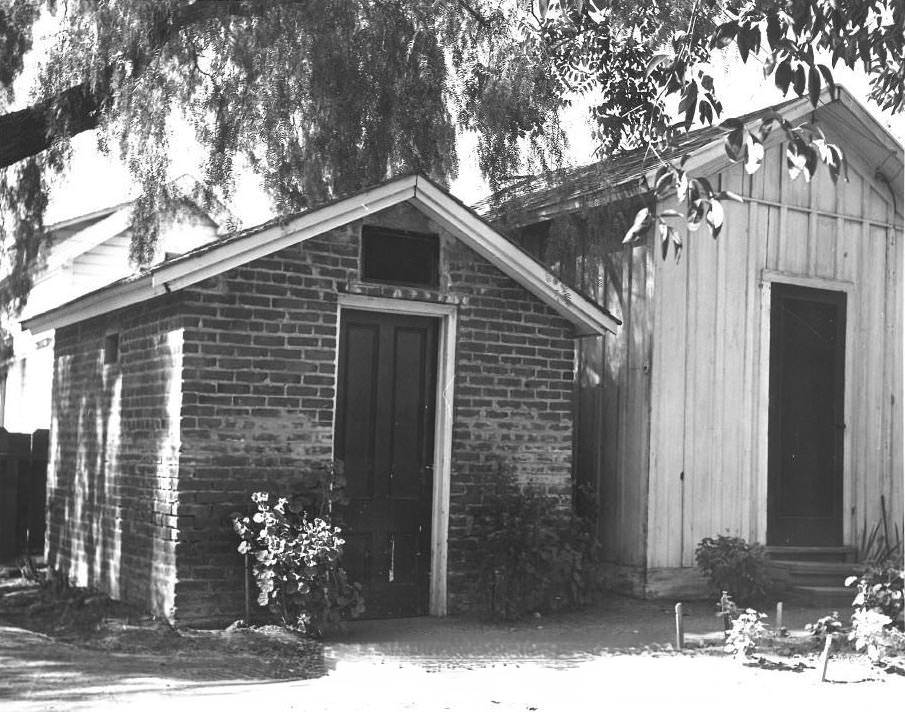
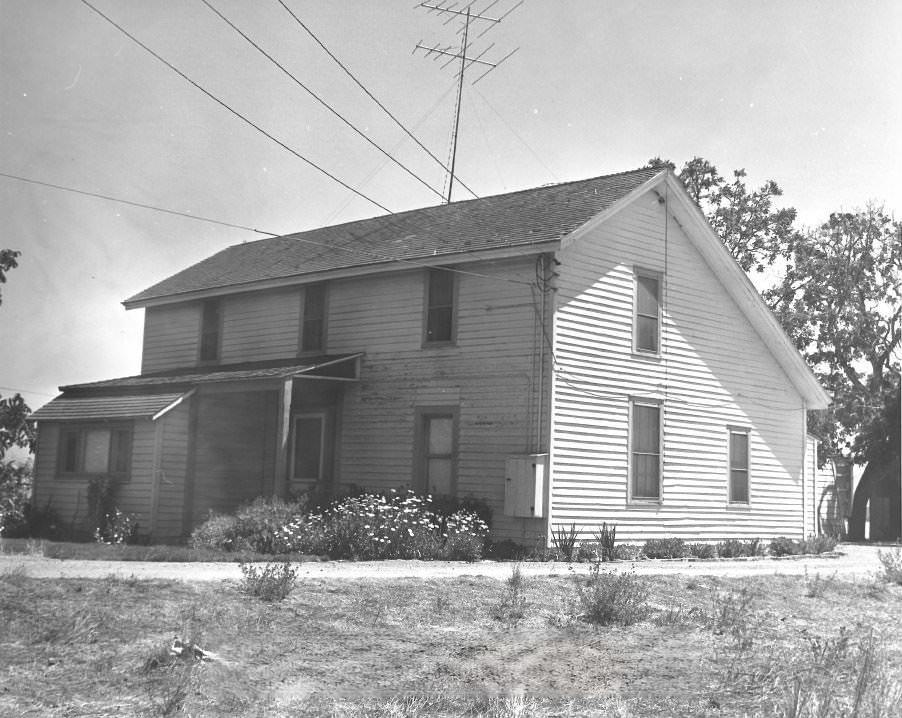
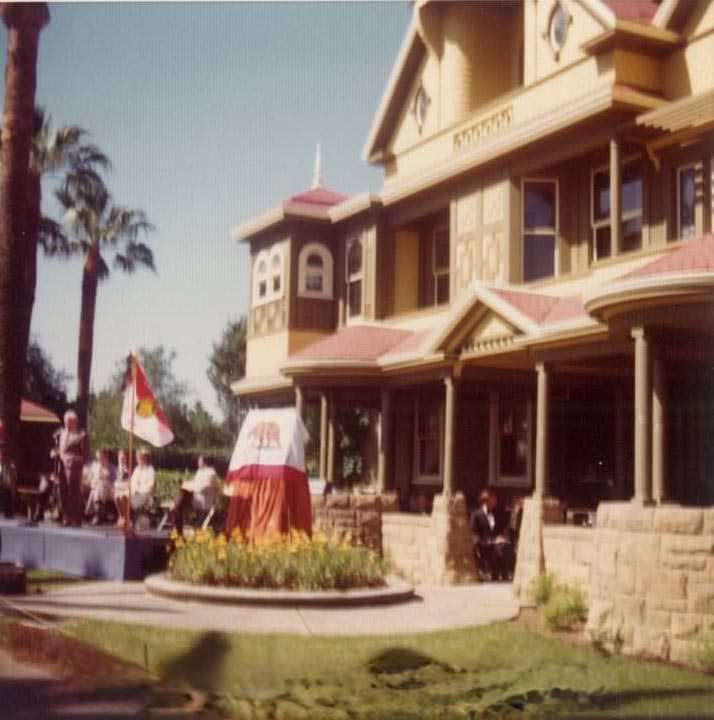
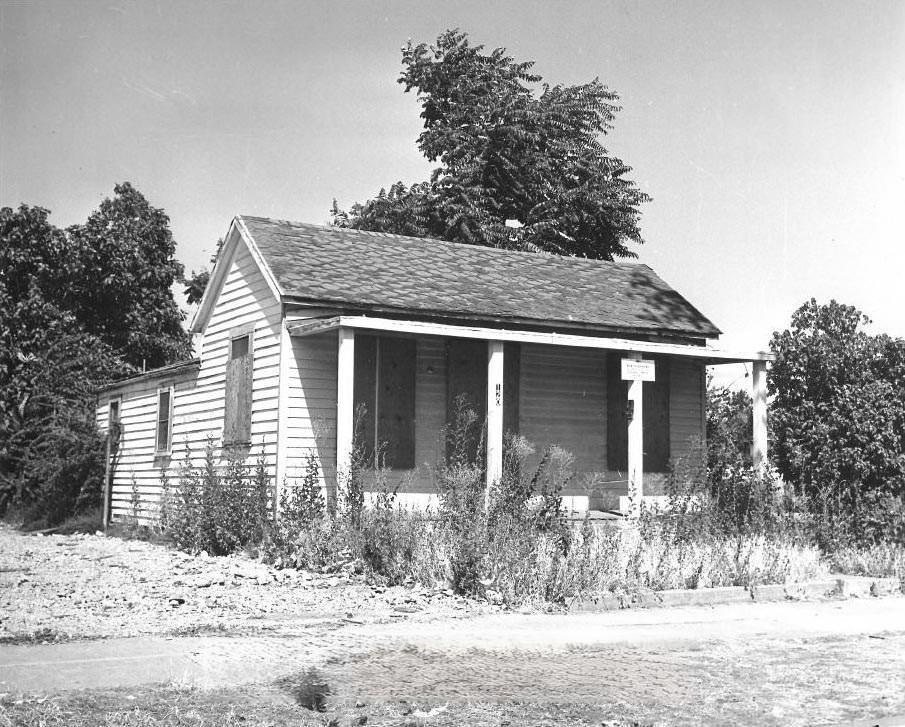
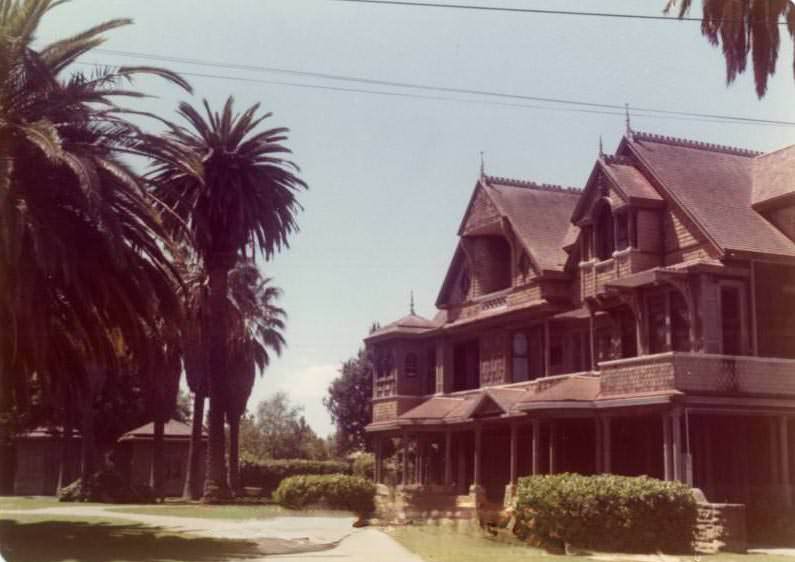
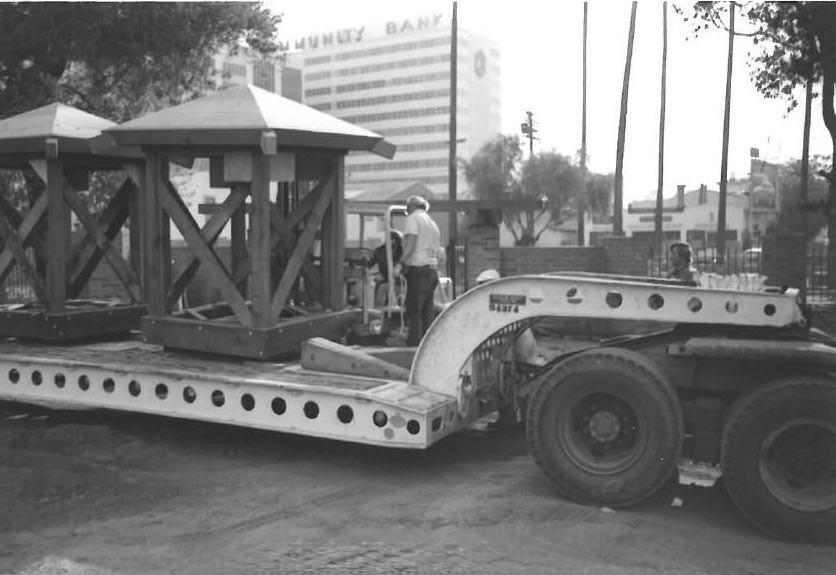
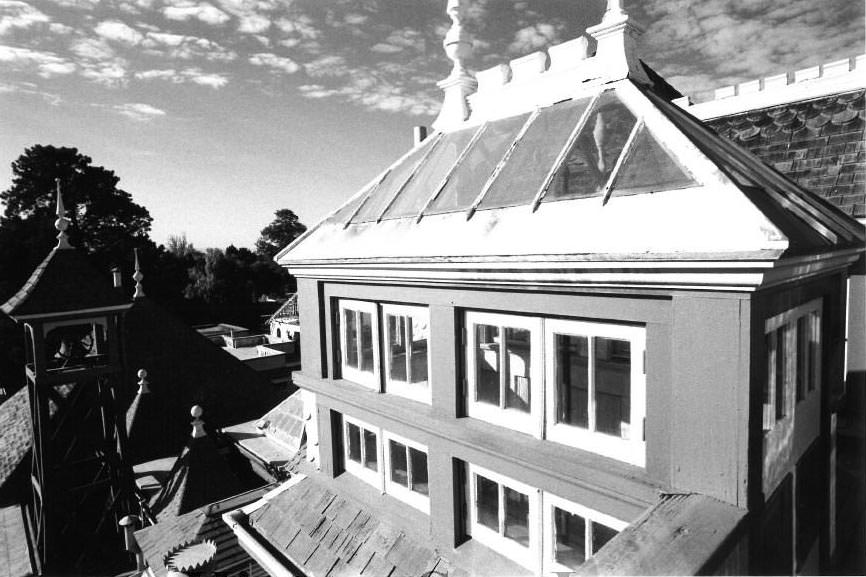
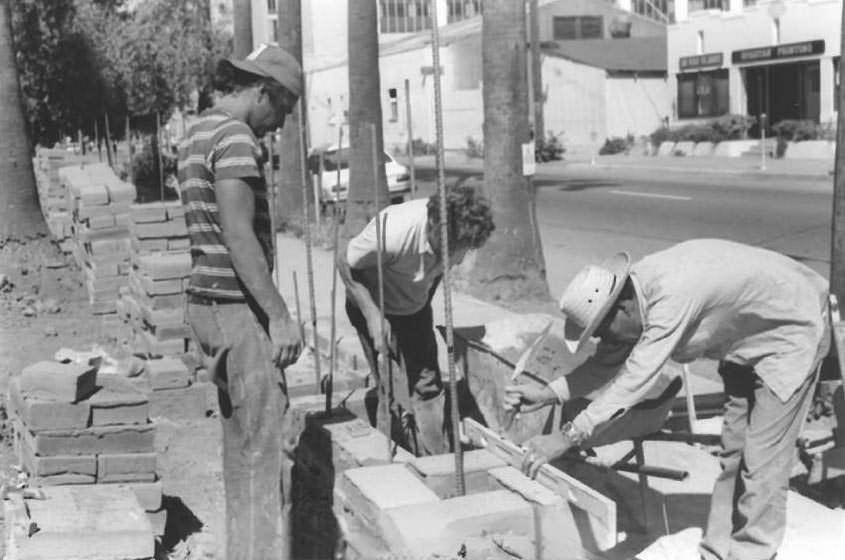
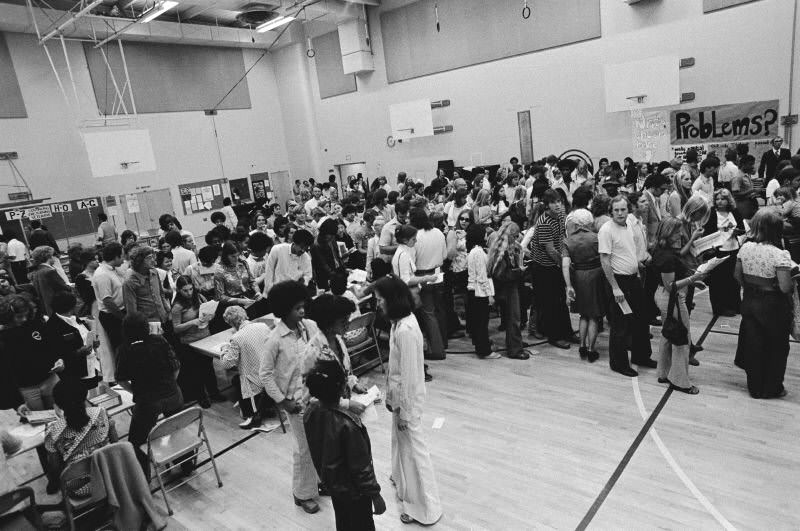
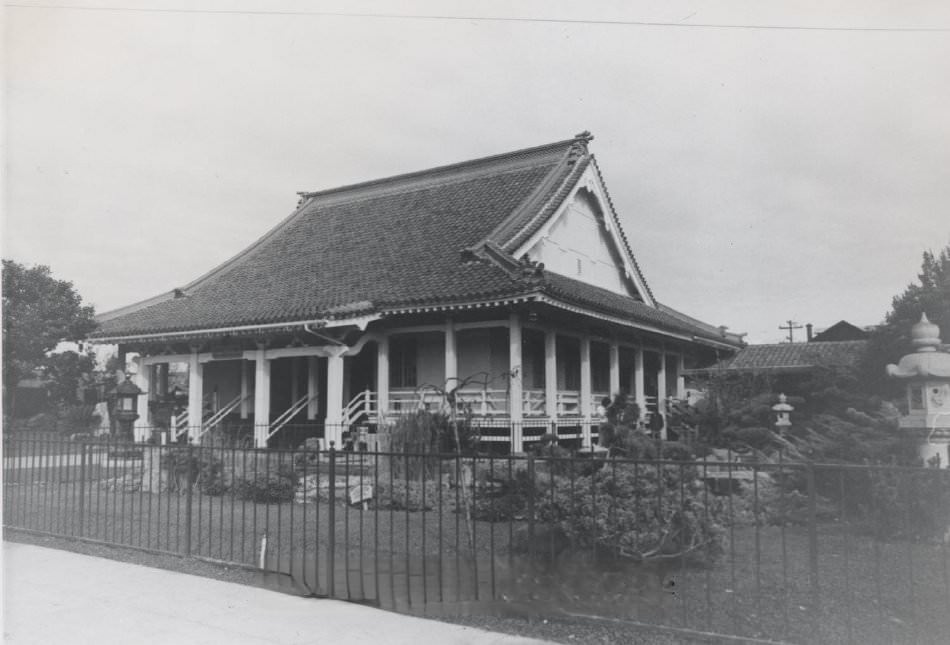
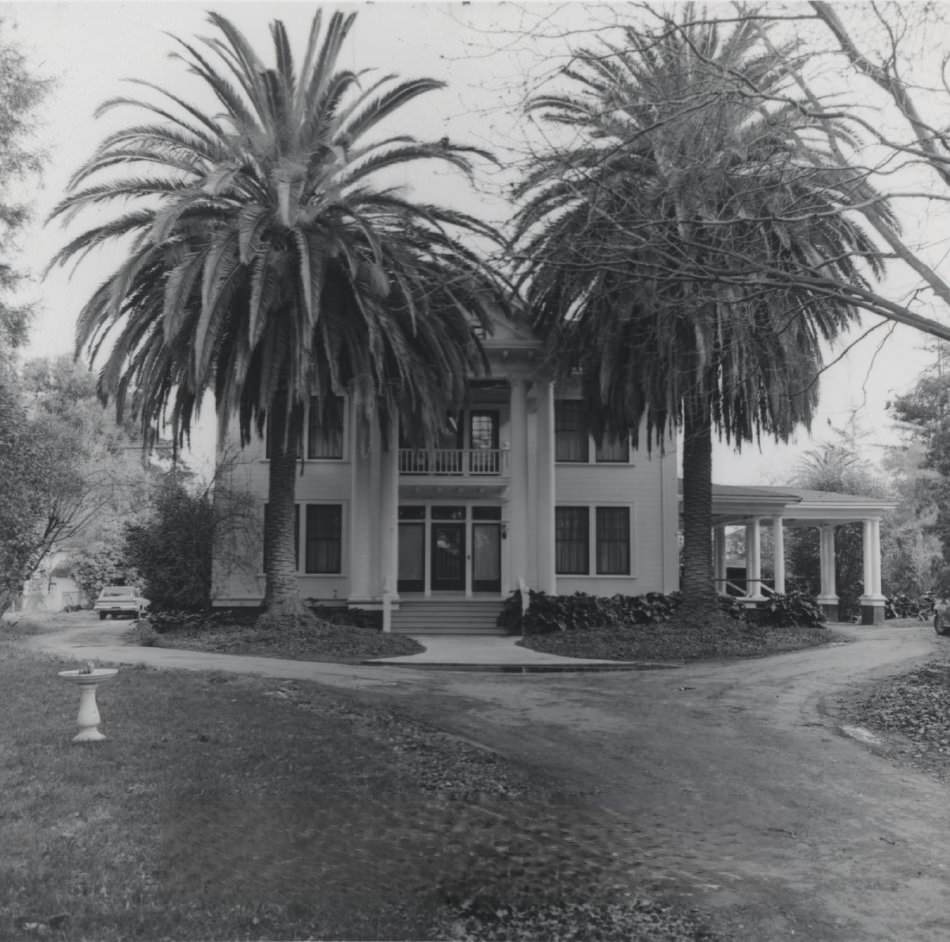
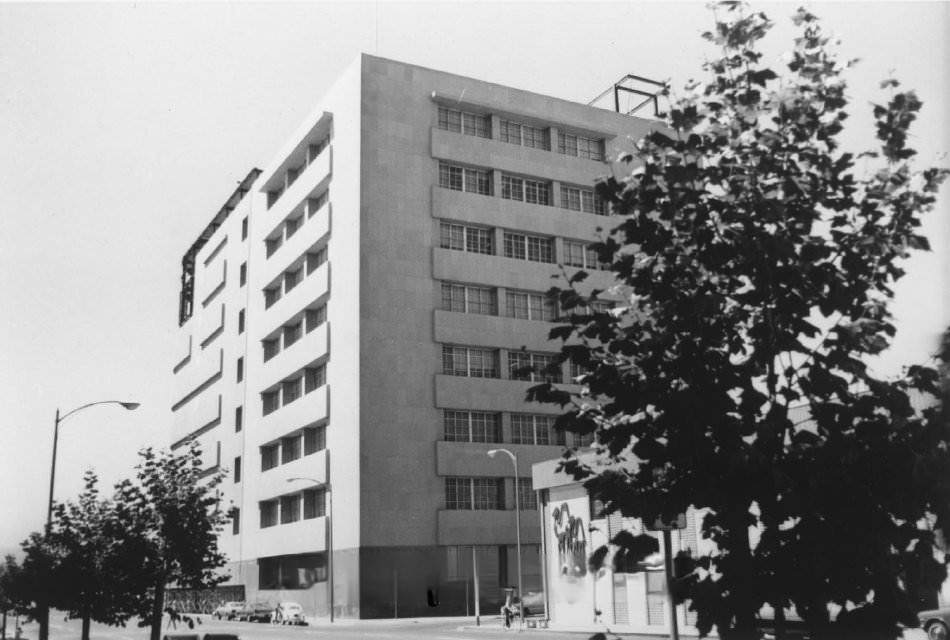
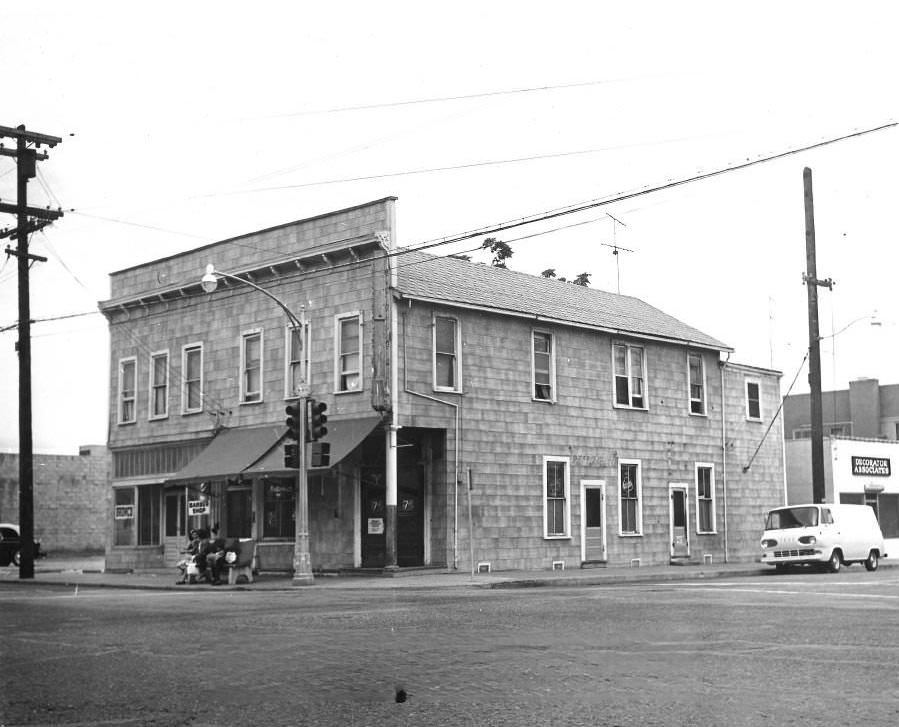
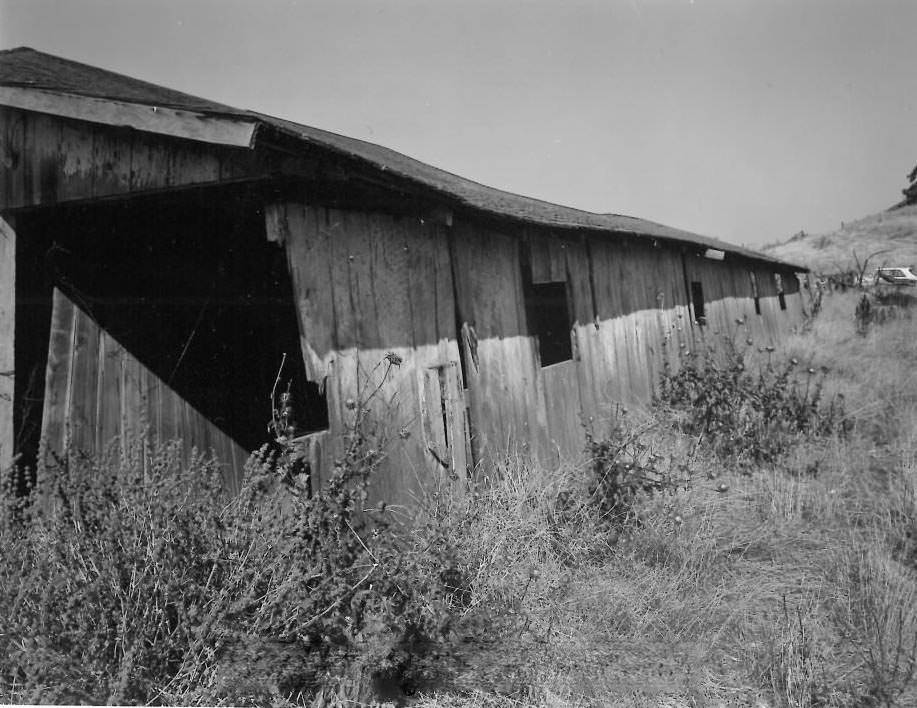
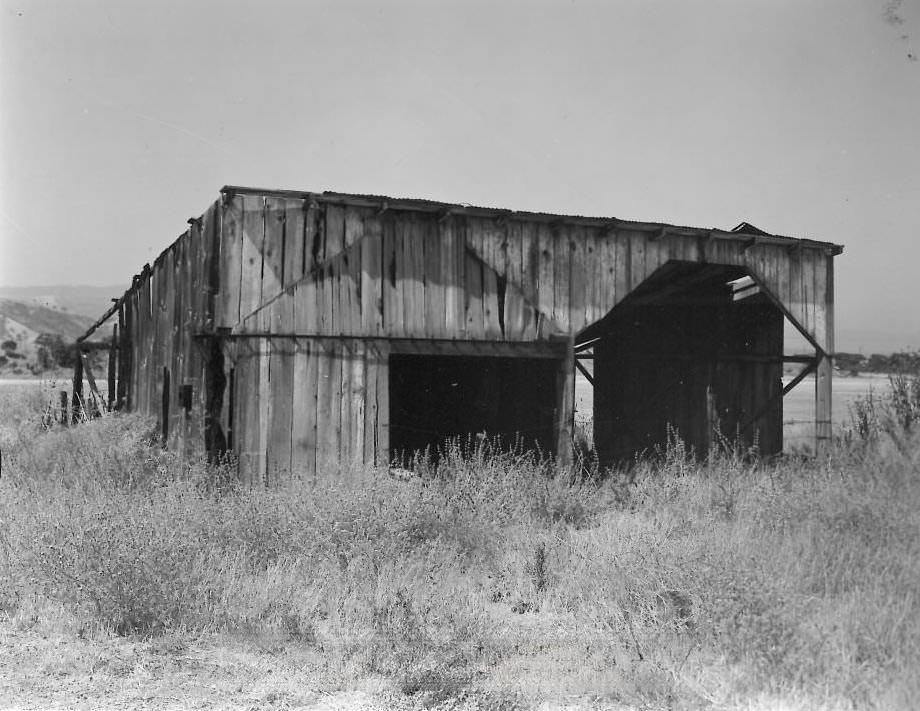
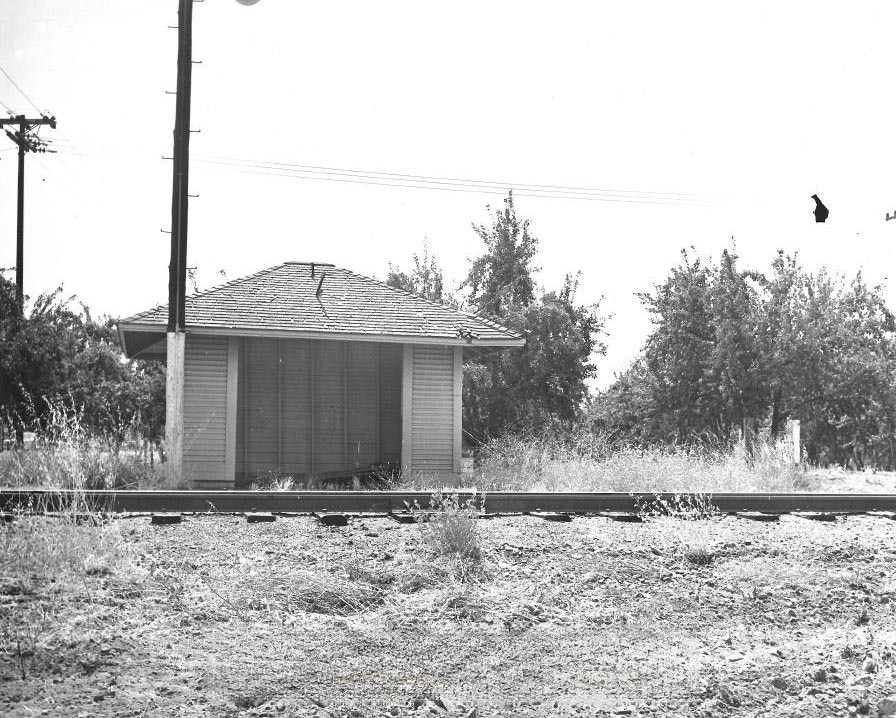
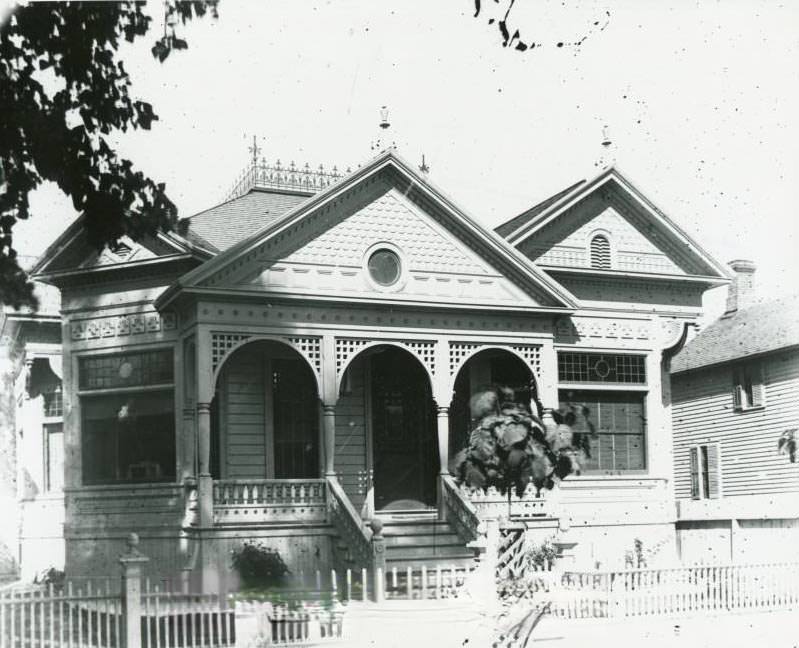
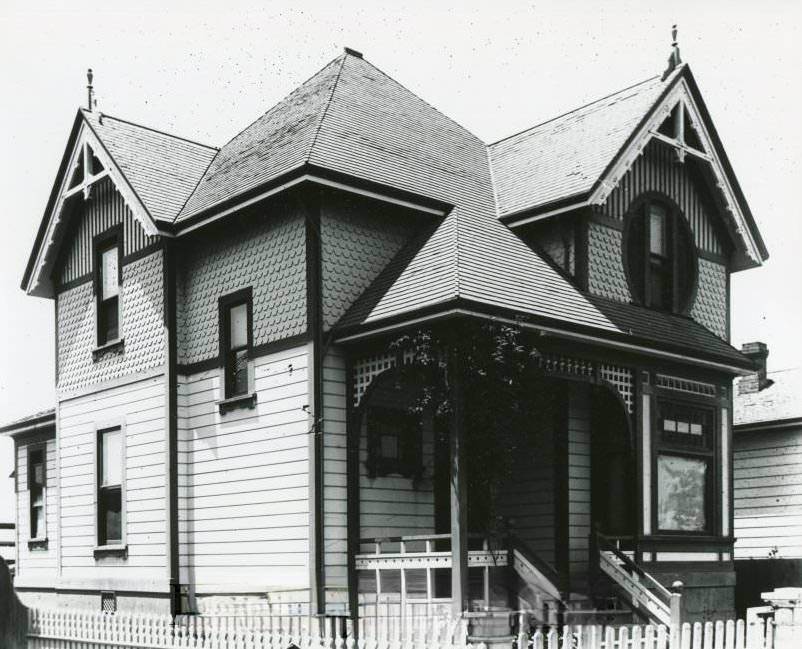
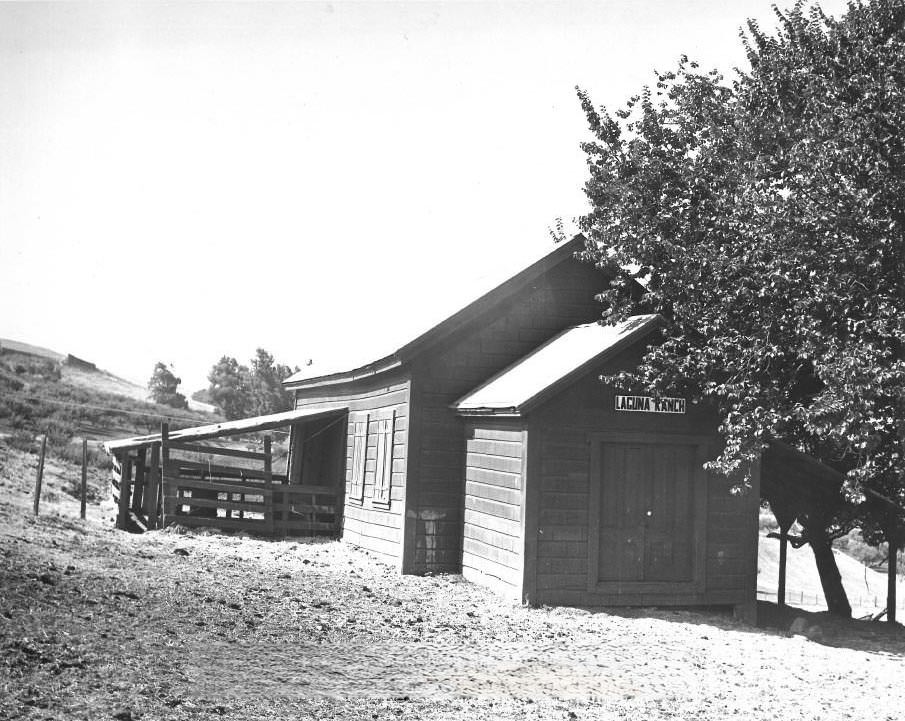
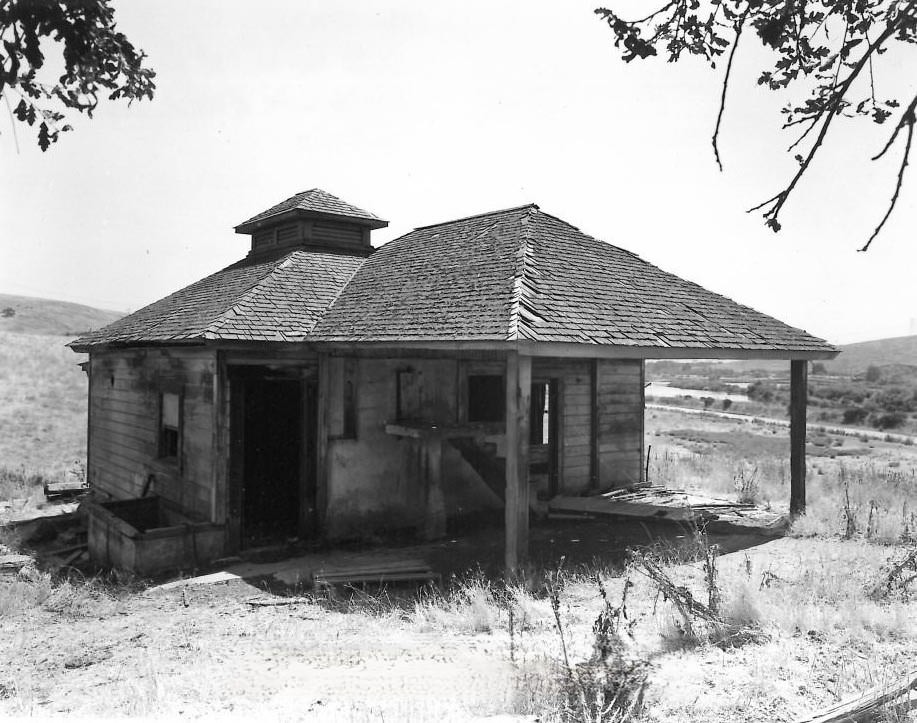
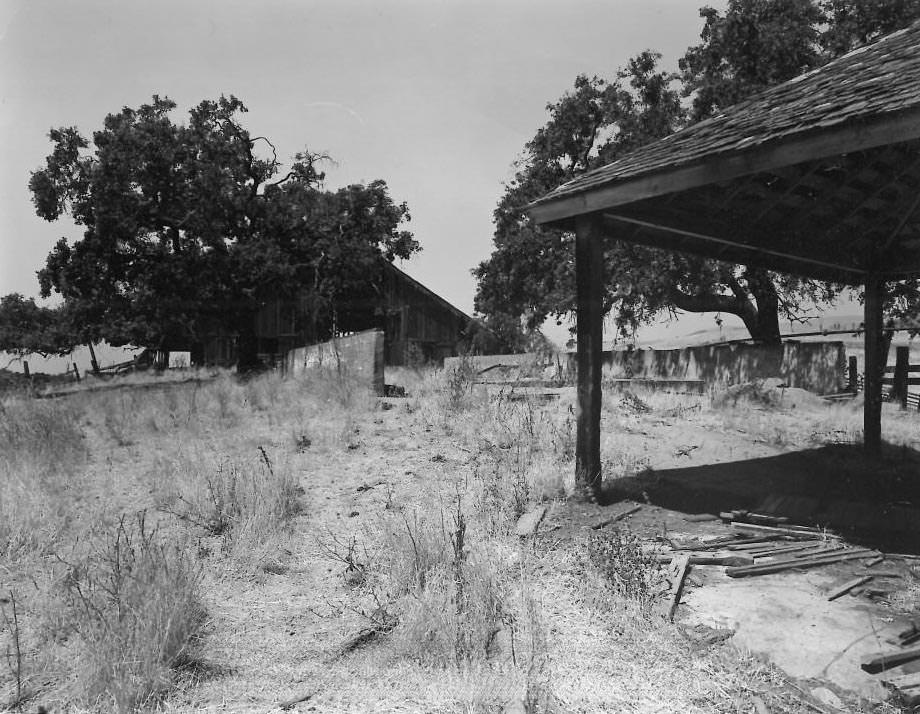
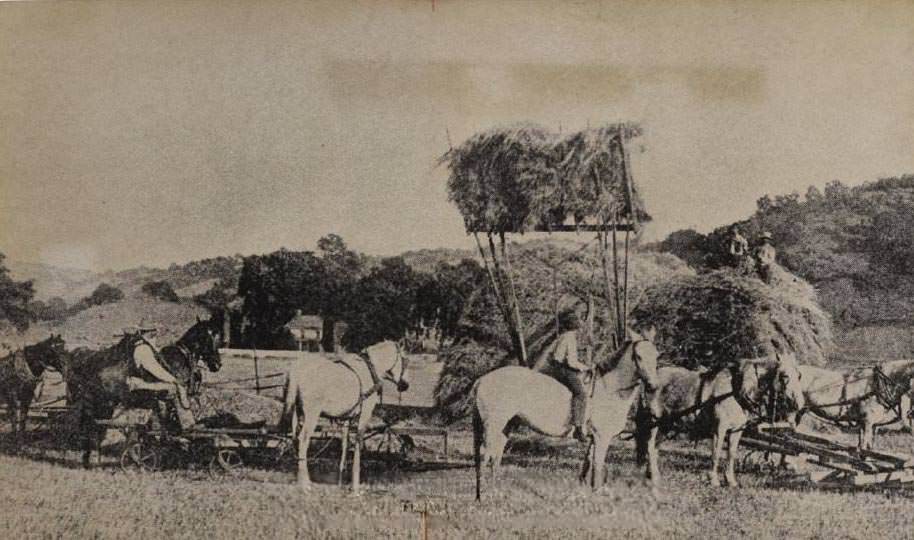
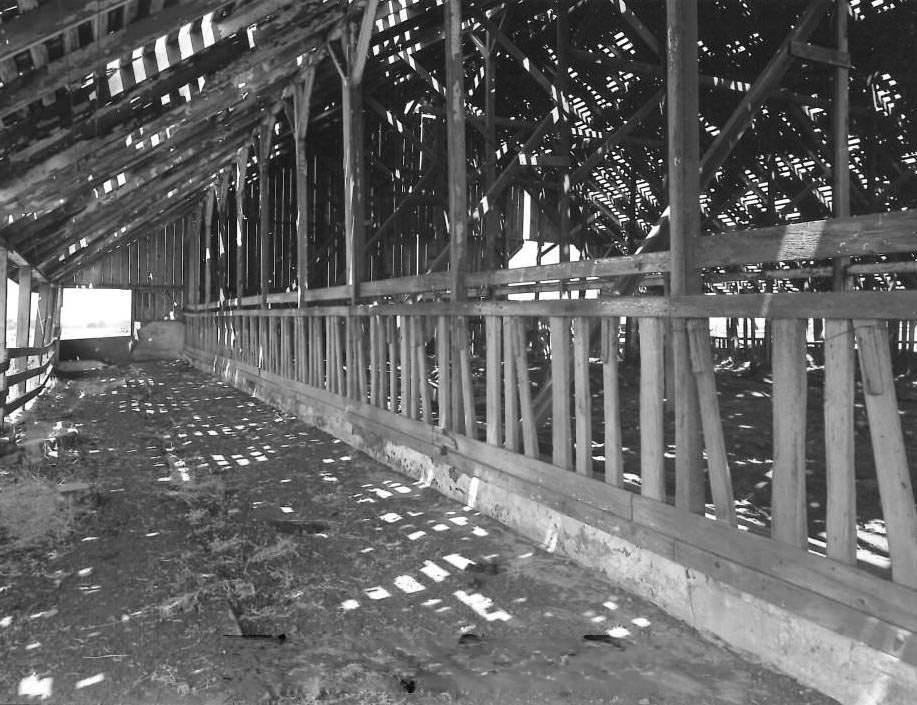
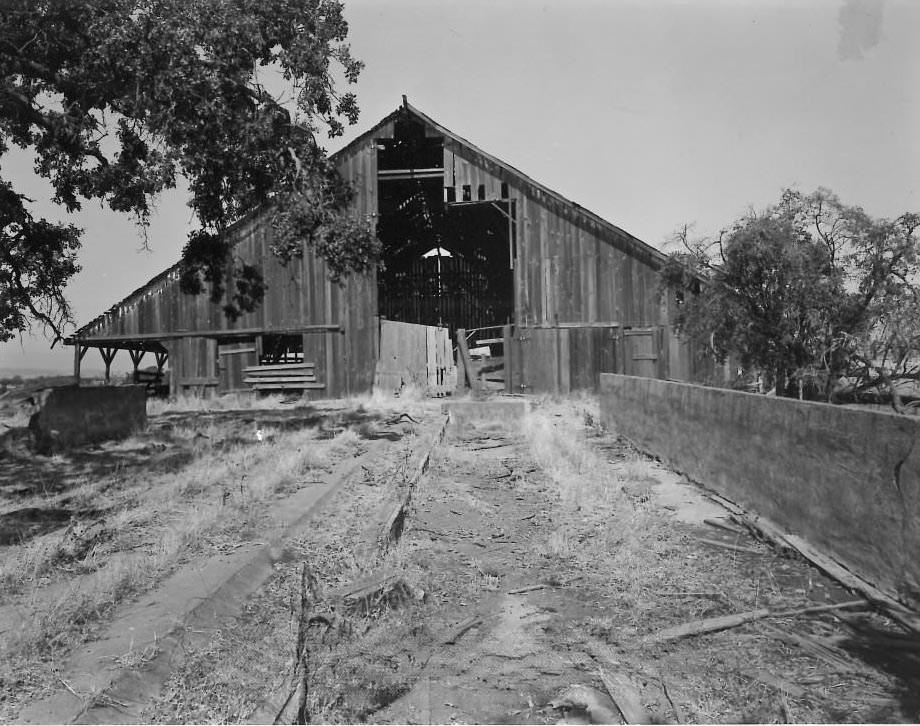
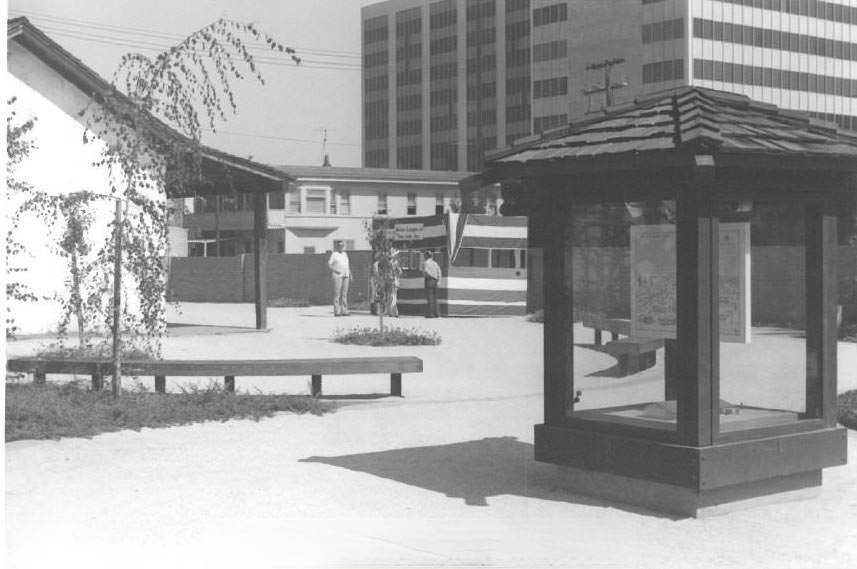
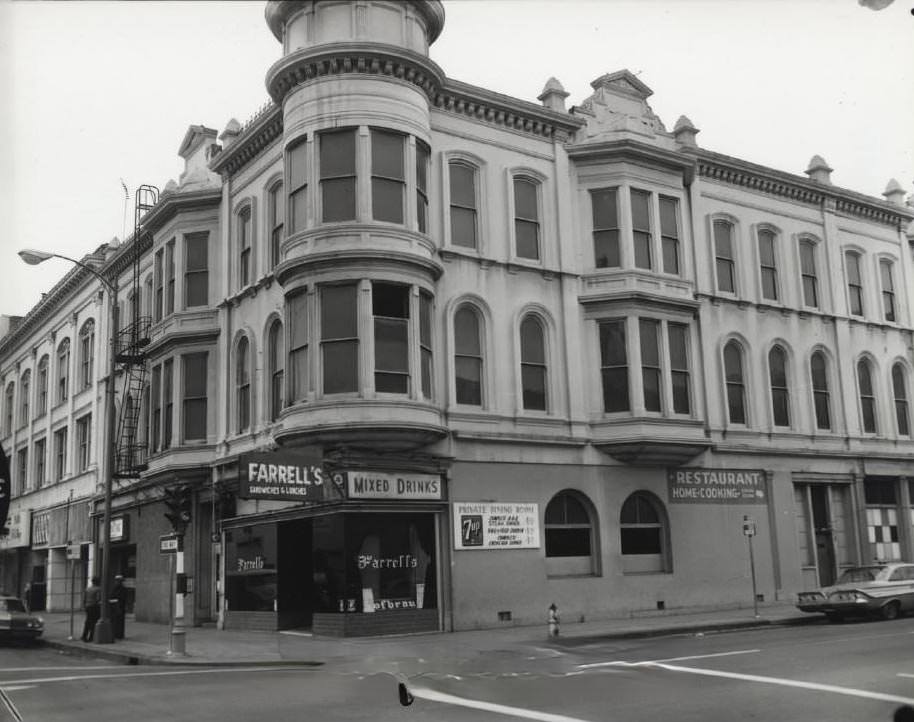
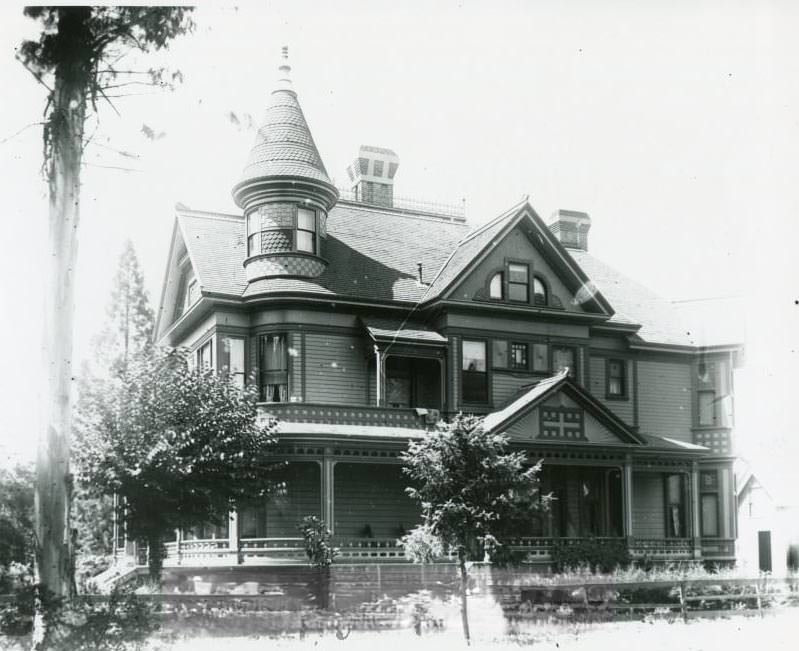
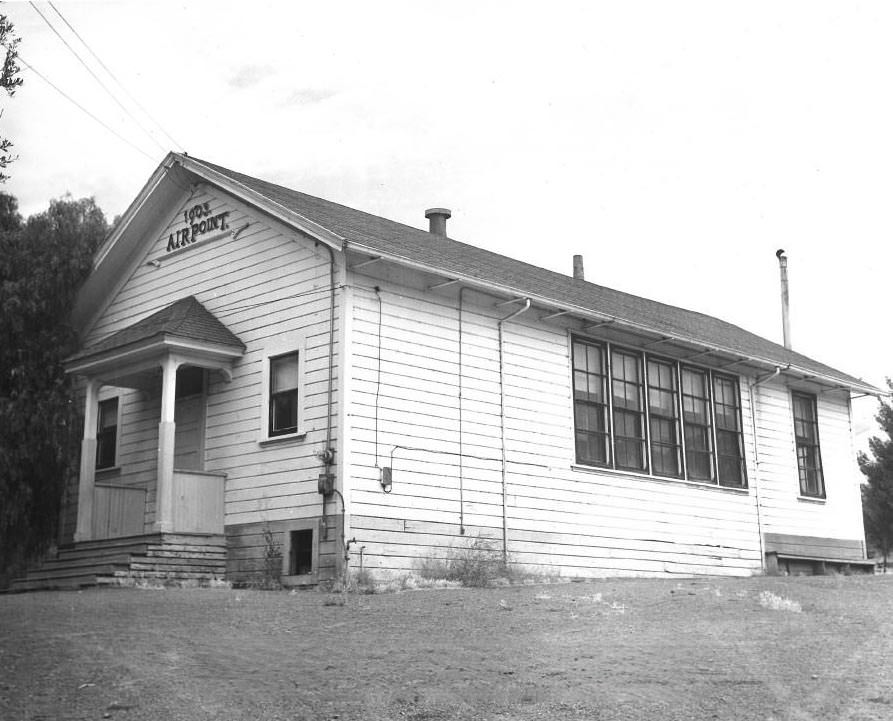
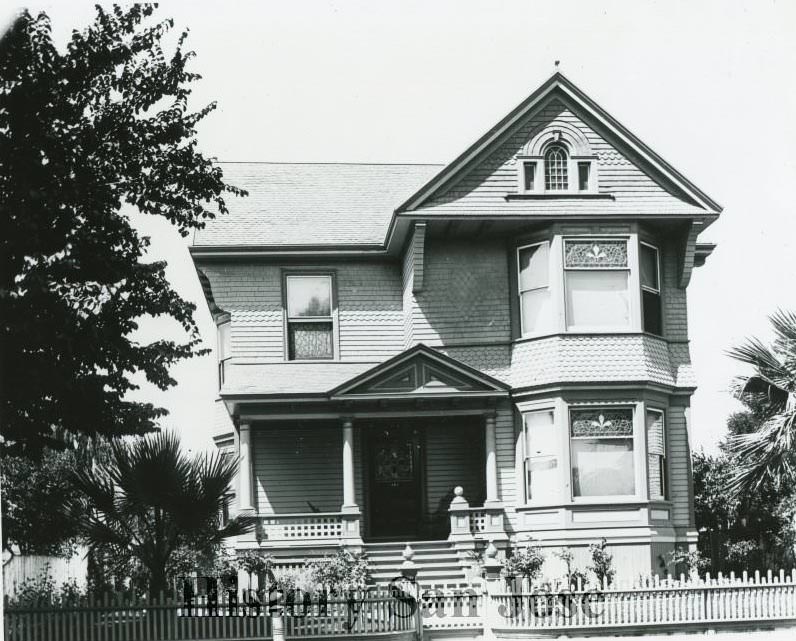
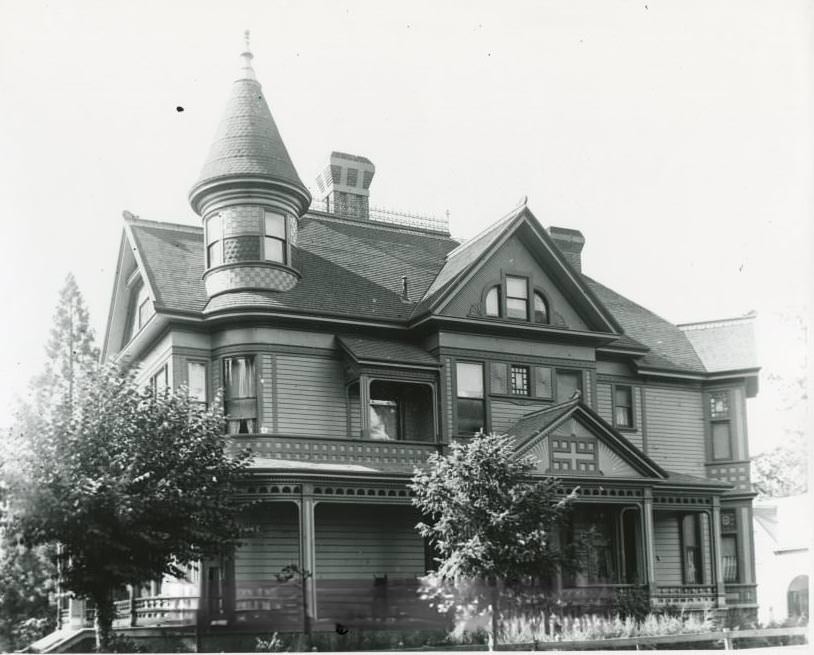
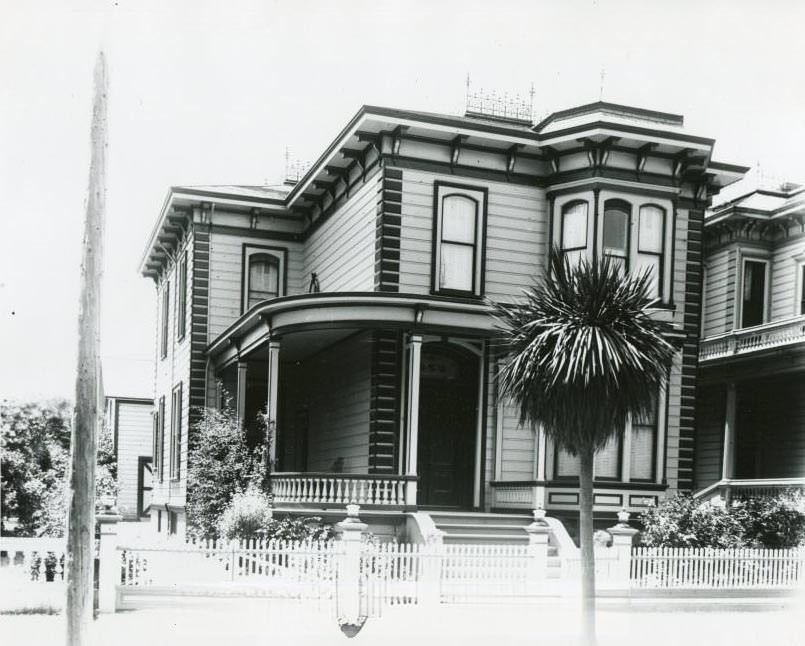
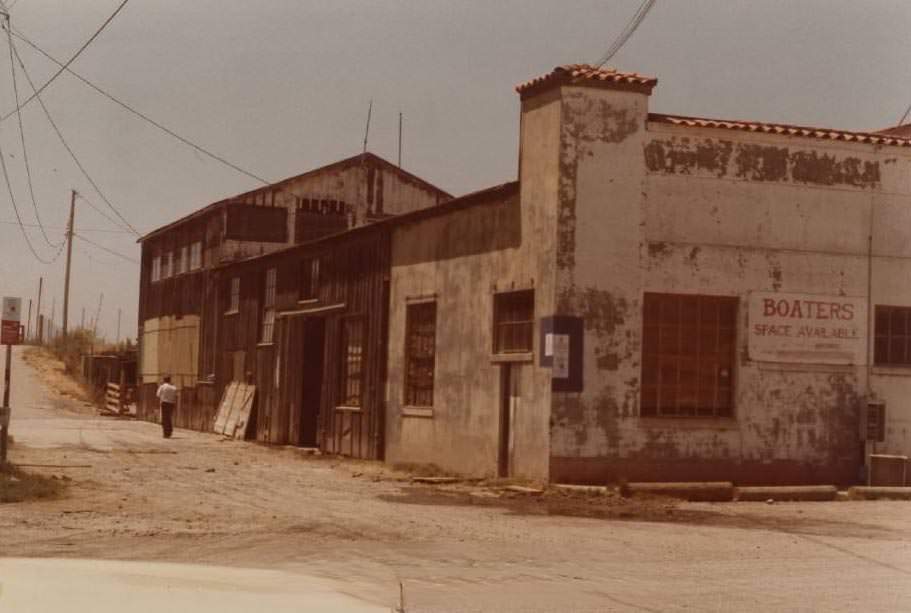
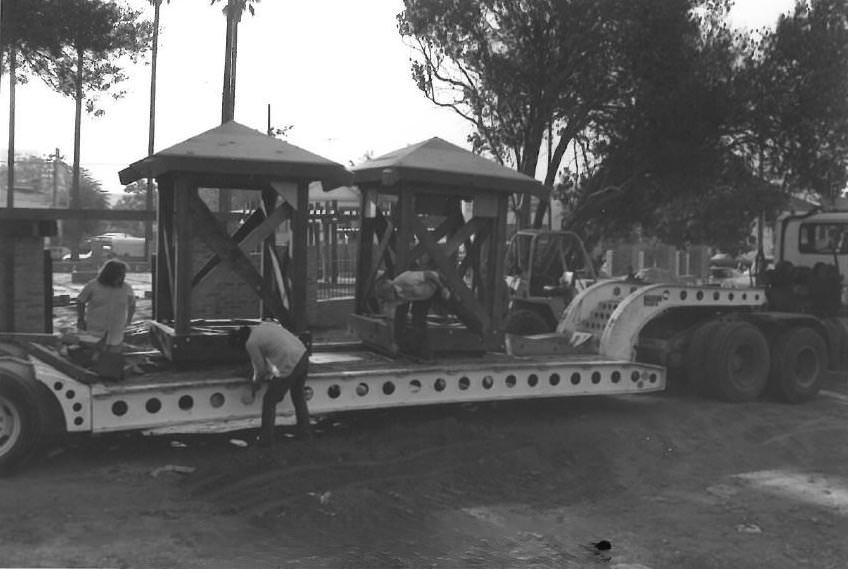
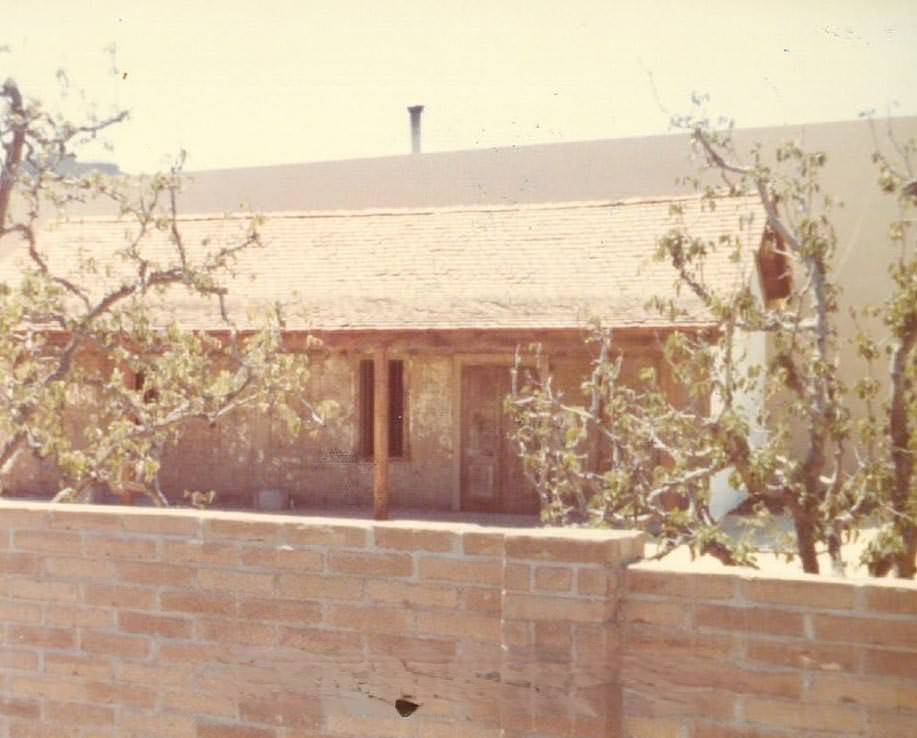
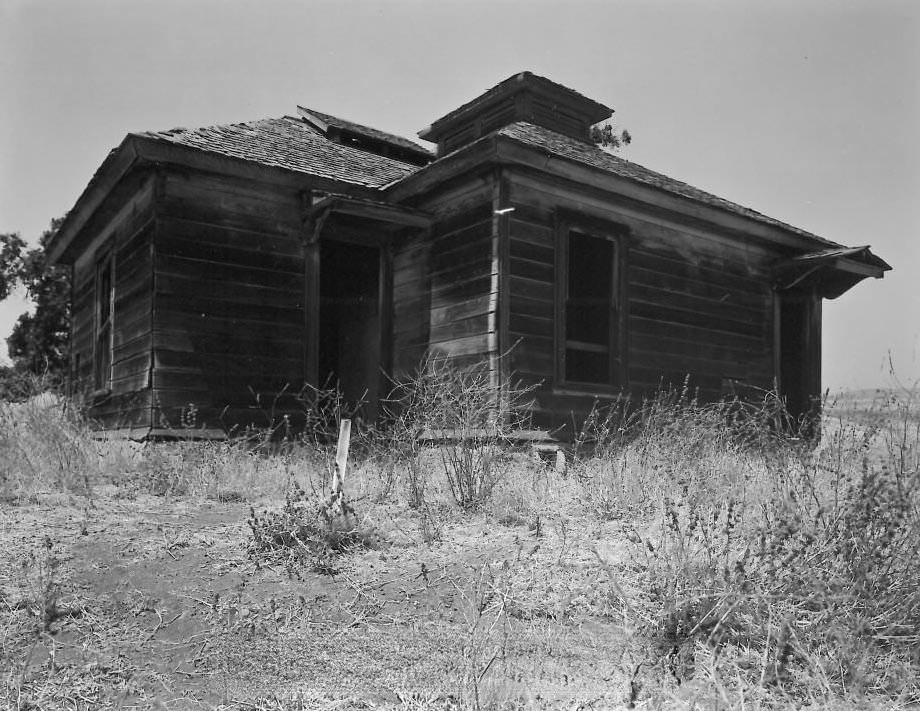
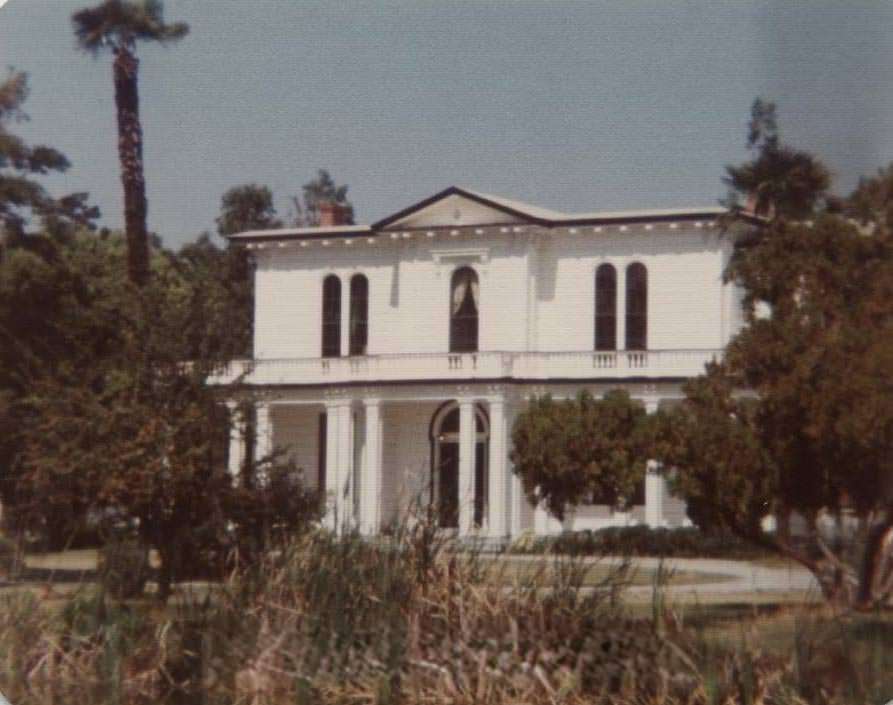
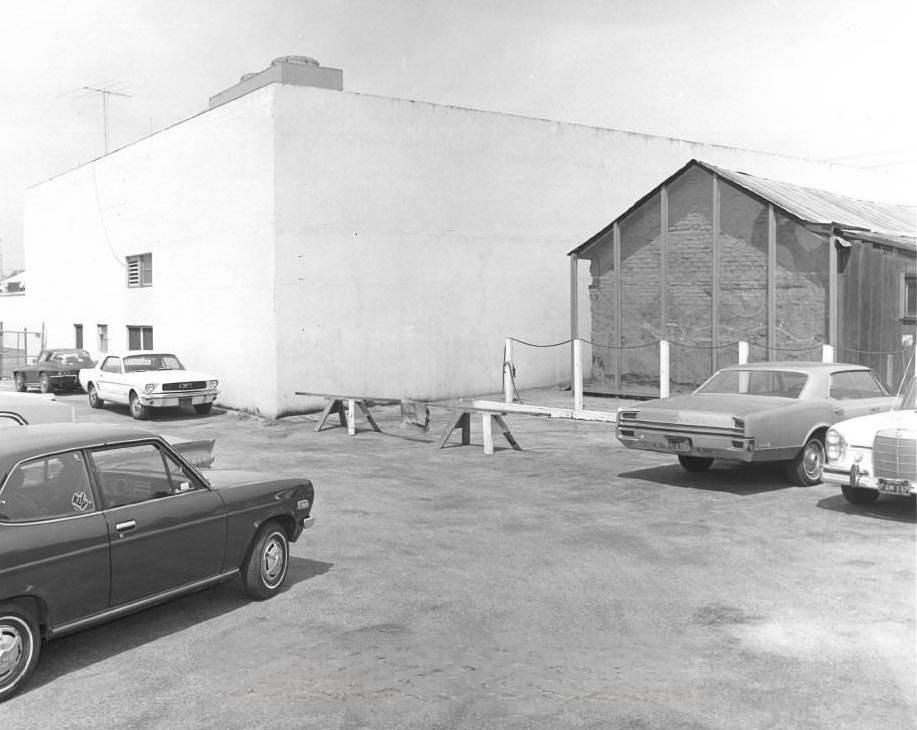
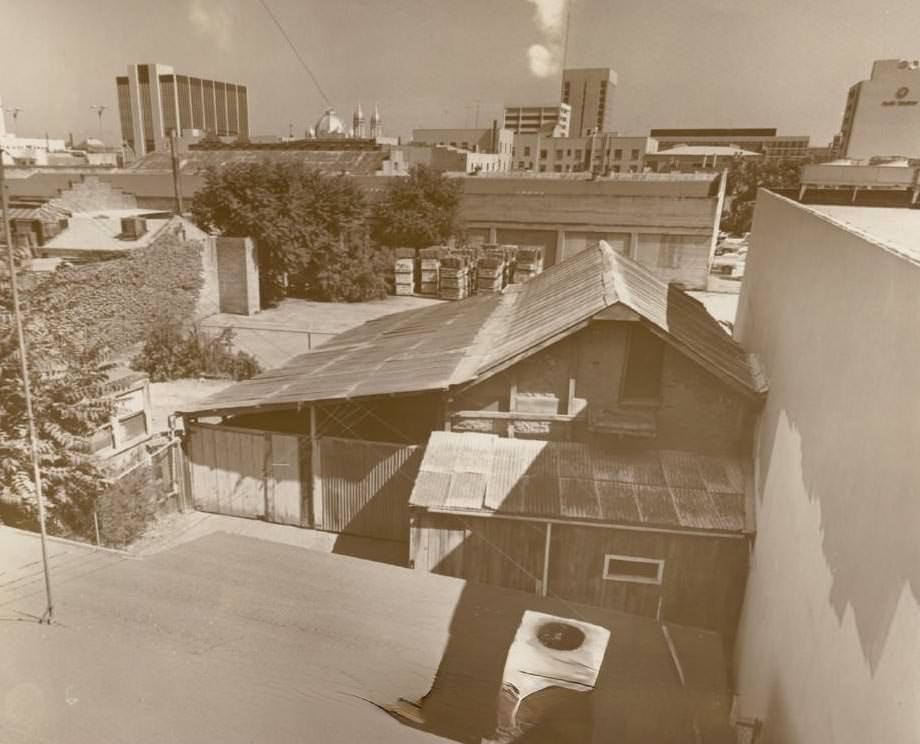
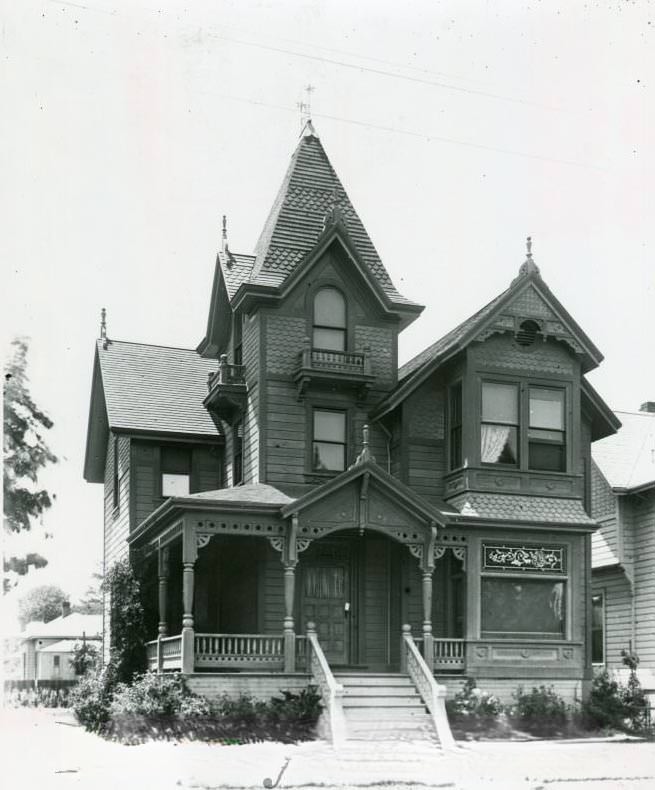
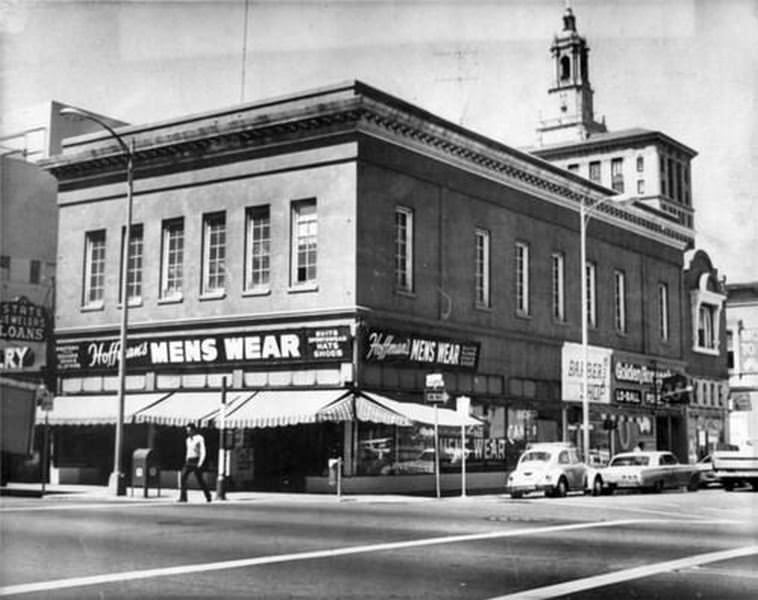
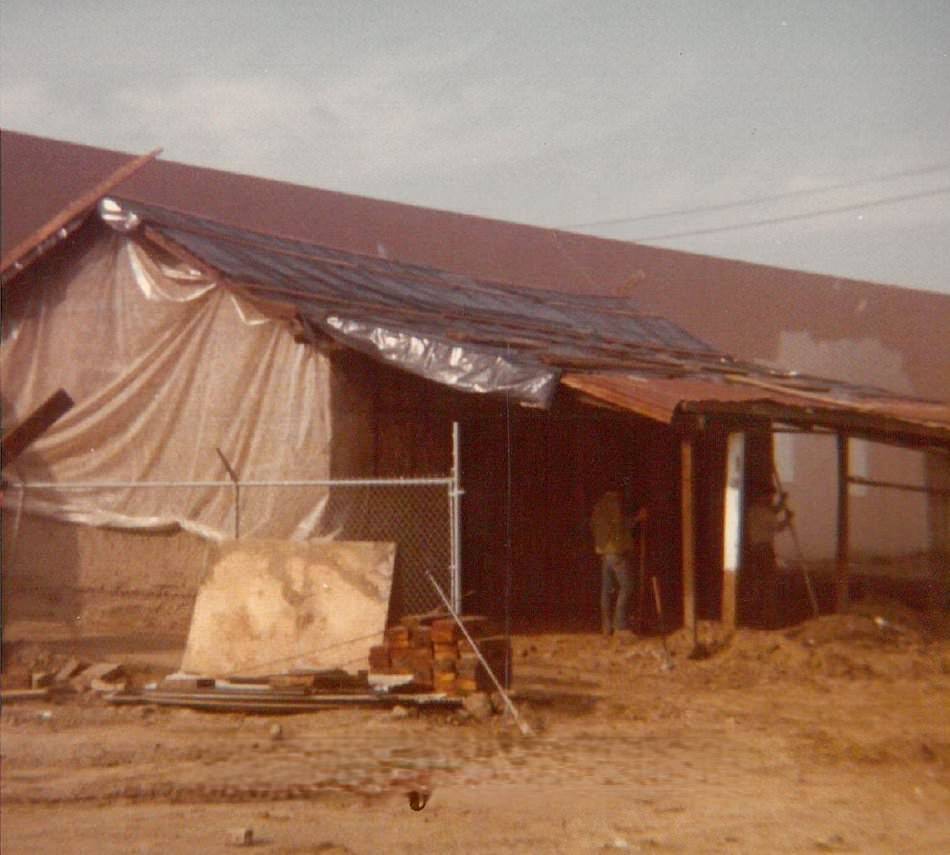
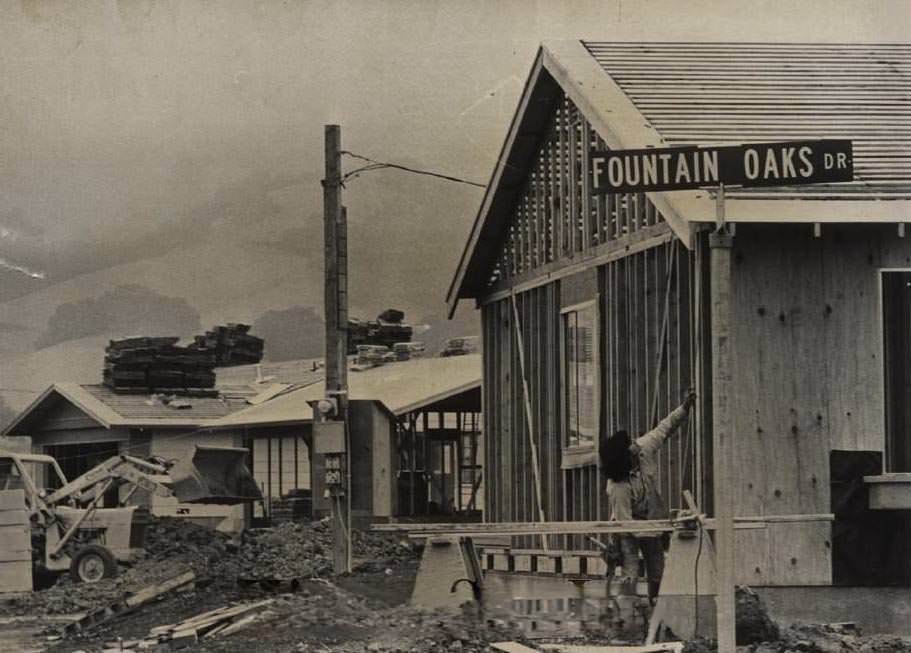
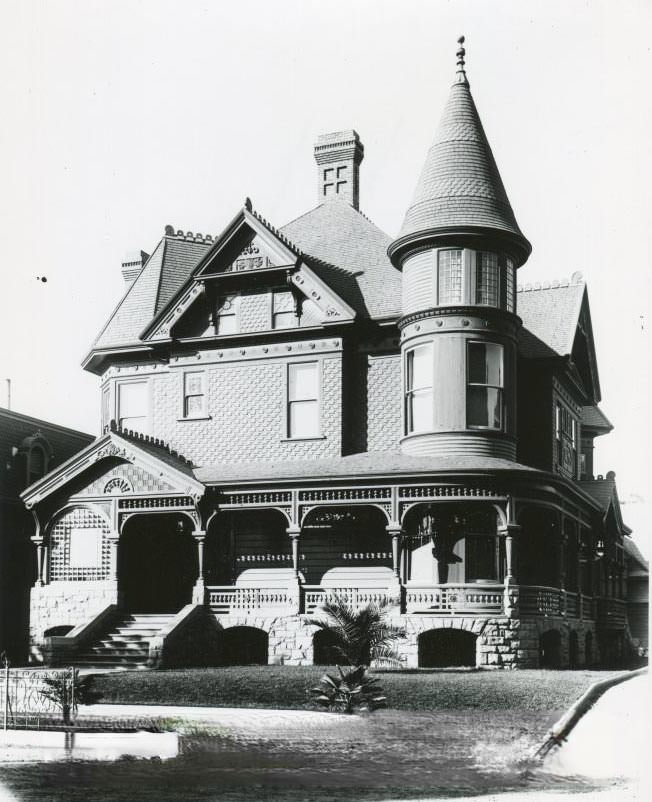
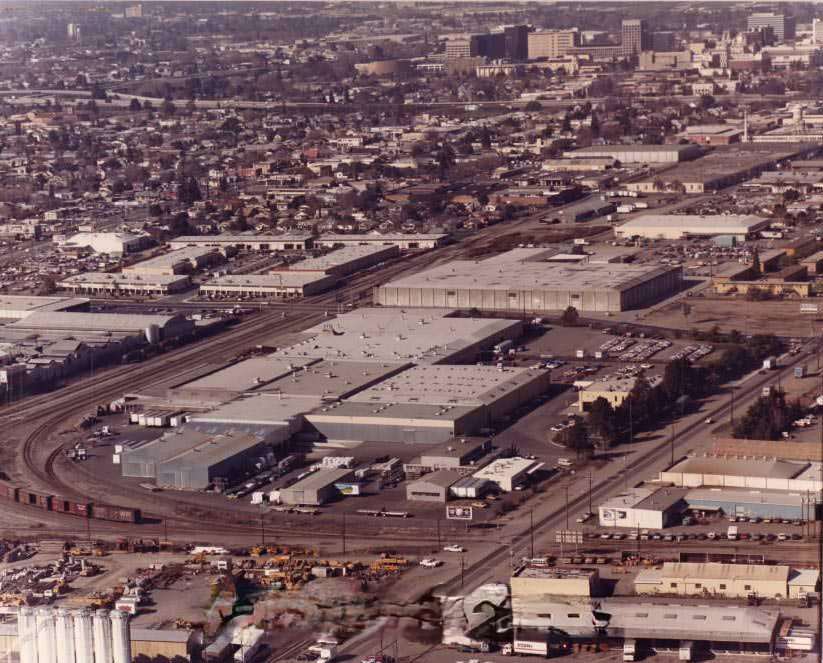
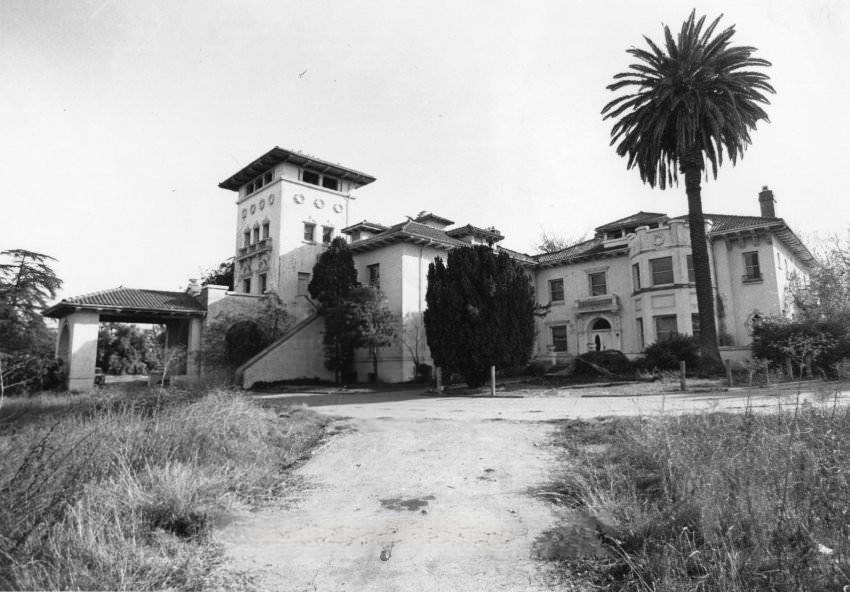
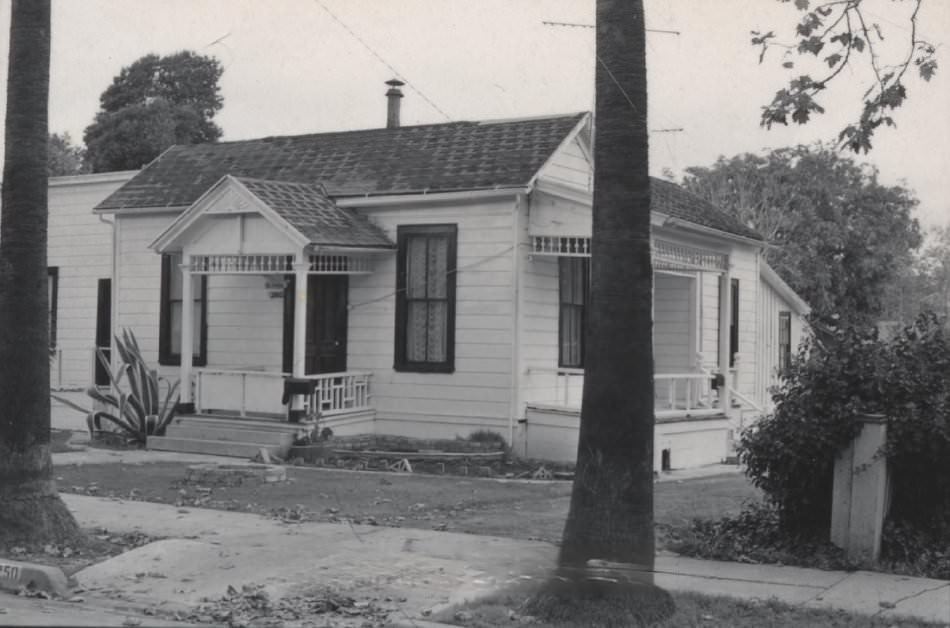
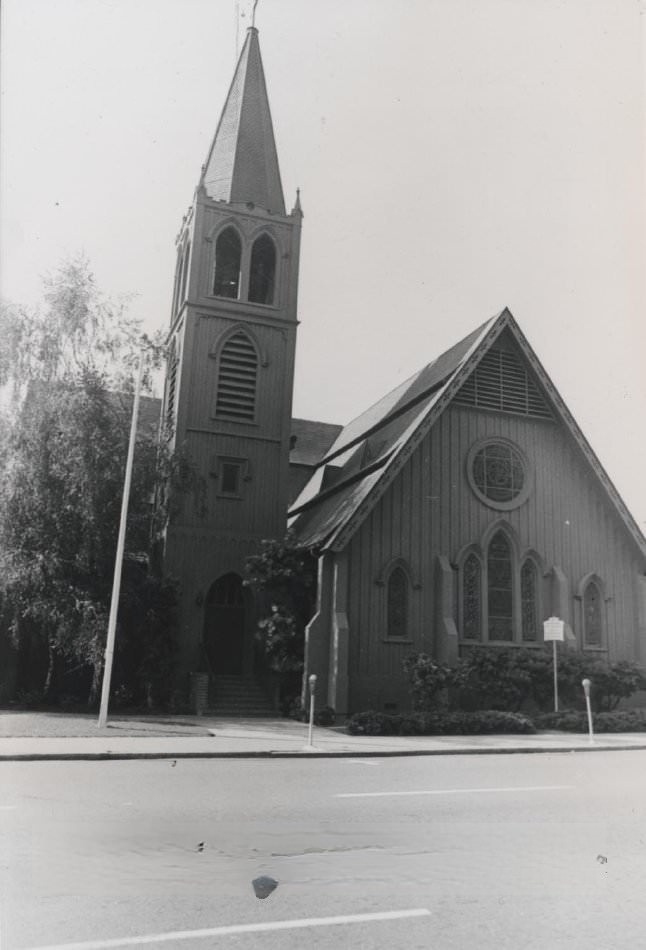
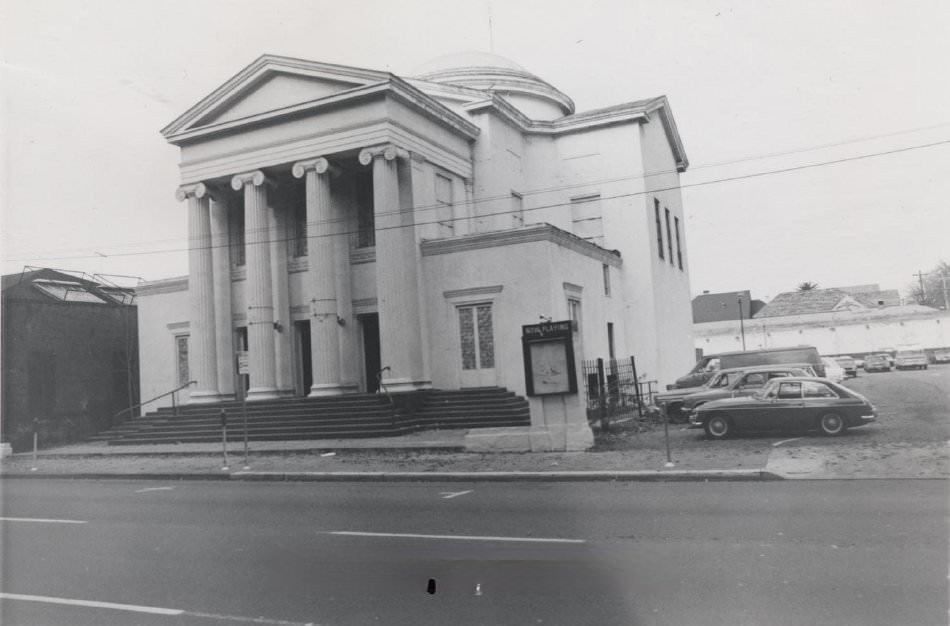
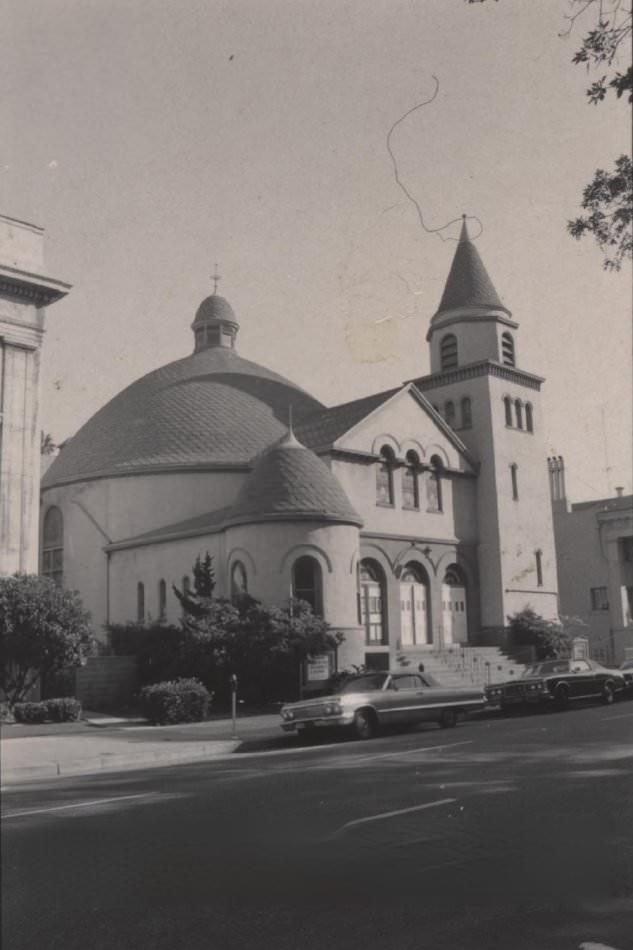
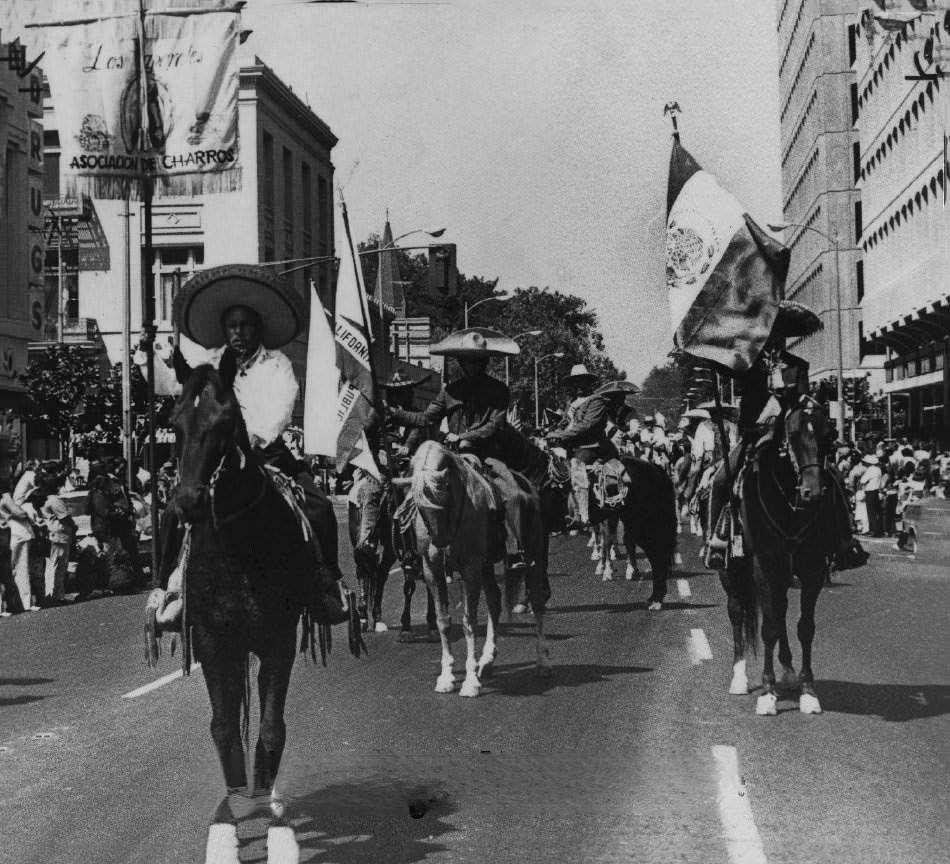
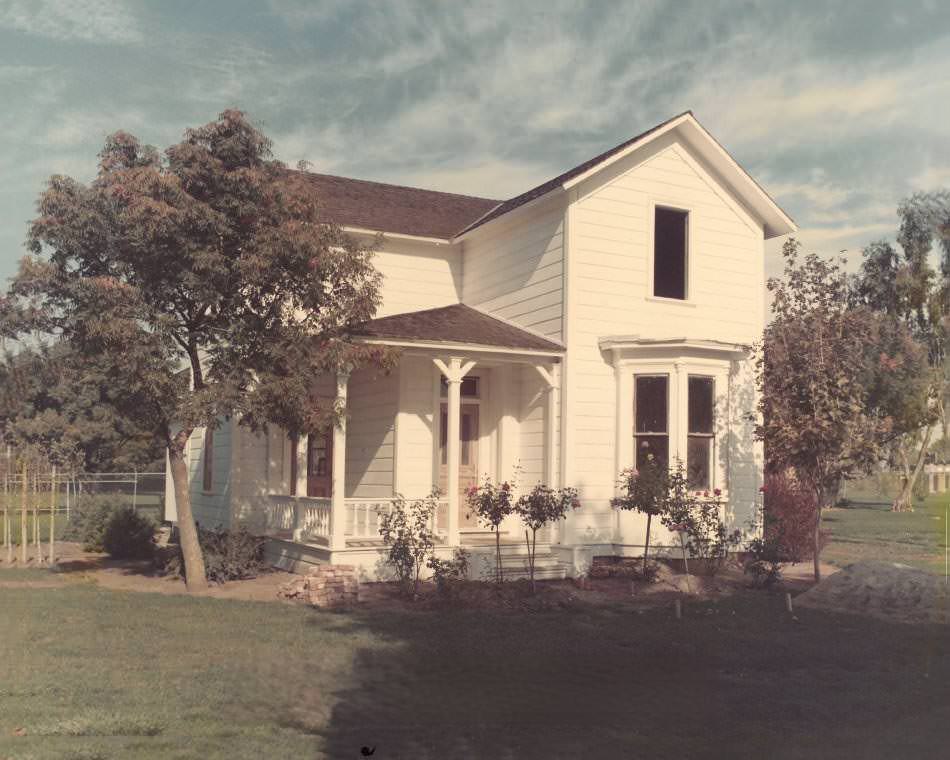
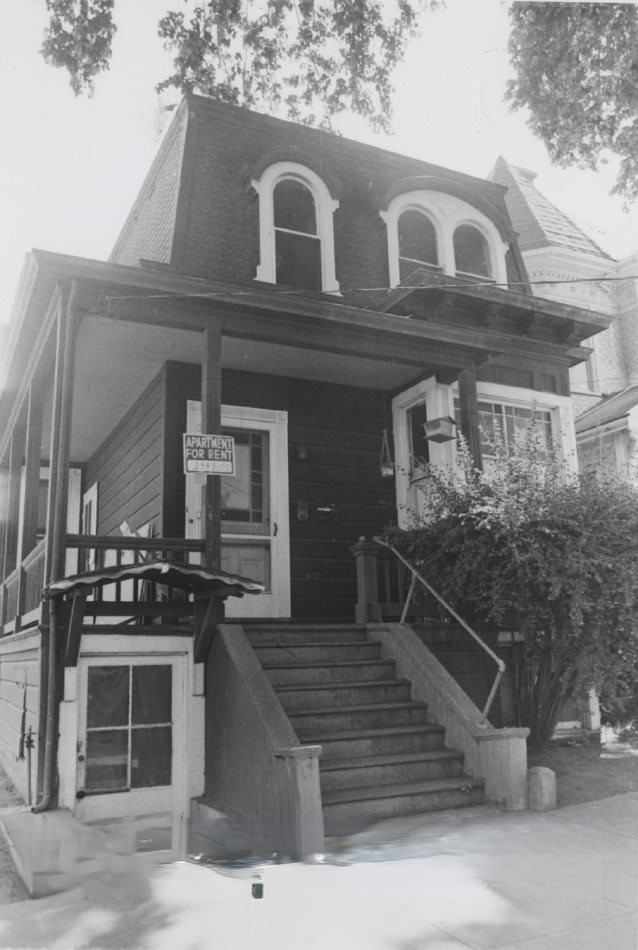
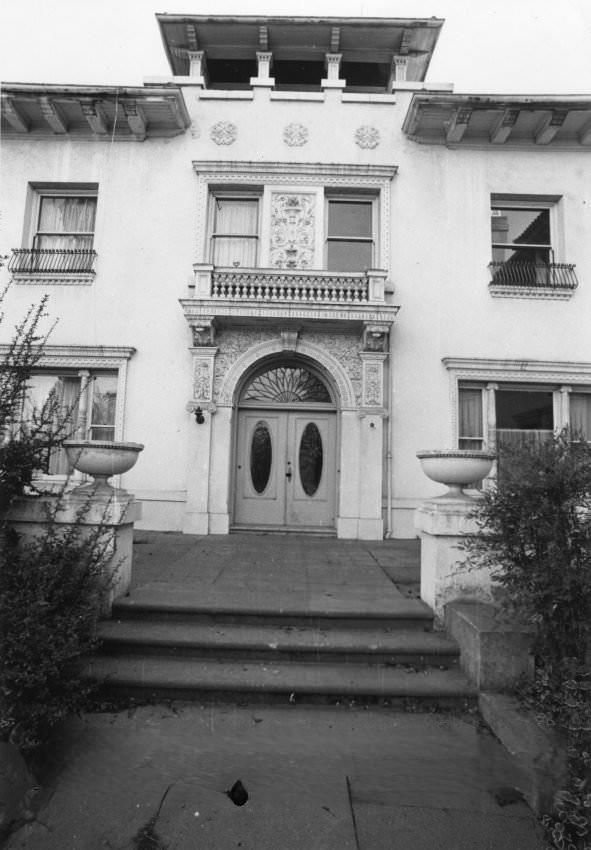
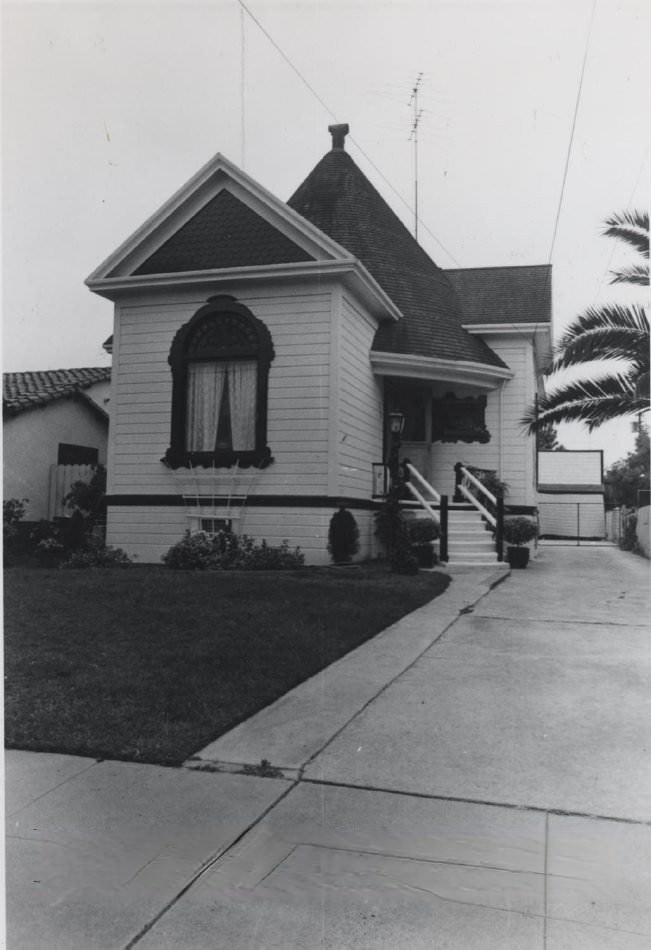
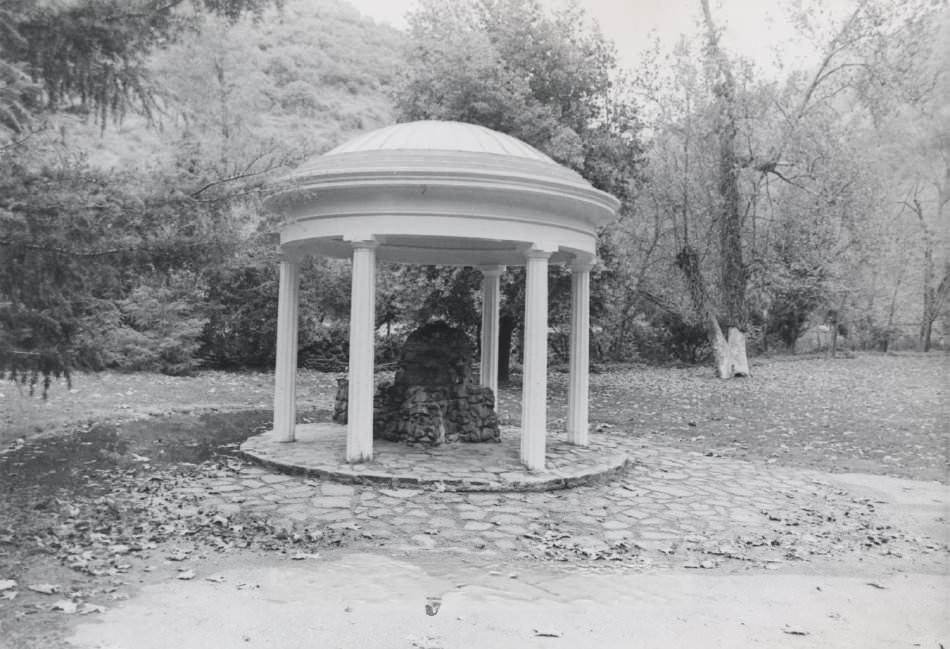
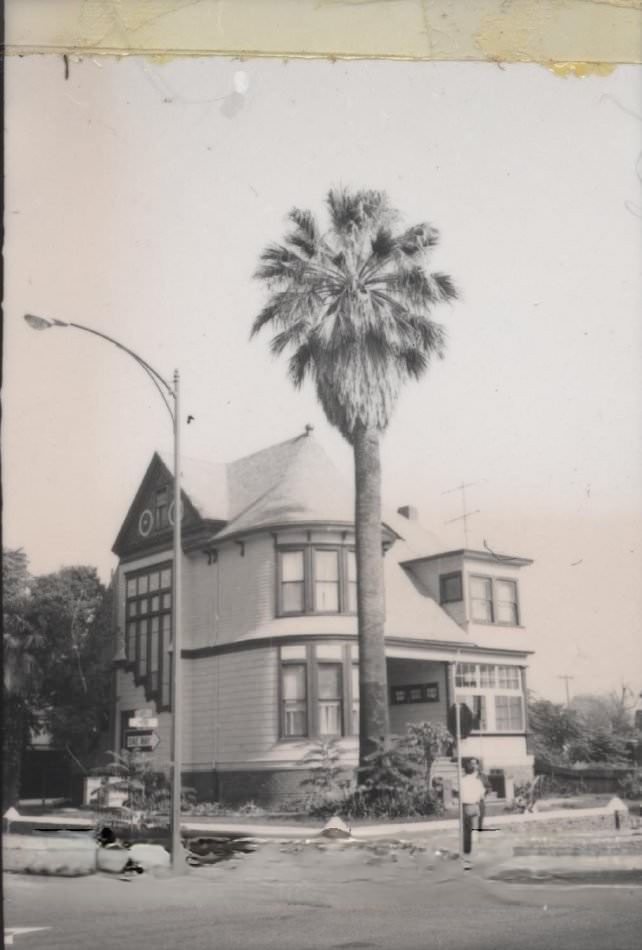
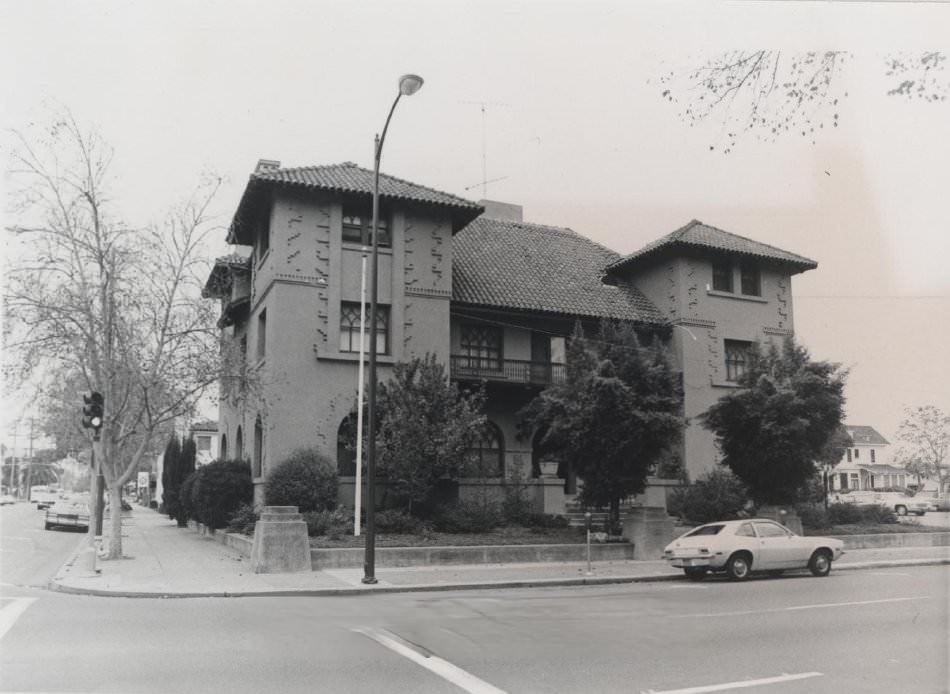
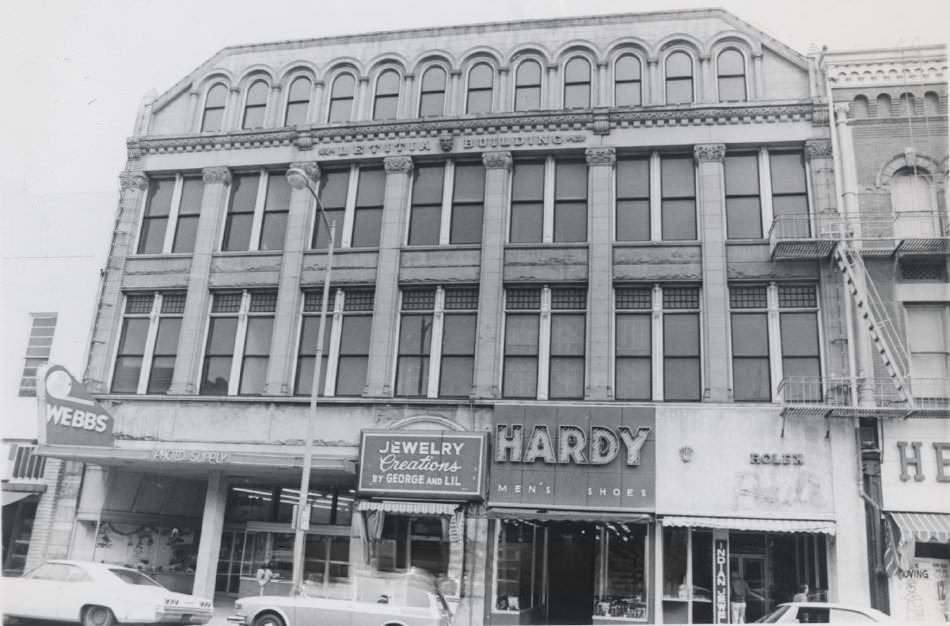
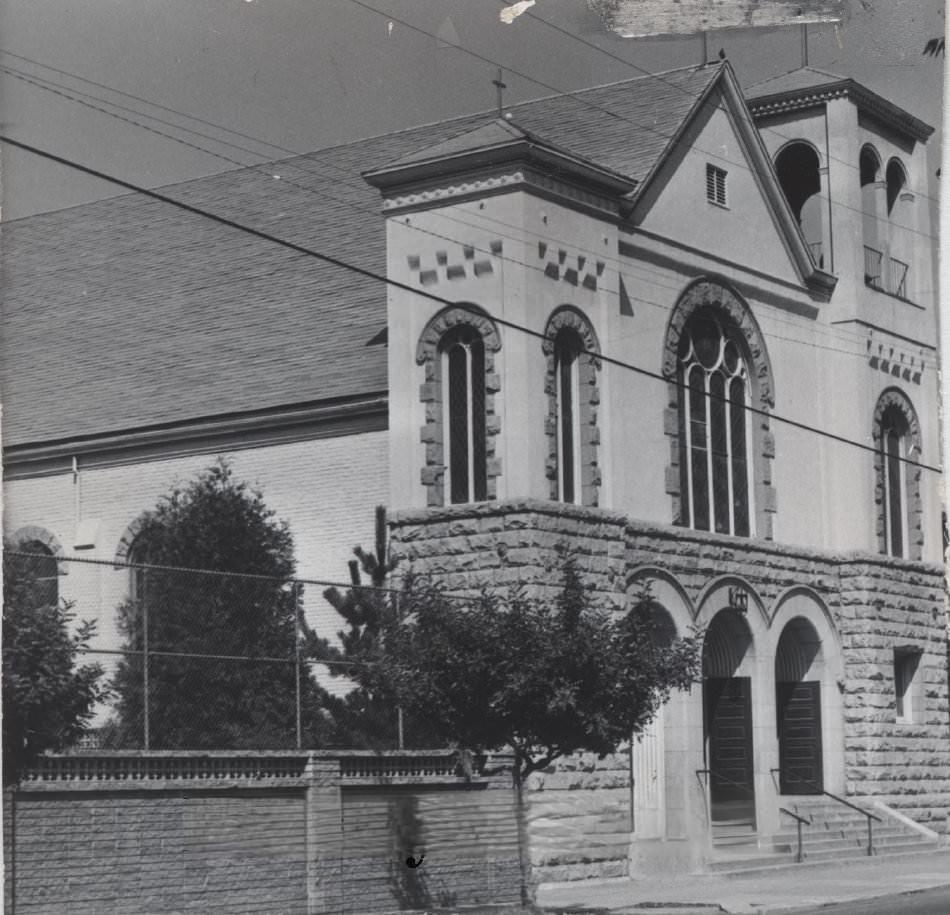
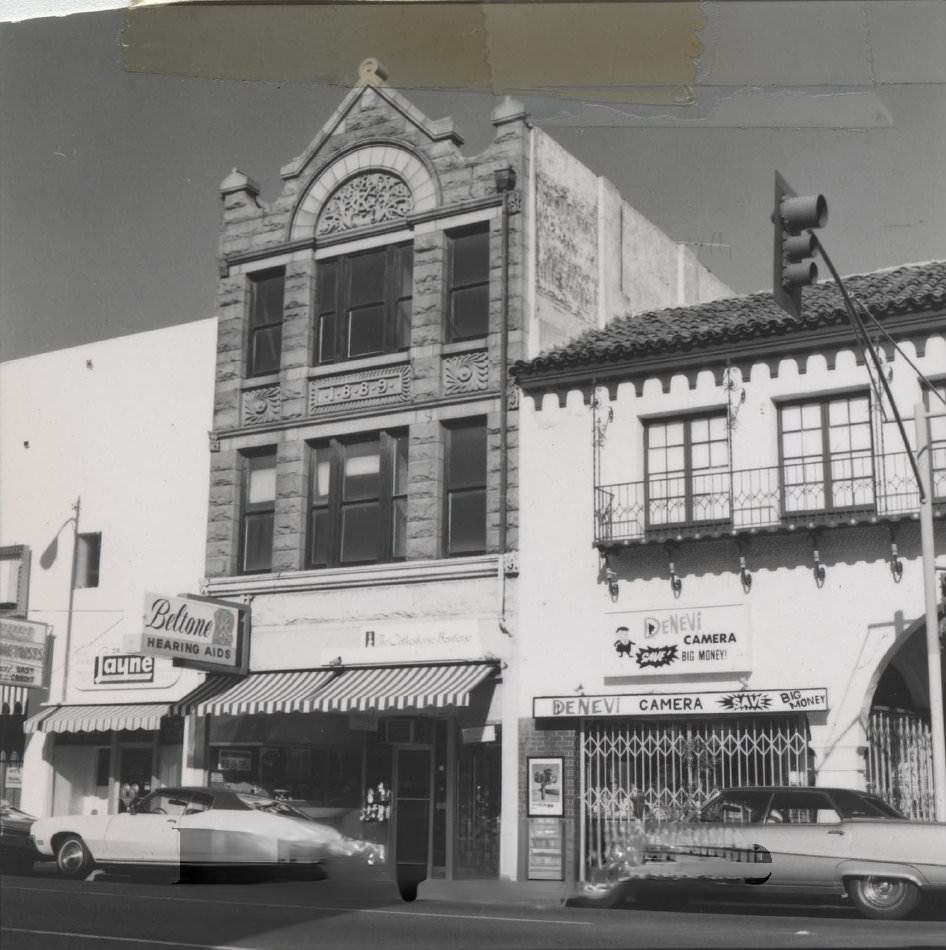
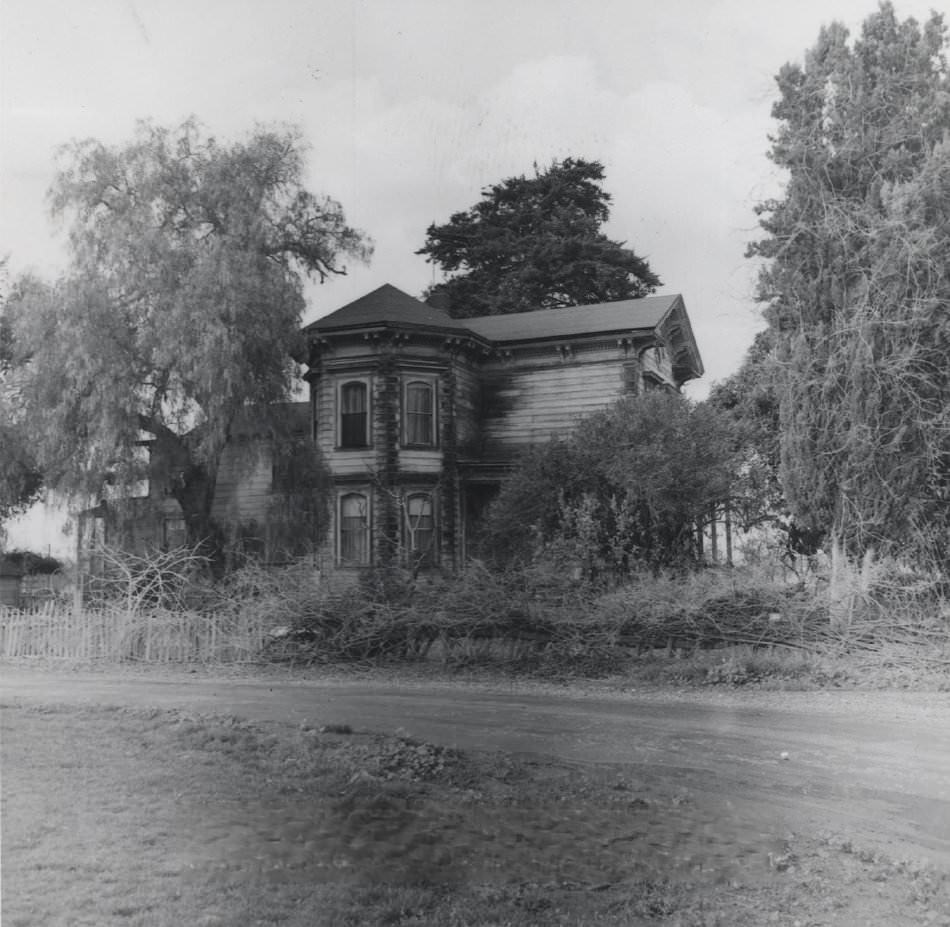
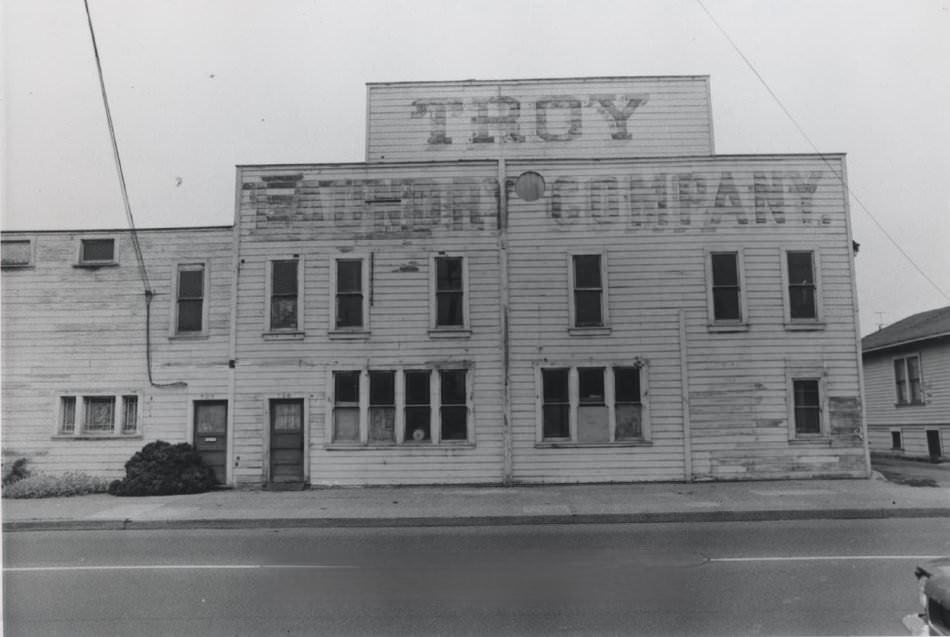
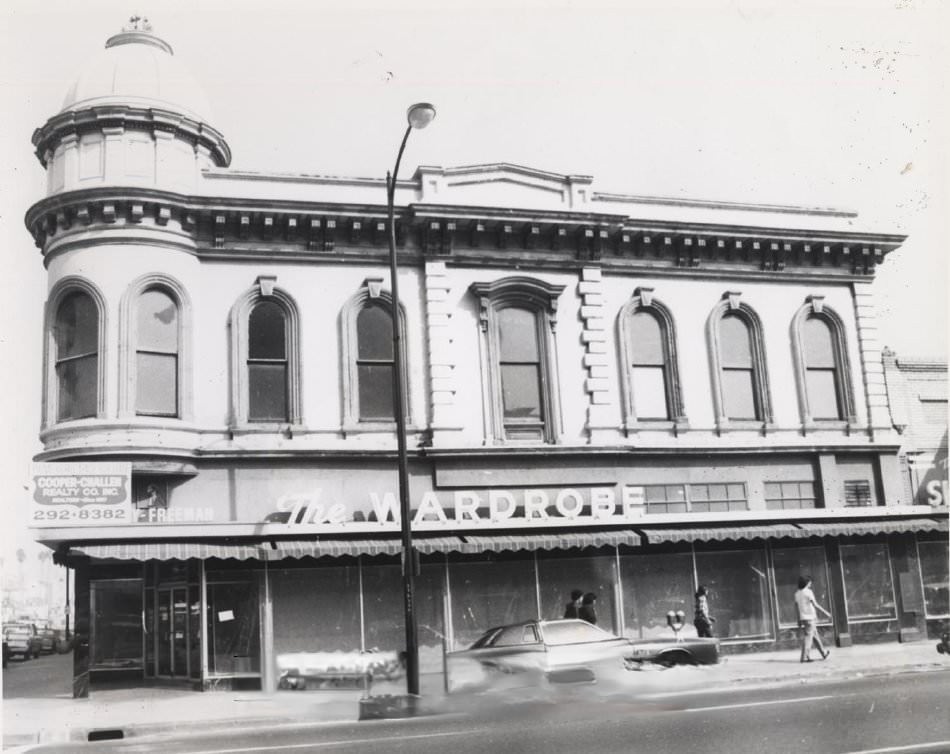
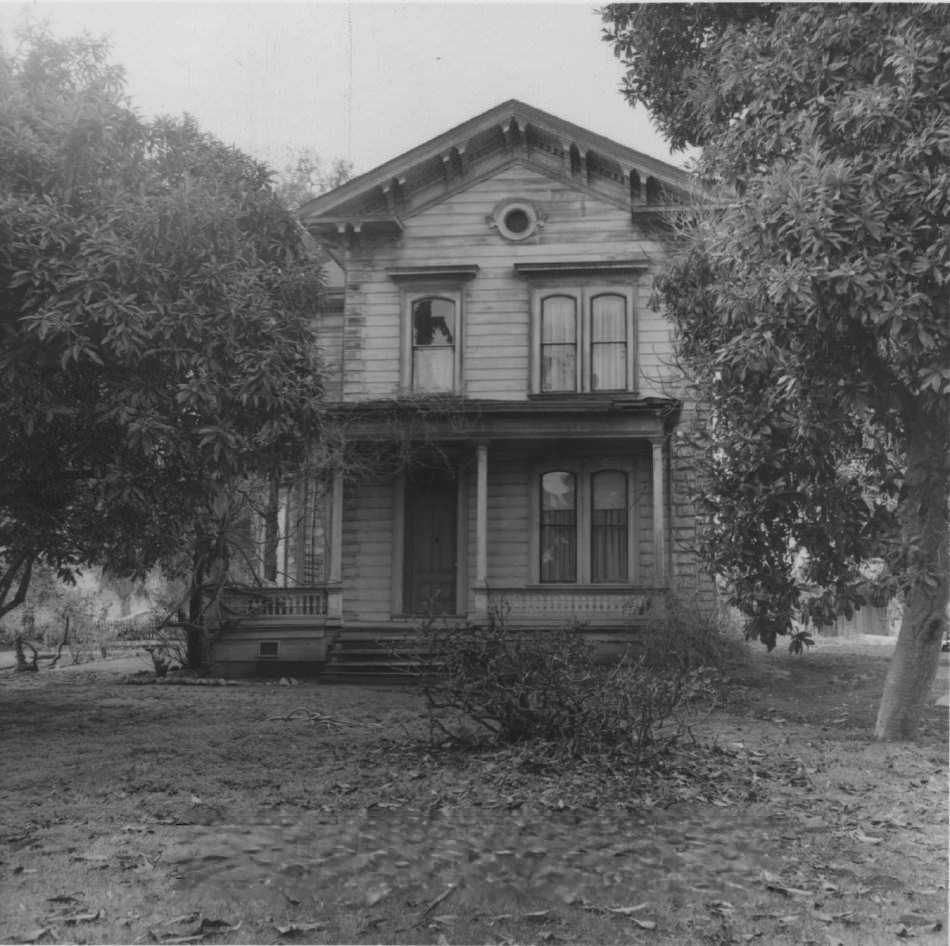
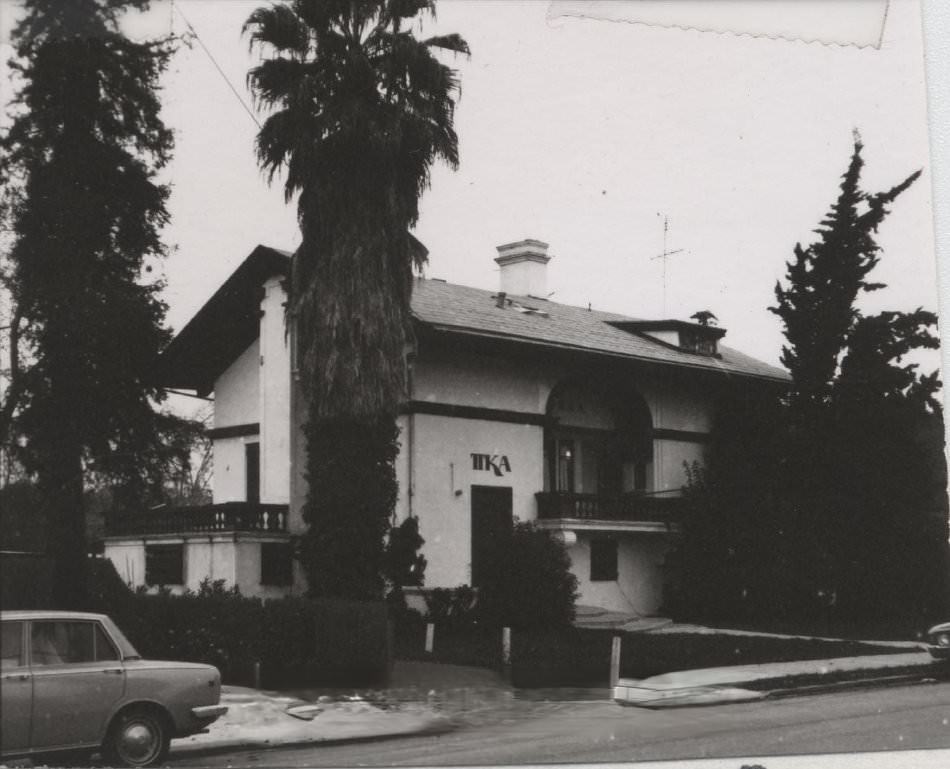
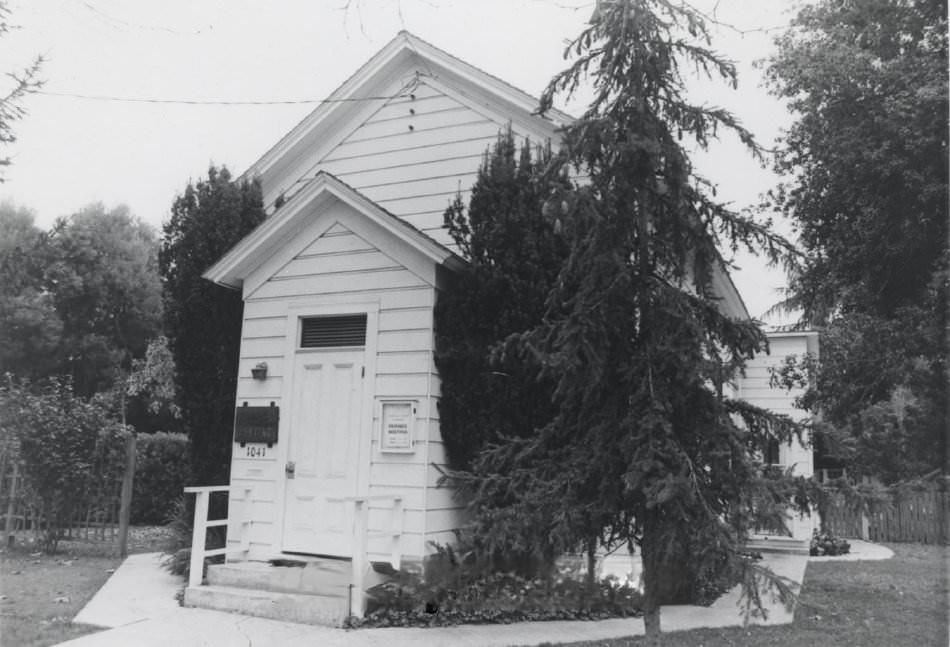
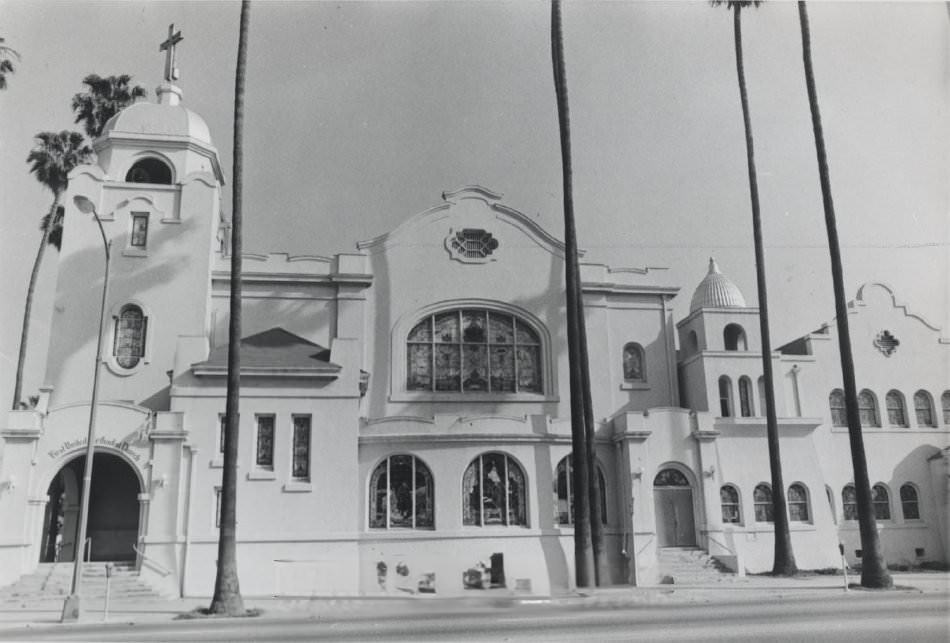
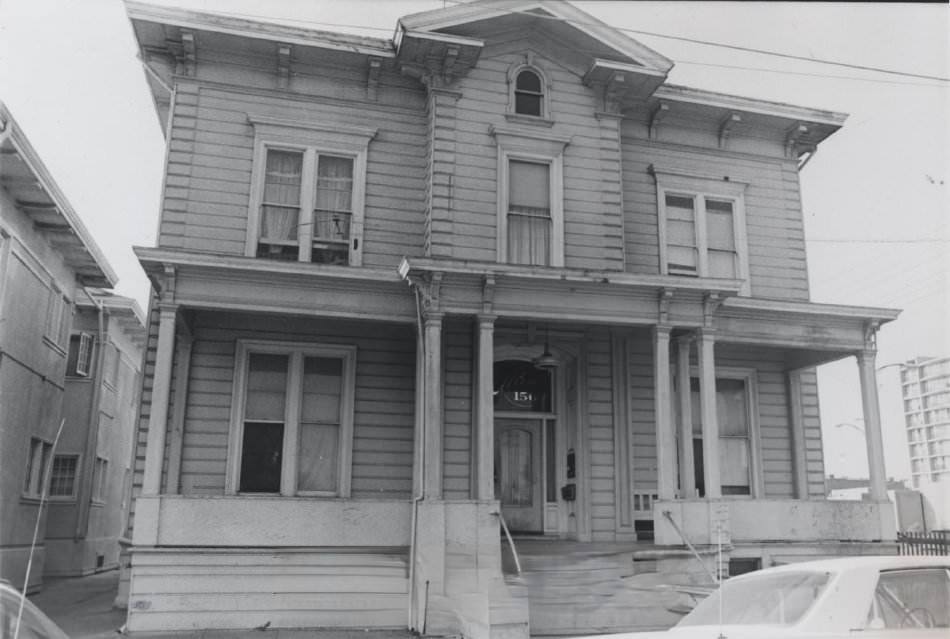
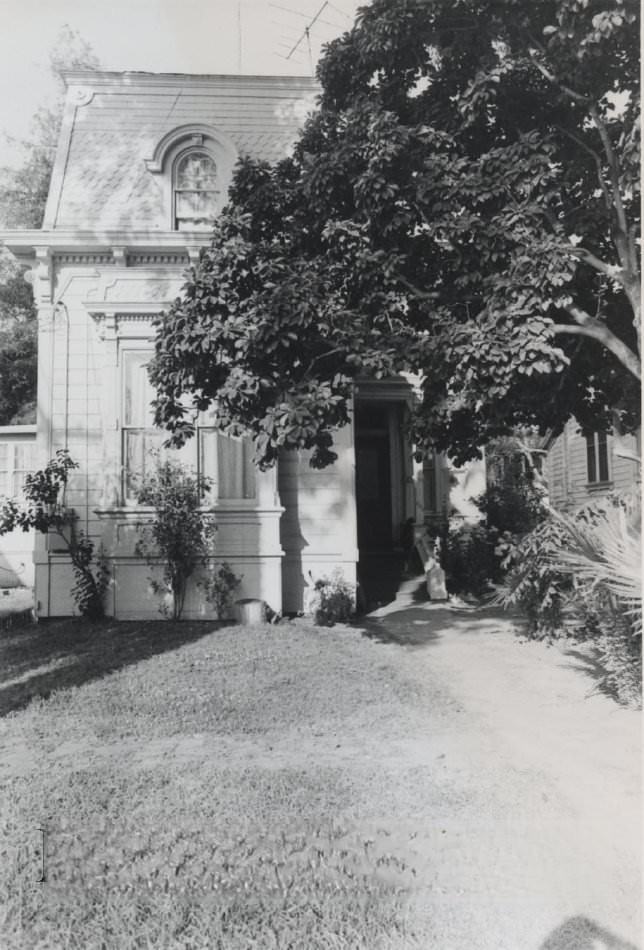
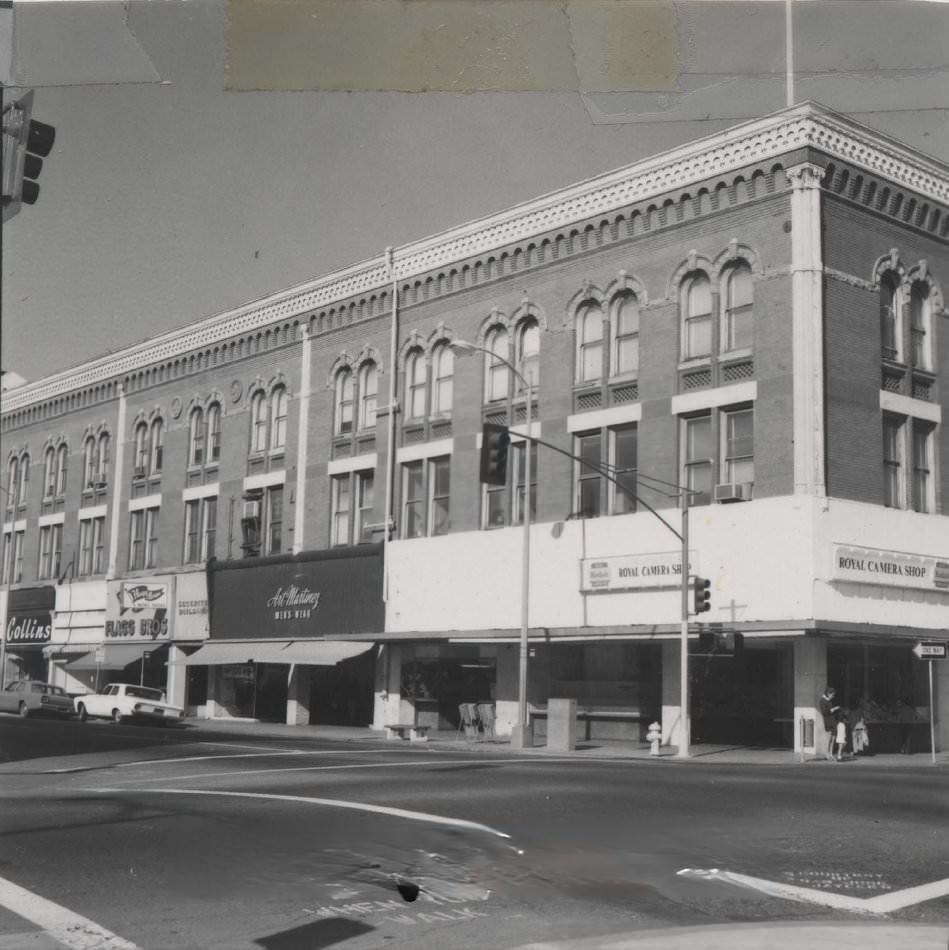
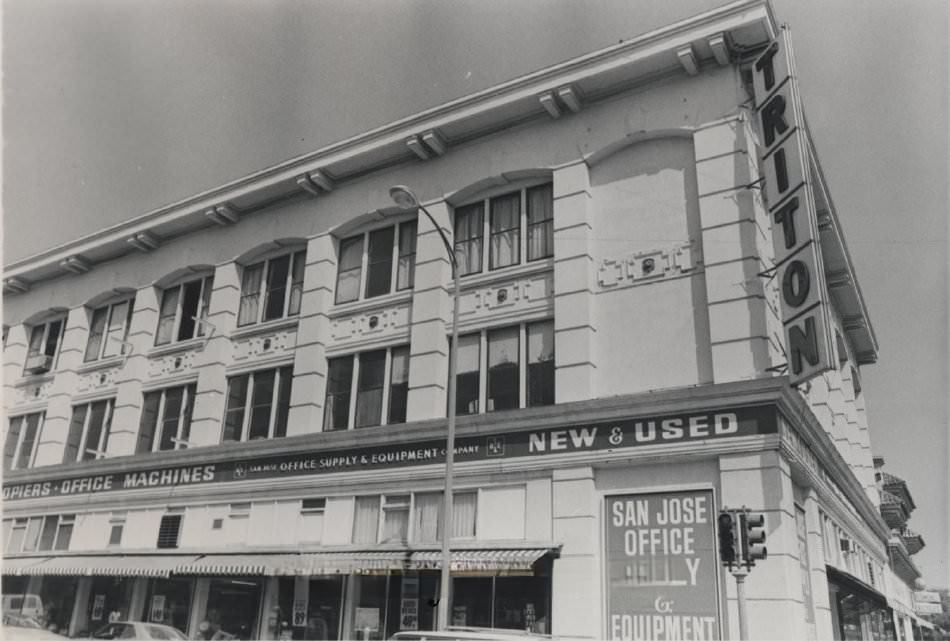
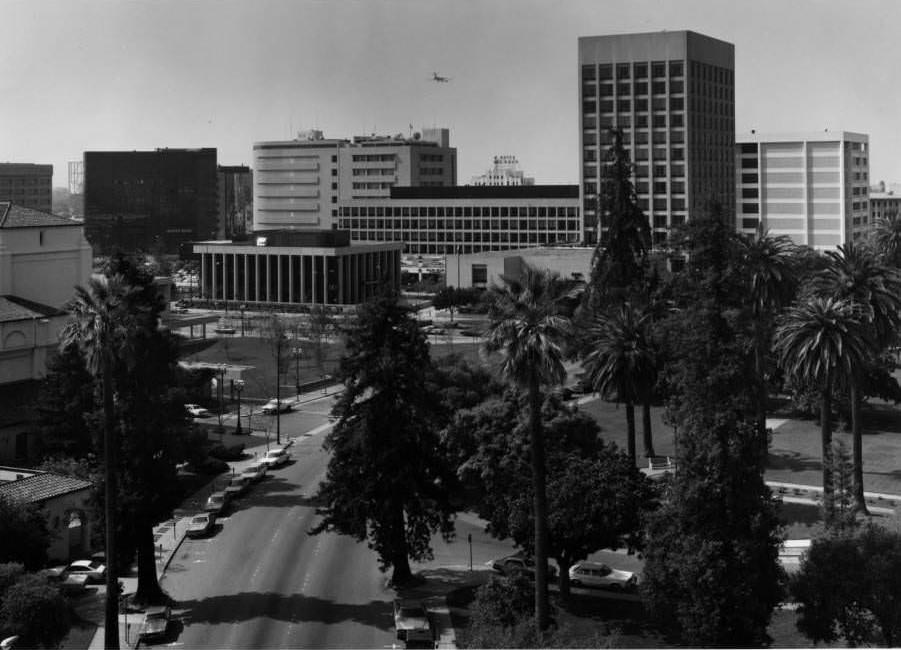
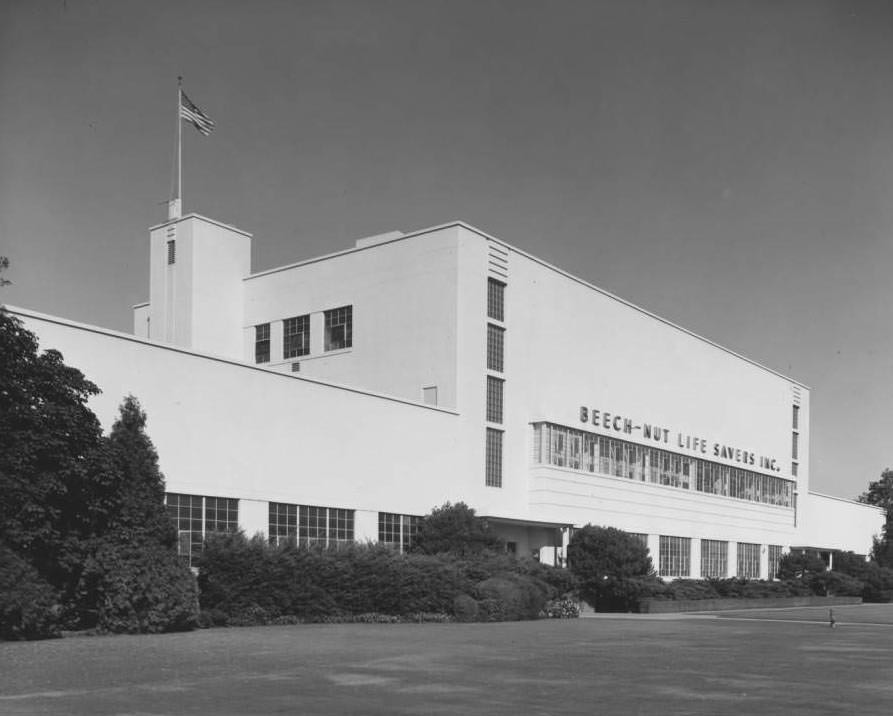
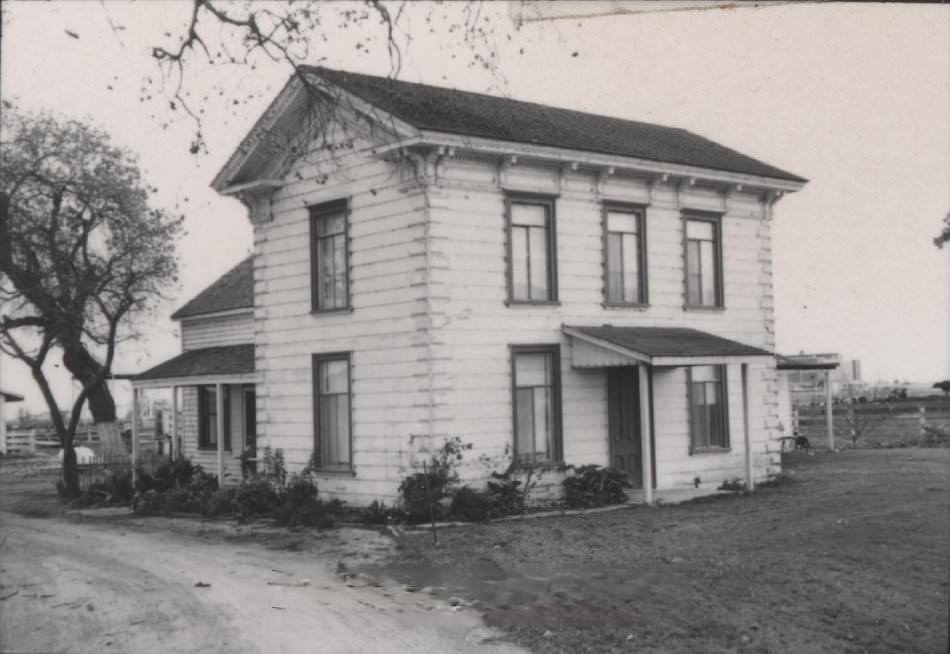
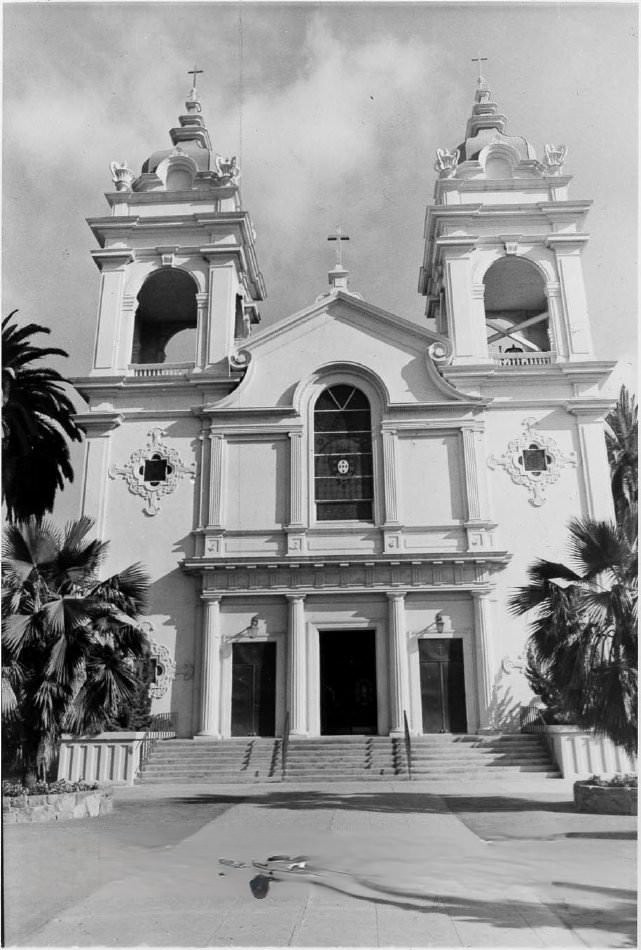
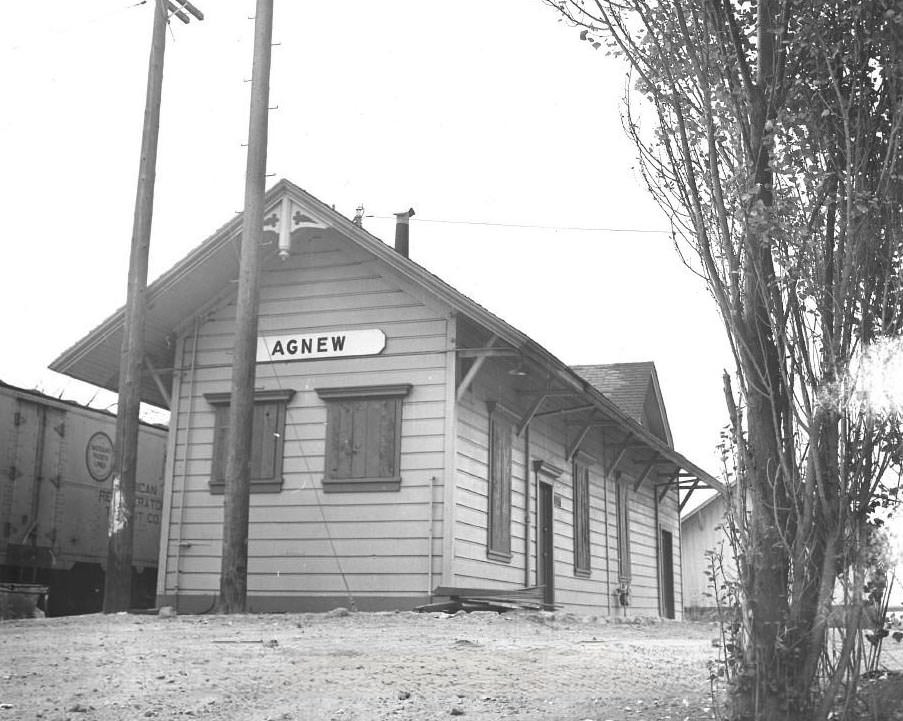
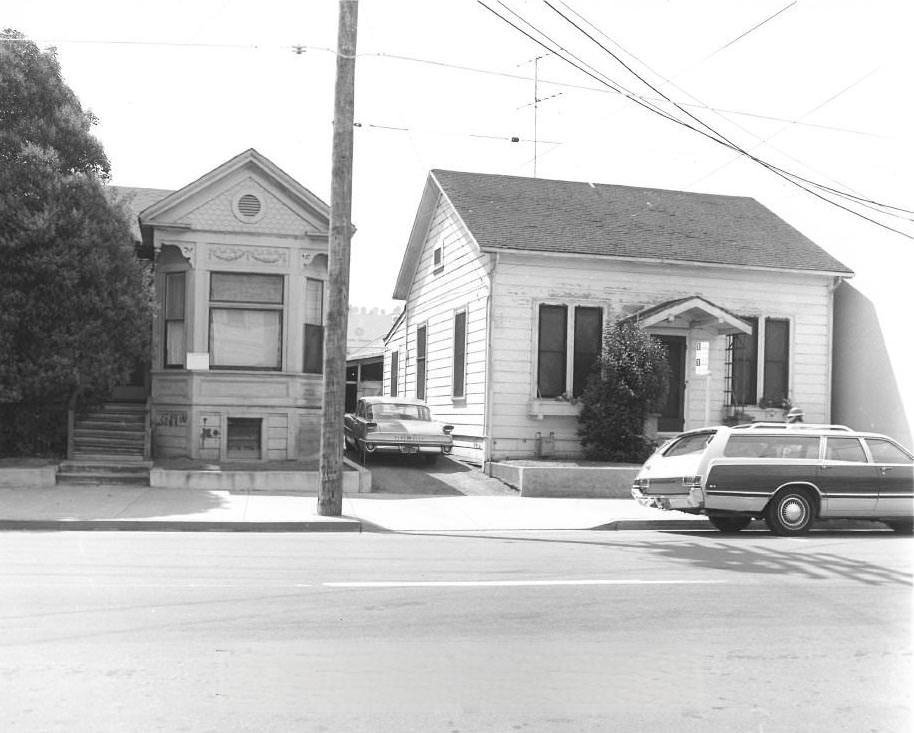
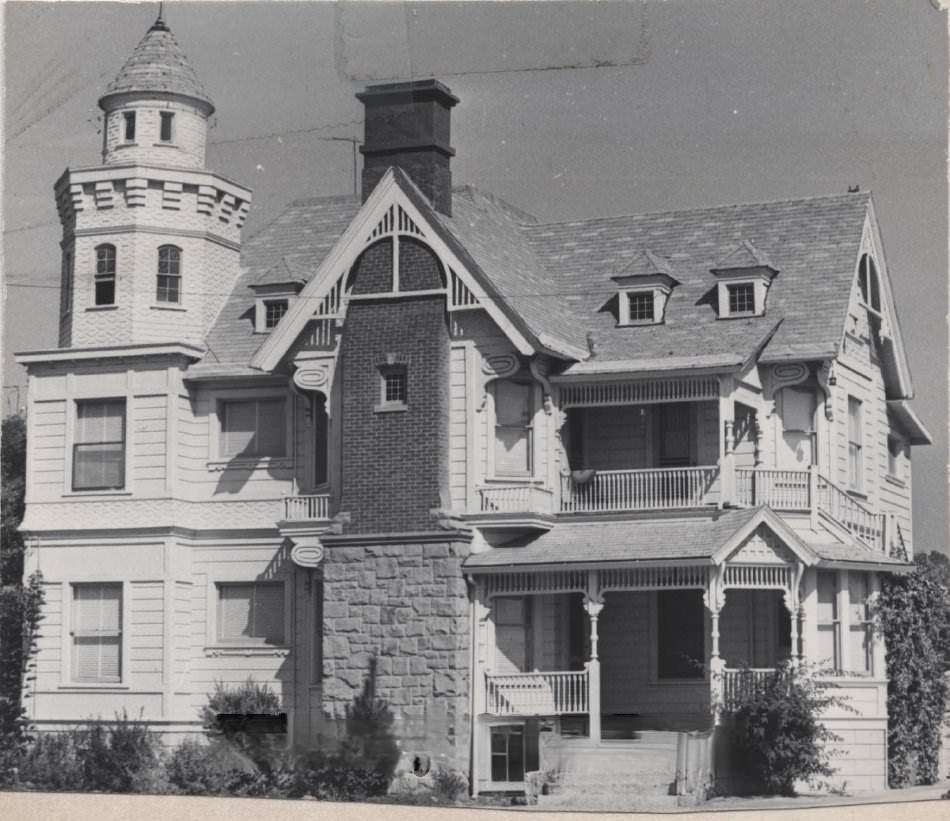
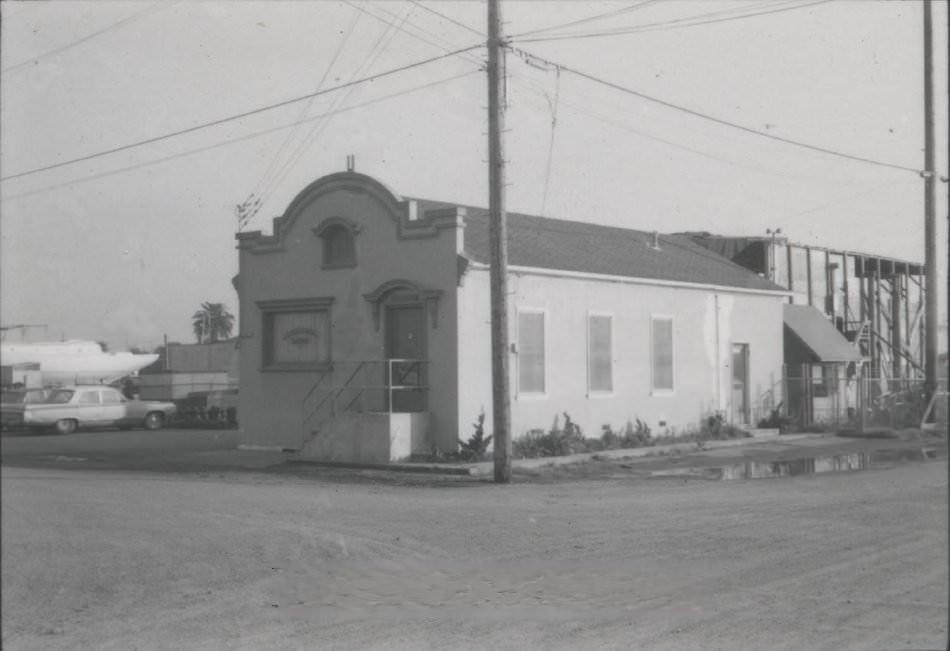
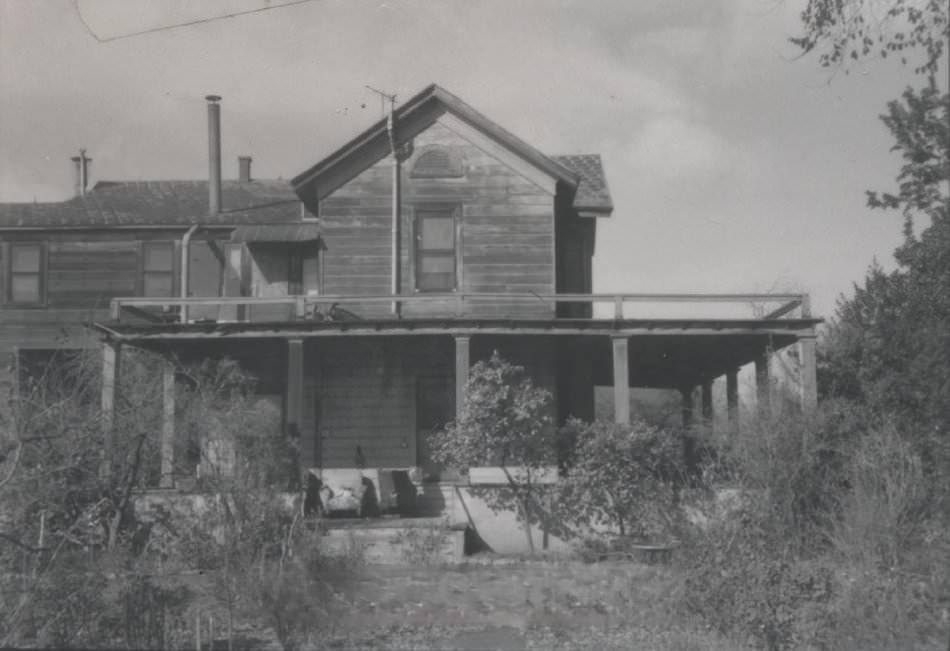
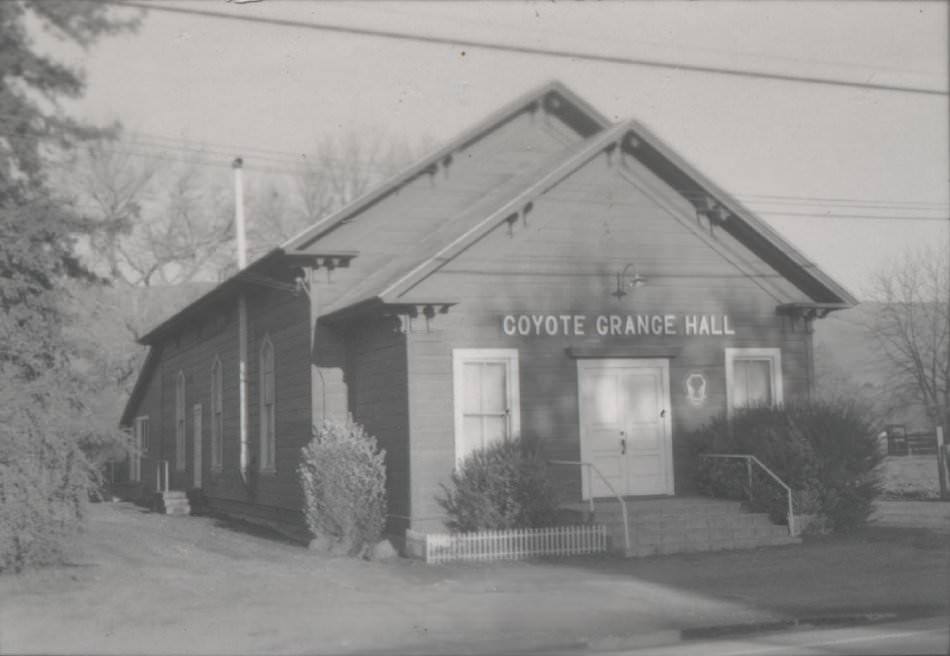
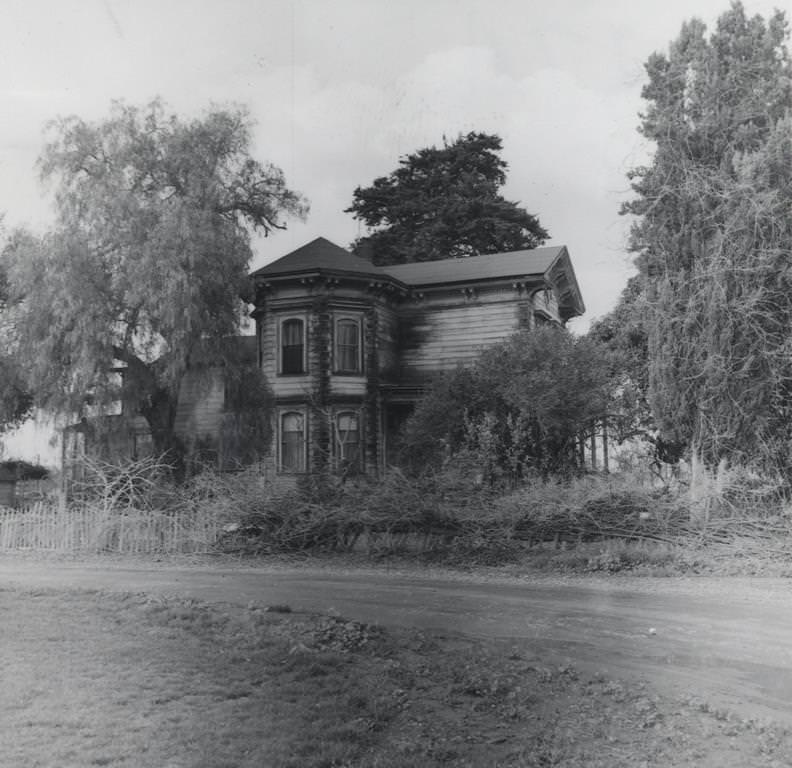
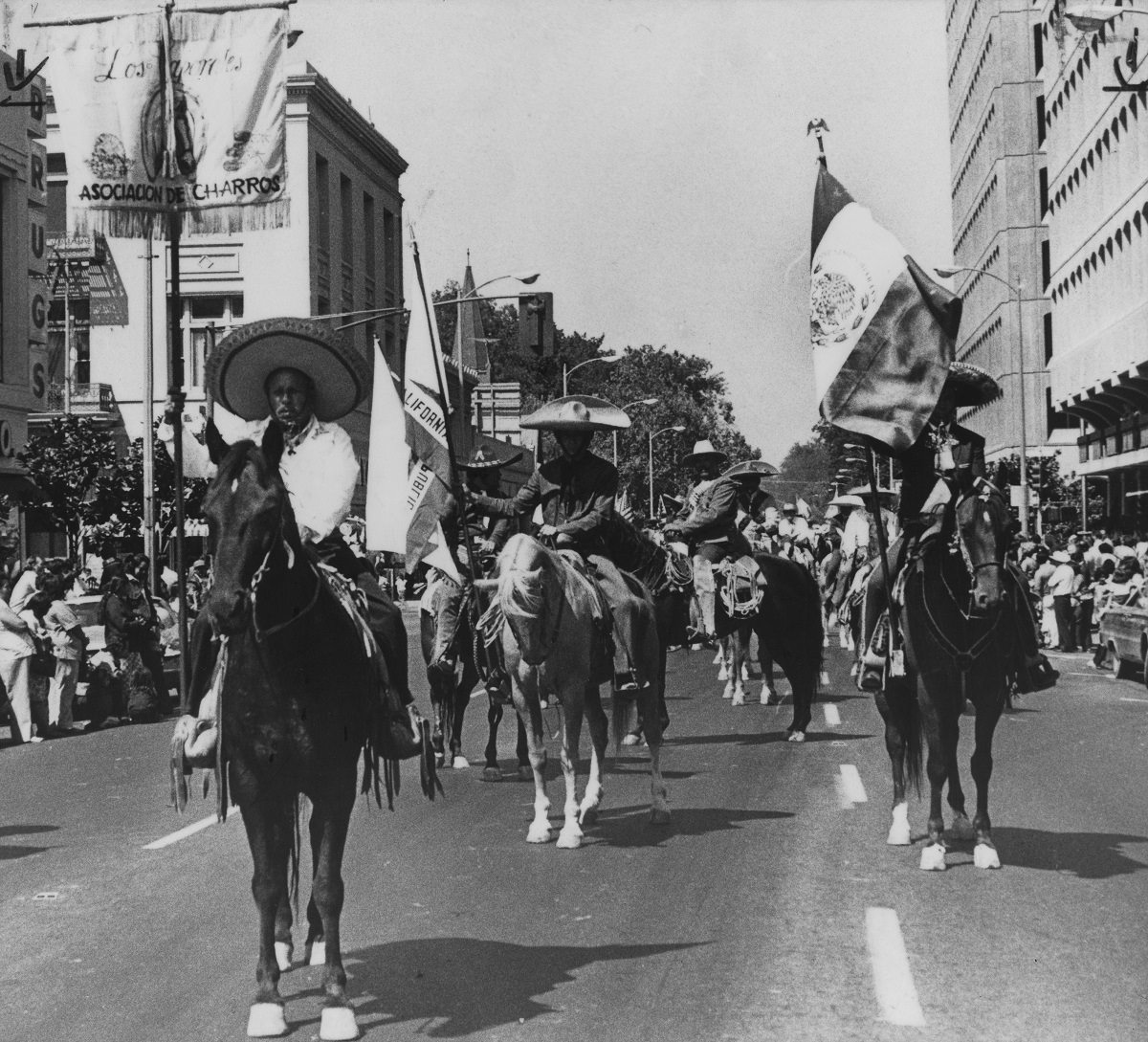
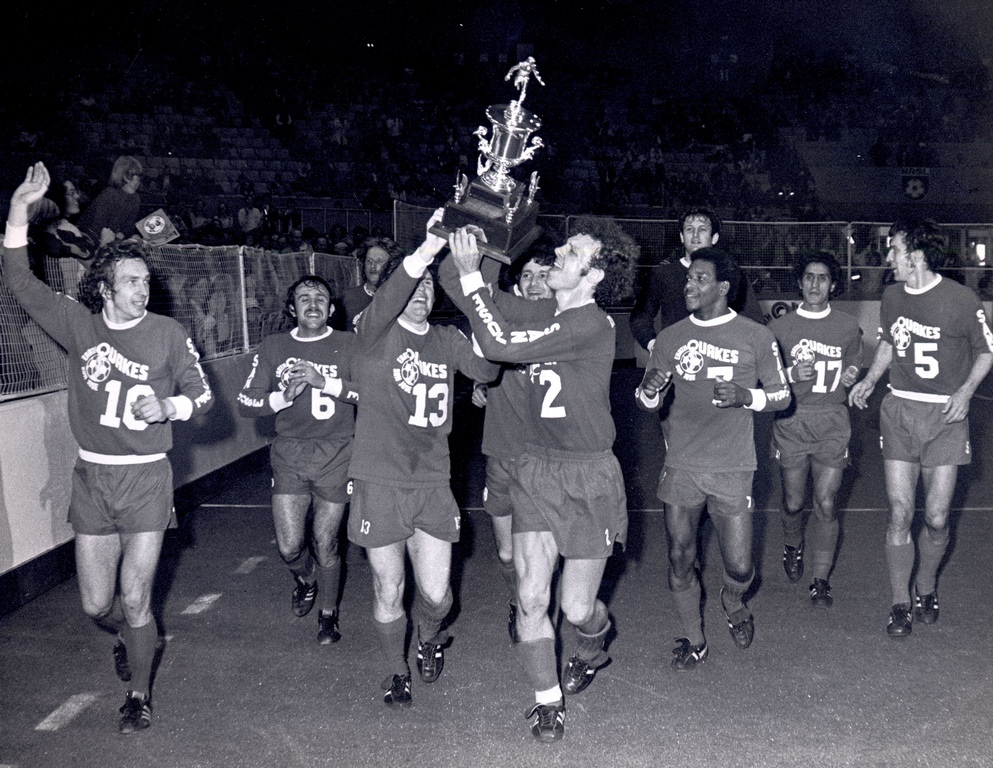
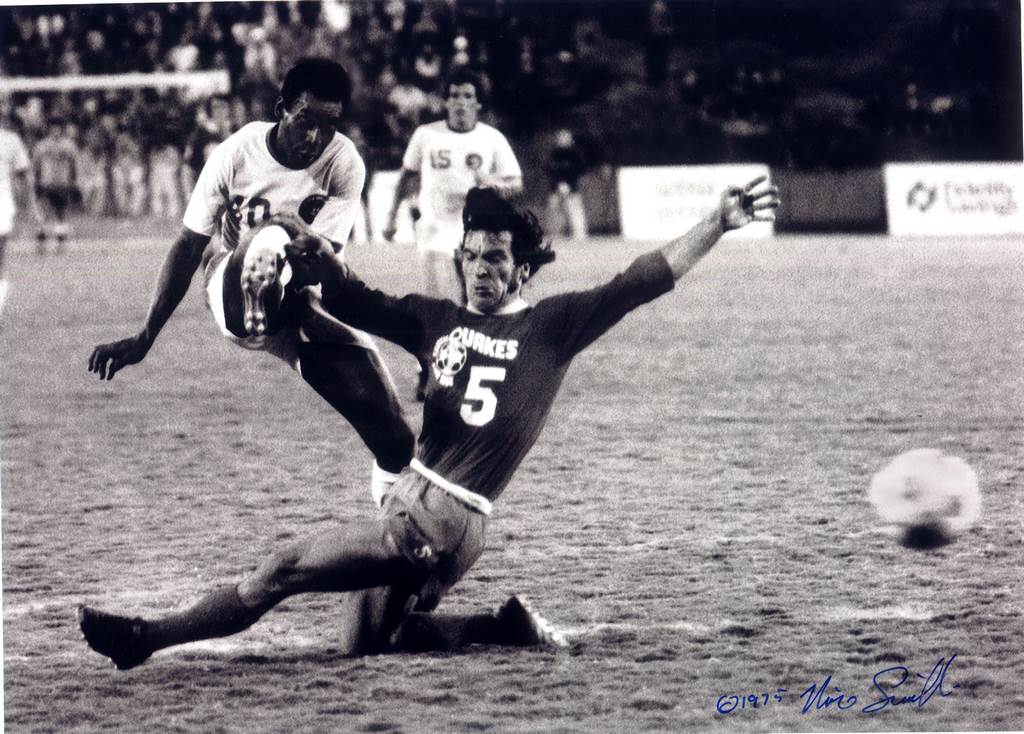
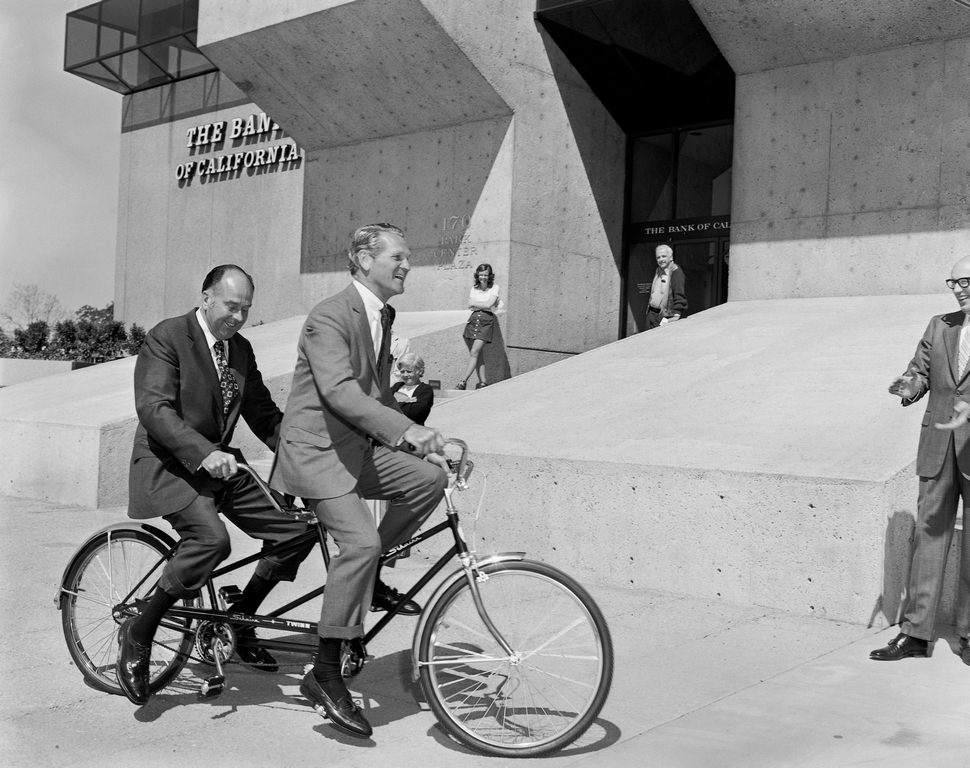
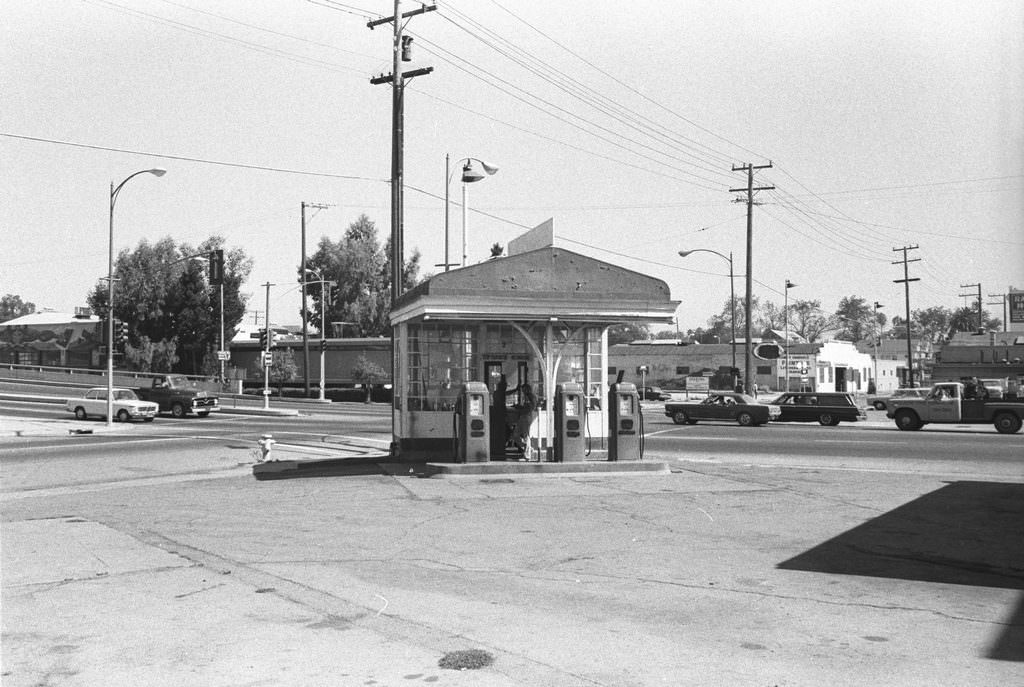
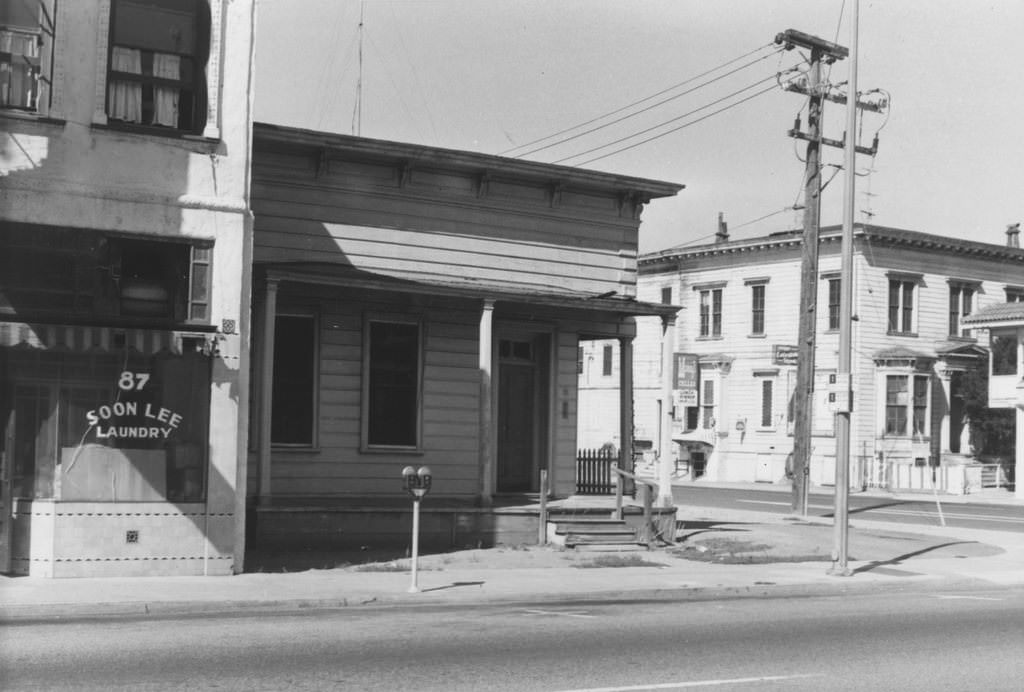
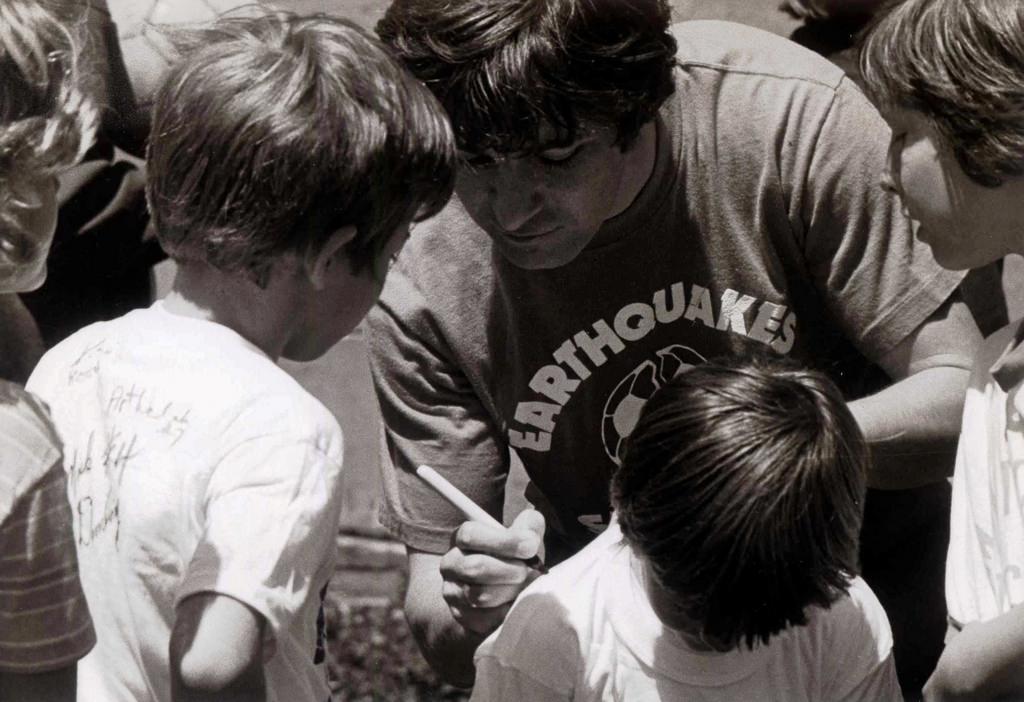
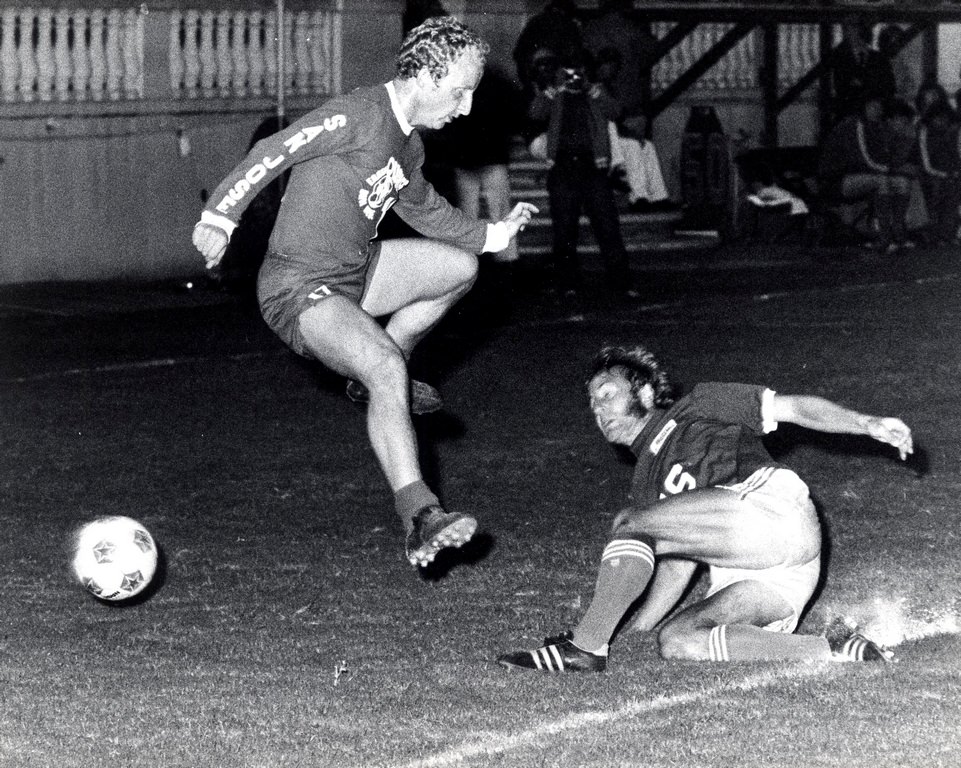
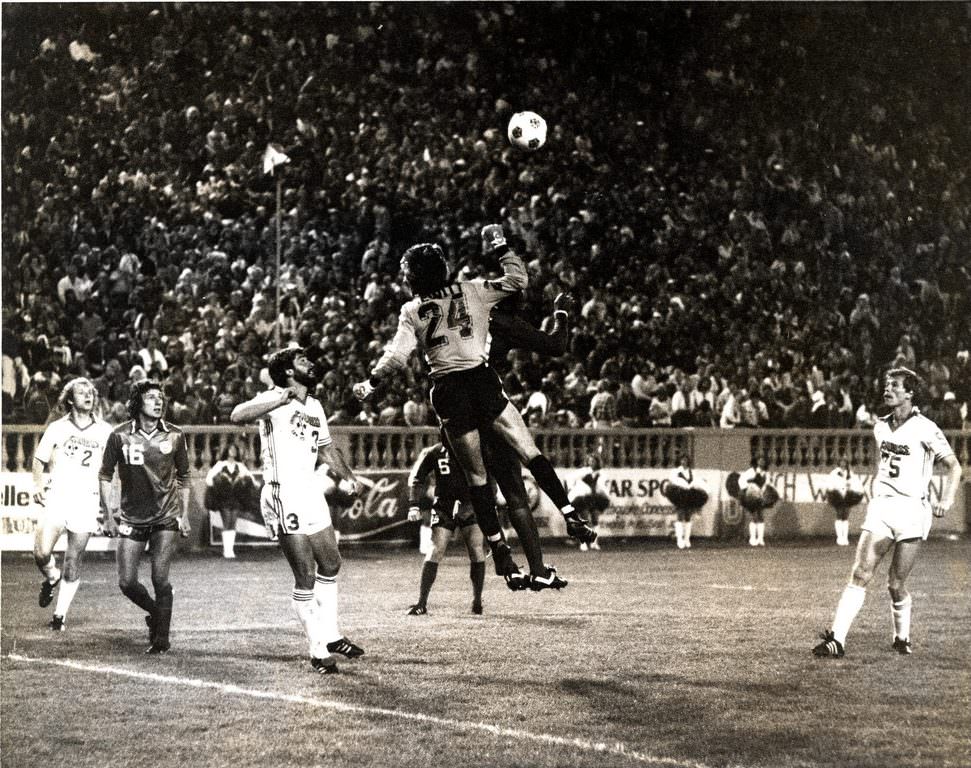
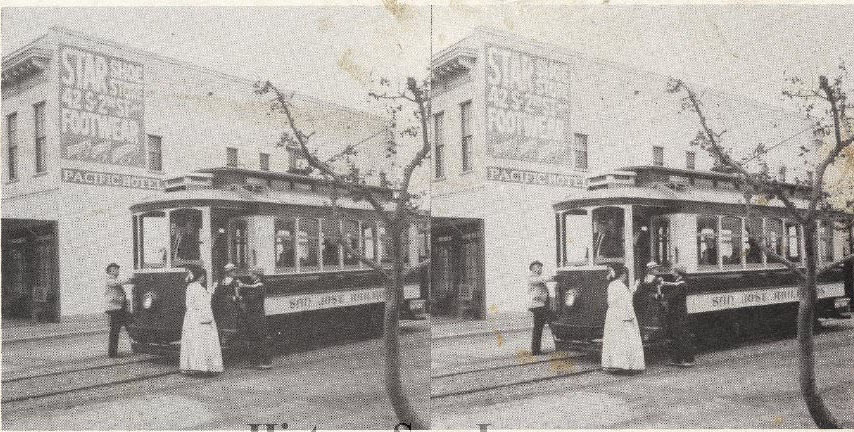
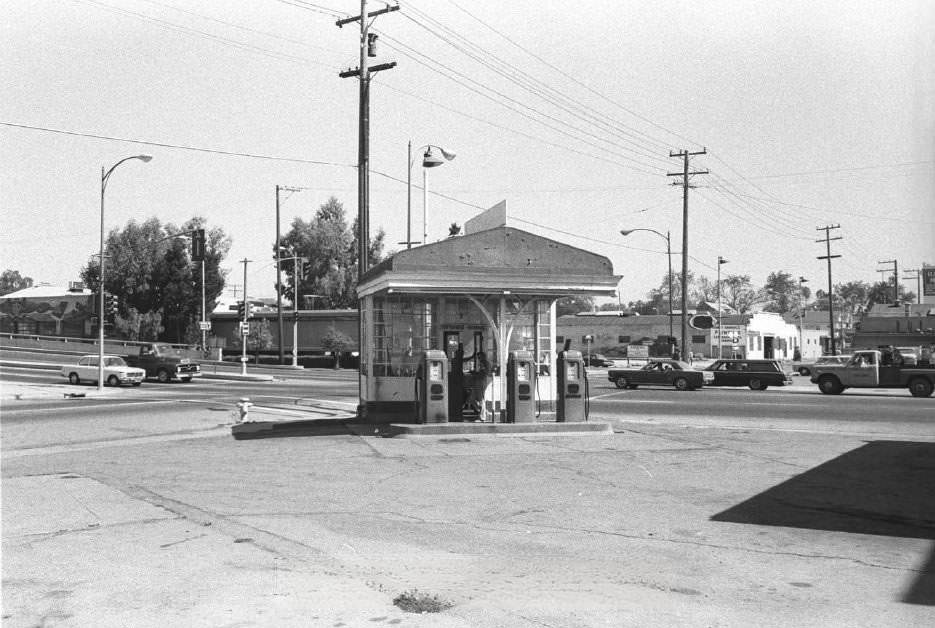

As someone who resided in San Jose during this time period, I must point out that some of these dates are wildly inaccurate
Which ones?
The light tower collapsed in 1915.
The picture of the light tower appears to be a postcard that was likely sold in the 1970s. While there are a few other pictures that resemble postcards, I find the rest of them to be quite accurate.
Some of the dates and locations on those photographs are incorrect.
That’s what happens when you are not native to the city.
It’s disappointing that the author frequently get facts wrong. For example, in 1970, there were no horses, buggies, or Electric Tower, hard as it may be to believe.
It would be fun to revive the light tower by placing a giant laser on top that could shoot a teal beam into the sky whenever the Sharks win, similar to what the Kings are doing in Sacramento. However, as someone pointed out, the pictures allegedly from the 1970s are questionable since the tower fell down in 1915 according to a quick Google search.
Most likely a postcard that was probably sold in the 1970s.
Actually, it seems that those postcards were sold in the 1930s and earlier. I know this because I have a collection of San Jose postcards from the same time period
Be cool to see the ones that you have.
You know, they had color film in the 70s.